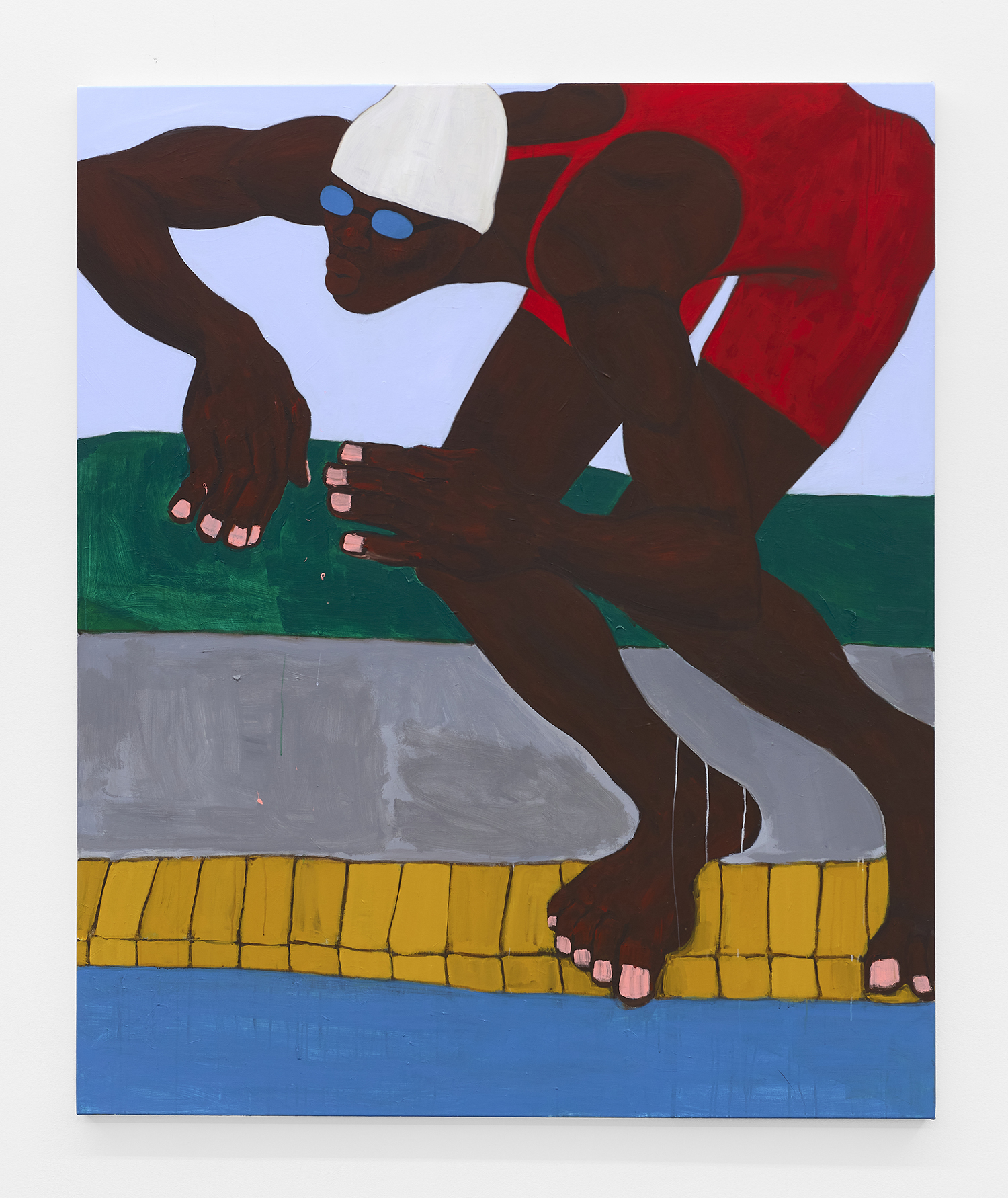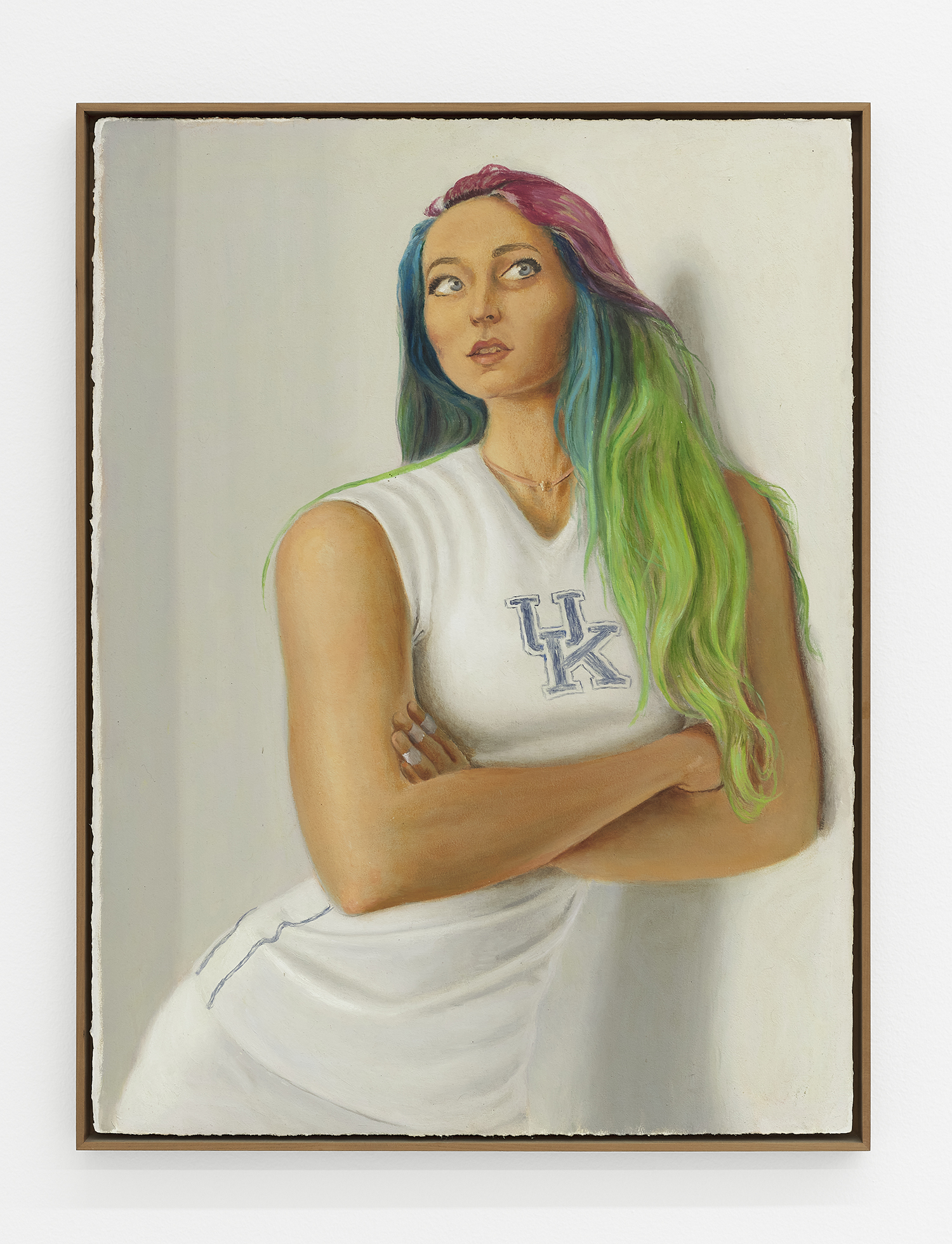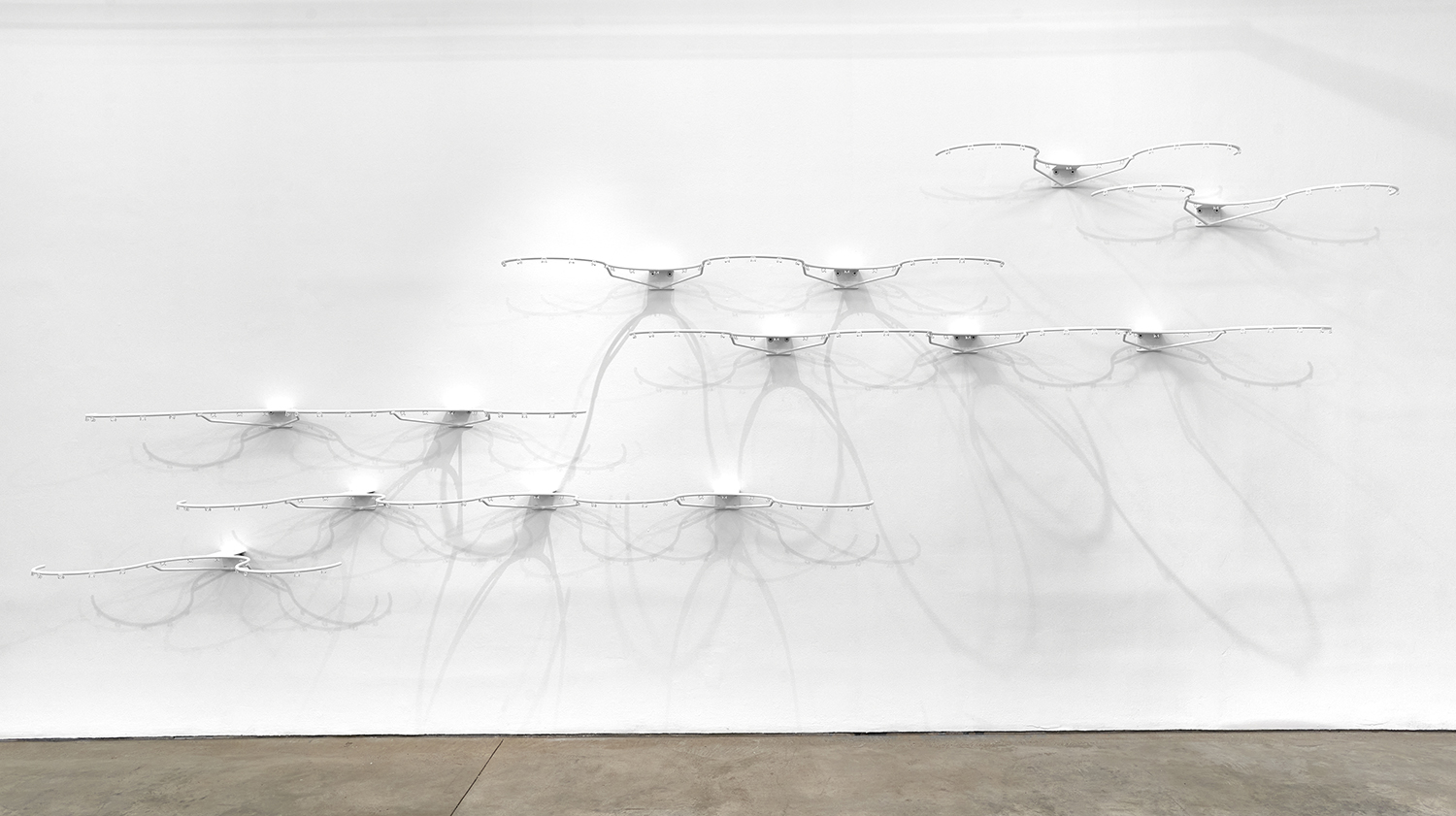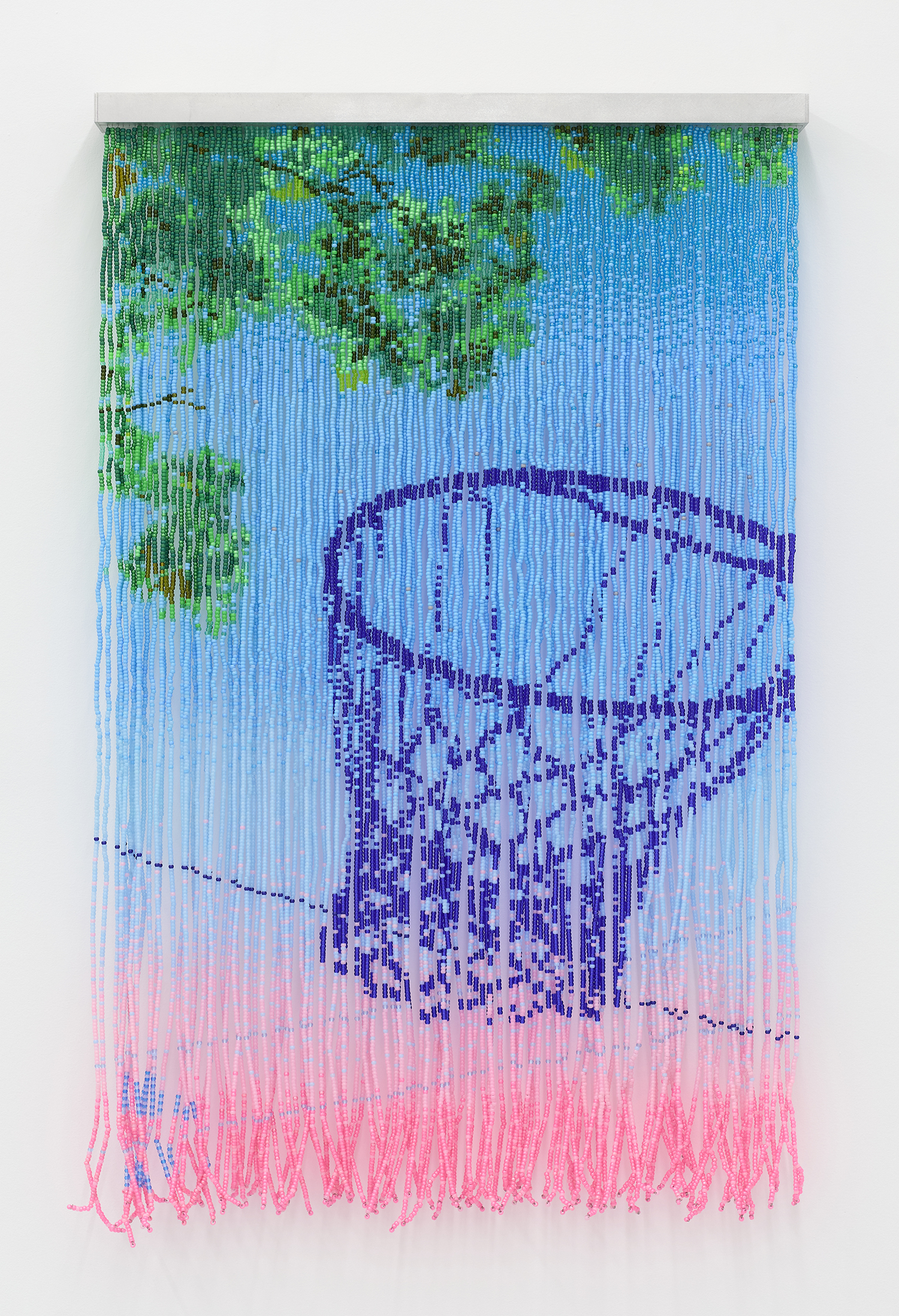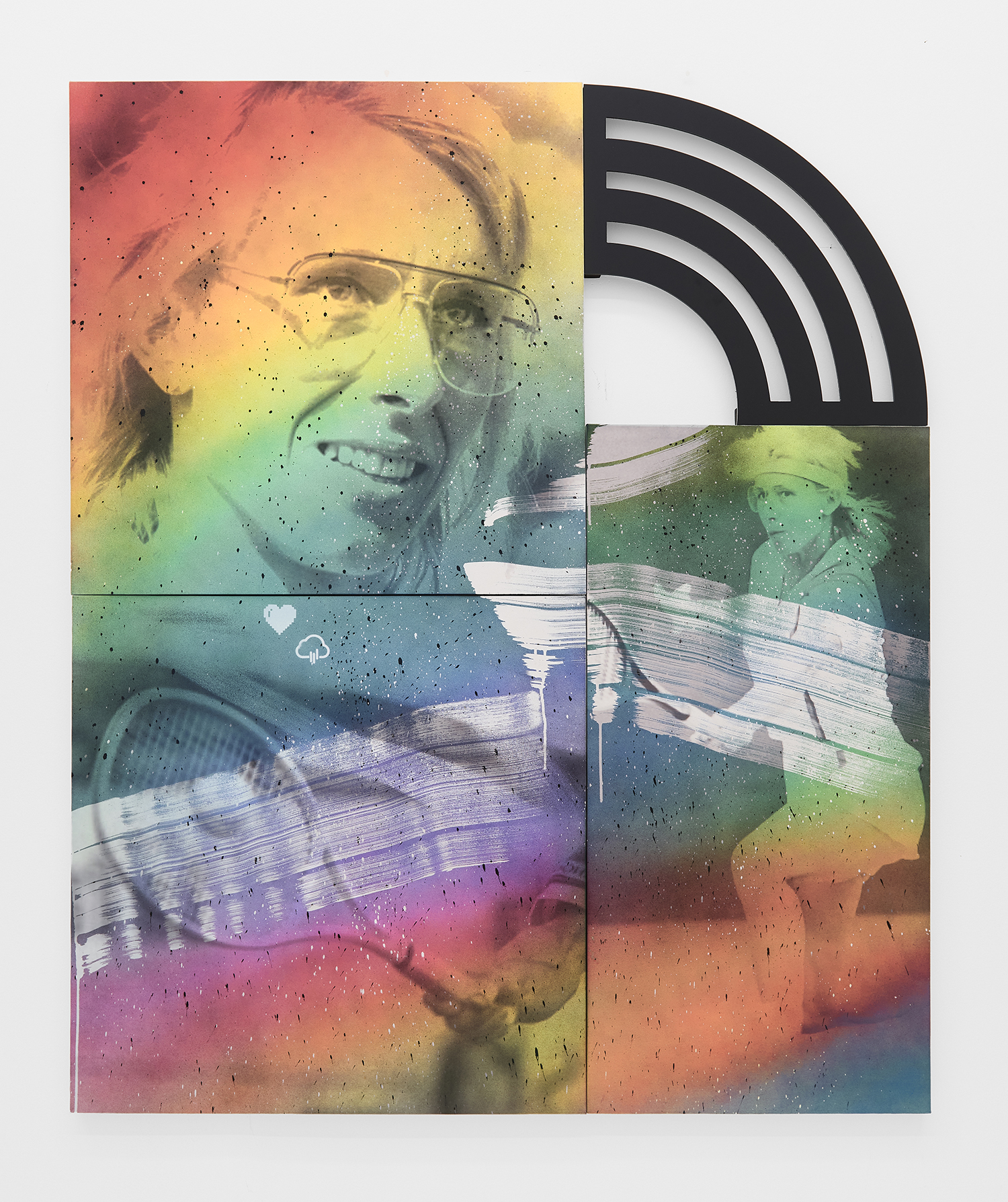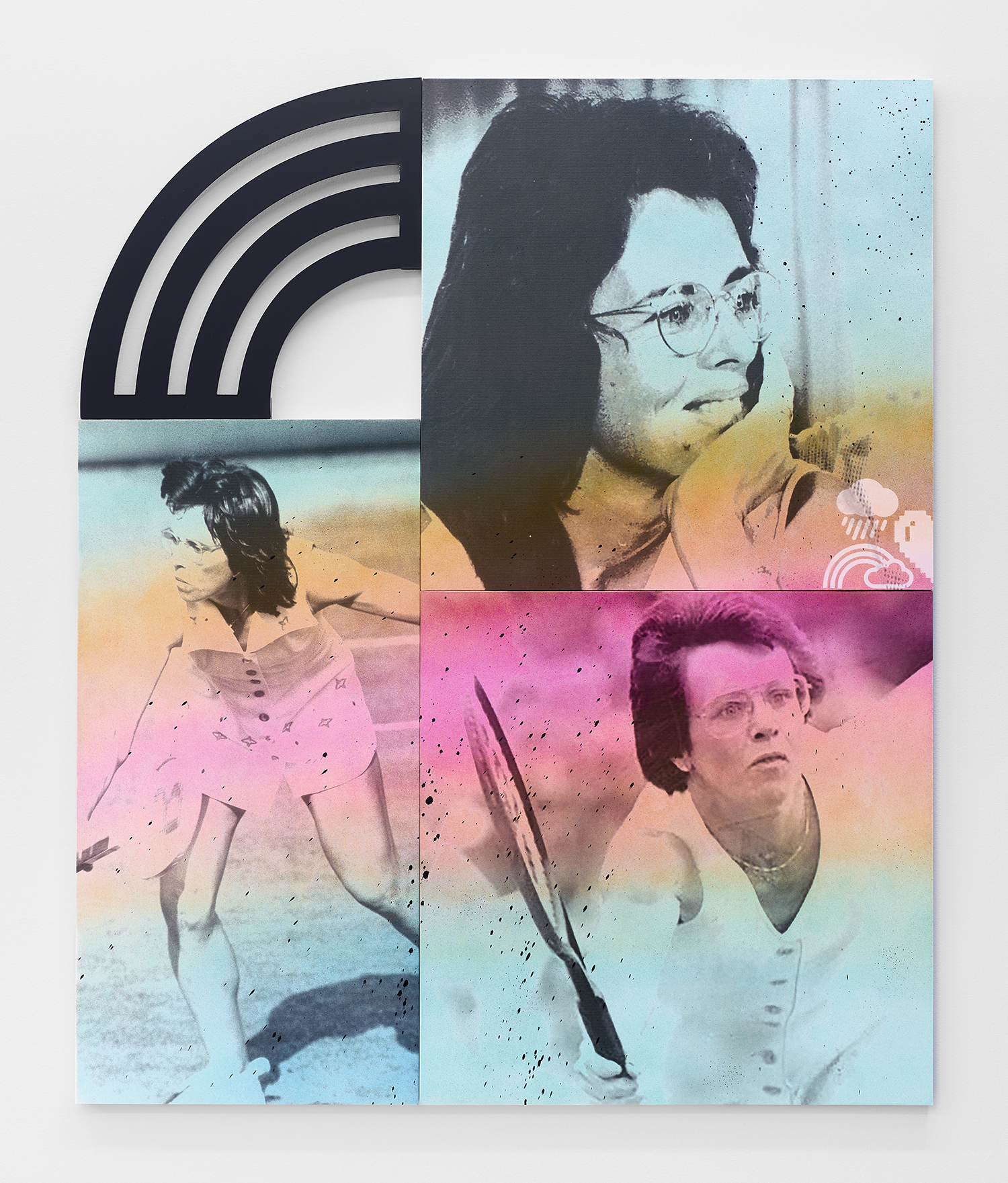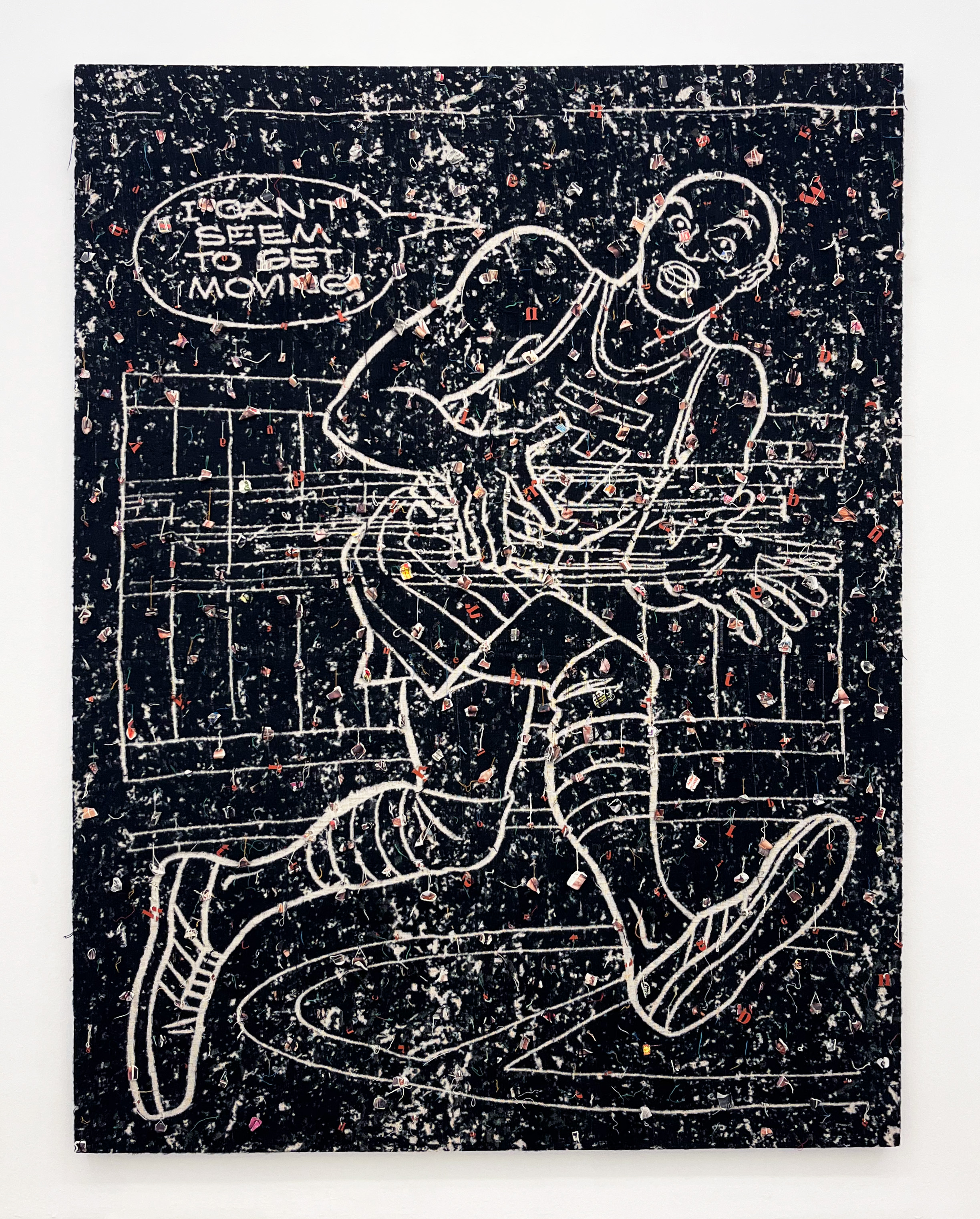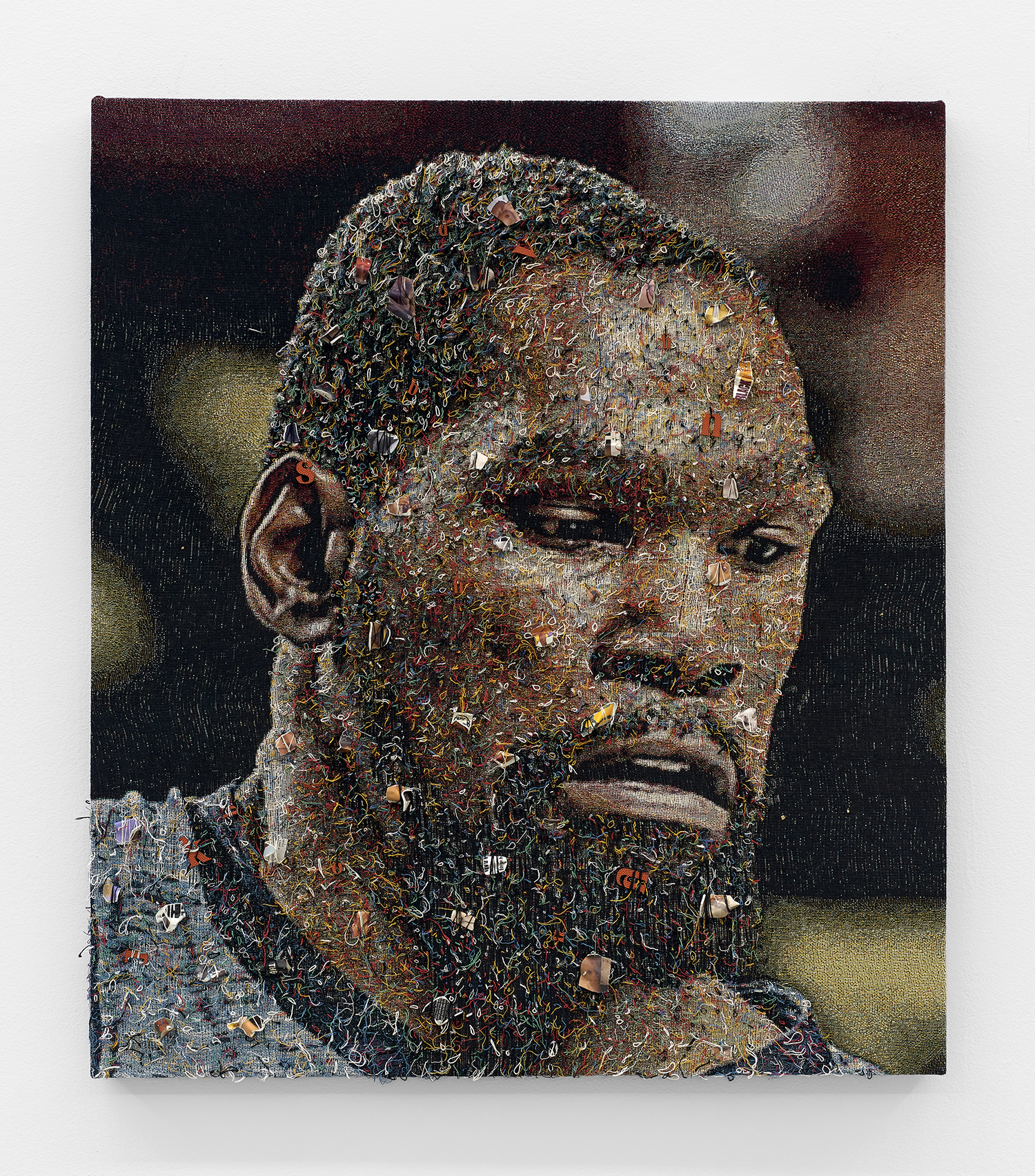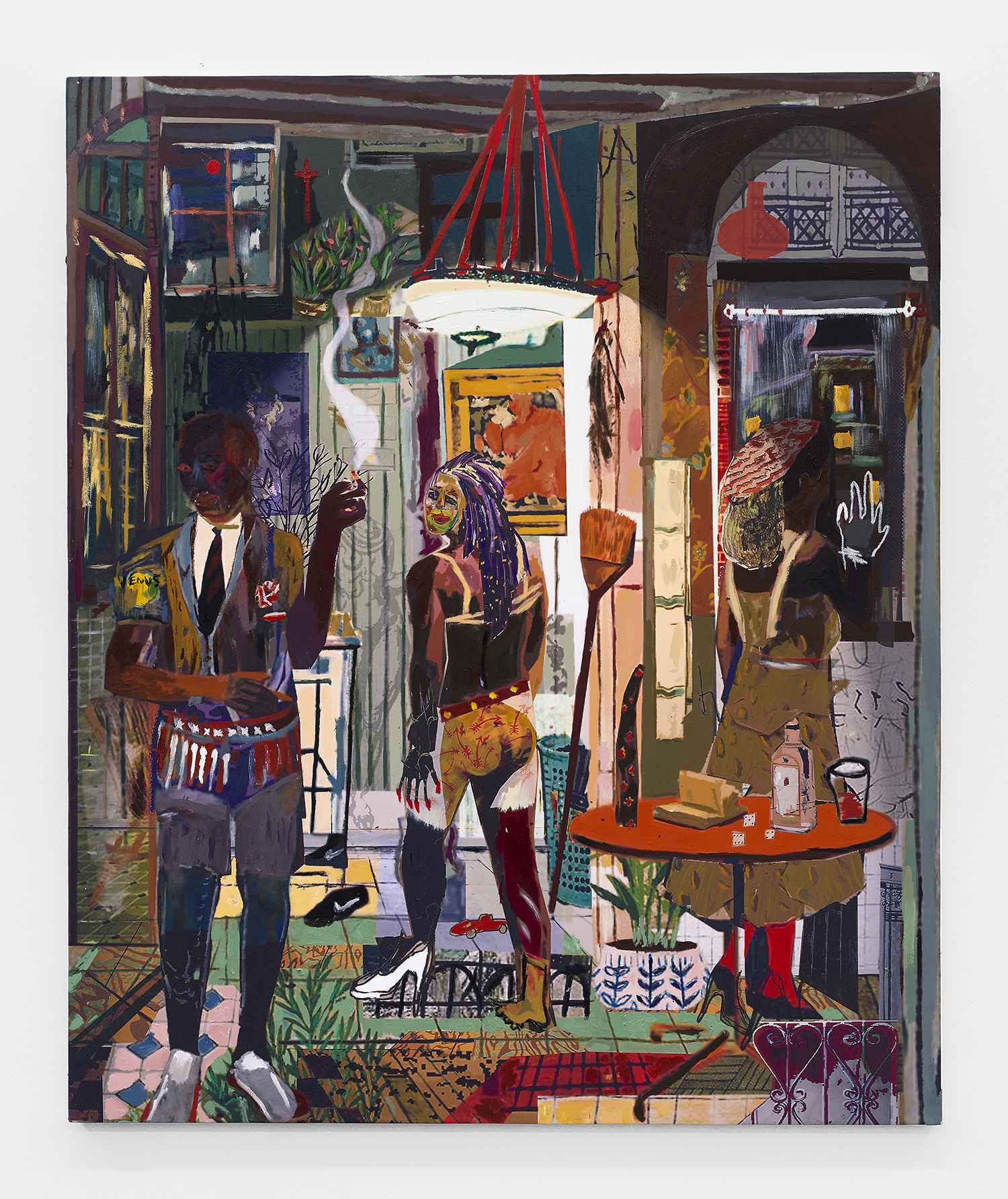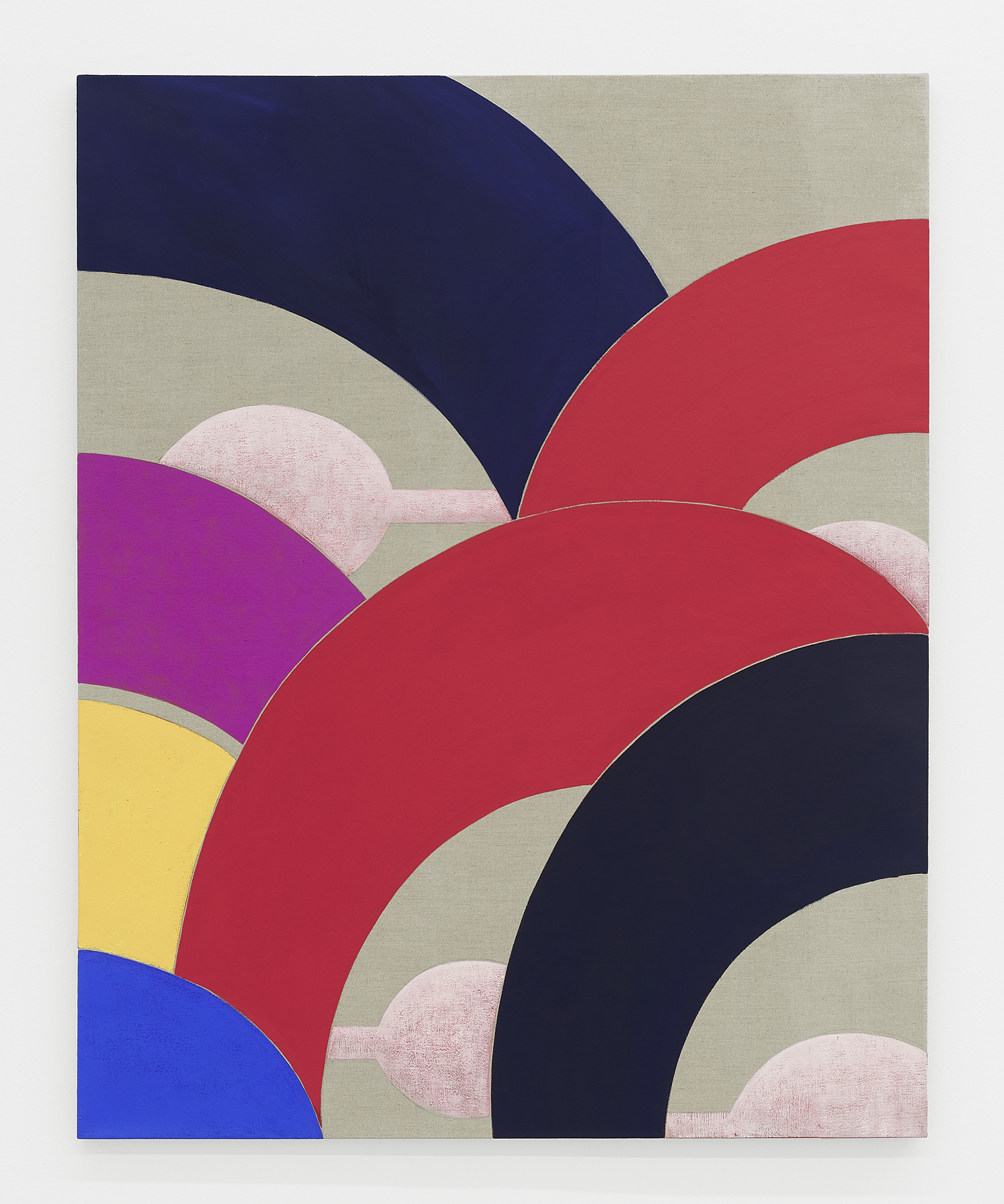Visit the Title IX online viewing room here
Alvin Armstrong, Andrea Bergart, Celia Croft, Didi Rojas, Elena Redmond, Ellen Hanson, Eric Yahnker, Evgen Čopi Gorišek, Fay Sanders, Felandus Thames, Gao Hang, Hamish Chapman, Jansson Stegner, Jake Troyli, Jeremy John Kaplan, Julius Hofmann, Kristine Moran, Laura Nova, Mattia Guarnera-MacCarthy, Max Heiges, Misaki Kawai, Monica Kim Garza, Nikko Washington, Noel W Anderson, Olivier Souffrant, Rachael Bos, Ricardo Partida, Royal Jarmon, Sheena Rose, Quinci Baker and Wendy White.
The Hole is proud to present Title IX a sports-themed group show across our two New York galleries, Bowery and Tribeca, curated by Charlotte Grüssing. The exhibition’s title references the policy that requires educational institutions to treat all sexes and gender identities equally, widely known for its impact on expanding opportunities for women and girls in sports. While celebrating women and historically excluded groups in sports, the exhibit highlights both Title IX’s impacts and shortcomings while more broadly exploring the politics, pleasure and power of sports.
June 23rd, 2023 marks the 51st anniversary of Title IX. When signed into law in 1972 less than 300,000 girls nationwide played high school sports; that number is now more than three million. Despite the monumental impact on participation for women, white women have been the overwhelming beneficiaries while Black female athletes are still underrepresented in most programs. Addressing only one category of bias, and lacking language on the intersectionality of race, sexuality and income, Title IX is just the starting line for a more critical and inclusive look at sports.
From elite gymnastics to tennis and swimming, certain sports are still not commonly associated with Black participation and excellence. In Simone (above) and The Hindrance we see two of the USA’s most decorated female athletes, Simone Biles and Venus Williams who have broken records in predominantly white spaces. In Quinci Baker’s video work The Hindrance we see Williams penalized for beads falling out of her hair during a serve at the Australian Open, a call made by the white male umpire.
It is the bodies not the voices of athletes that most fans care about, yet the voices of athletes are more powerful than ever: when QB Colin Kaepernick knelt during the national anthem as a protest against social injustice, especially the death of African-Americans at the hands of police brutality, his silent protest made global noise and sparked strong reactions from supporters and critics alike. Many believe politics should be kept out of sport ("shut up and dribble”), craving pure entertainment, awe inspiring athleticism, sublime skill and the spectacle of what the human body can achieve. But sport, even during the most nail-biting matches and penalty shoot outs does not exist in a vacuum.
“You want my politics out of sports? Take your politics out of sports.”- Colin Kaepernick
The fascination and objectification of athletes' bodies have long been a major player in sports culture. Across the two galleries we see athletes in all shapes and forms, from Celia Croft's strong female bodybuilder flexing her guns, to Misaki Kawai’s playful tennis-playing teddy. In Die Tennisspierlen, Julius Hoffman points to the sexualisation of the female body in both art history and sports. Hoffman’s title references German Artist Anton Räderscheidt’s 1926 painting, featuring a clothed man watching a nude, female tennis player from behind a fence. Hofmann’s take removes the male voyeur while adding a Nike logo shaved into her pubic hair, transforming her nudity into a branded uniform. In considering apparel worn in competition, female athletes have historically worn much skimpier uniforms than men, enforced both by regulations set by men and intended to inspire viewership by men. In Real Girls Playing Real Golf, Elena Redmond depicts the very real, very practical attire of two female golfers, topless and shoeless.
Title IX is currently in the news with respect to gender identity. In the last two years, at least eighteen states have introduced or passed laws to ban transgender and nonbinary students from competing in sports. The Biden administration has proposed amendments which have divided the athletic community. Wendy White paints the debate depicting Billie Jean King who proudly supports the inclusion of trans athletes as well as Martina (c. 1981; Retitled), Martina Navratilova who has championed women's sport yet opposes the inclusion of Trans Athletes.
The struggles and stereotypes, trends and triumphs we see play out in sports reflect what we see at scale in the arena of the everyday. Like in sports there are opposing sides, unfair advantages and obstacles to participation. There is also much to celebrate; victory laps to be had and pride to be taken.
Thank you Anna Zorina Gallery, Daniel Faria Gallery, Galerie Droste, Johansson Projects, Kendall Koppe, Monique Meloche, Nino Mier Gallery, Stems Gallery, Tchotchke Gallery, and V1 Gallery.
For more information email sales@thehole.com
BOWERY
LIST OF BOWERY ARTISTS: Alvin Armstrong, Andrea Bergart, Eric Yahnker, Celia Croft, Mattia Guarnera MaCcarthy, Didi Rojas, Elena Redmond, Ellen Hanson, Evgen Čopi Gorišek, Fay Sanders, Felandus Thames, Gao Hang, Jake Troyli, Julius Hofmann, Max Heiges, Misaki Kawai, Monica Kim Garza, Nikko Washington, Noel W Anderson, Olivier Souffrant, Rachael Bos, and Ricardo Partida
INSTALL SHOTS BOWERY
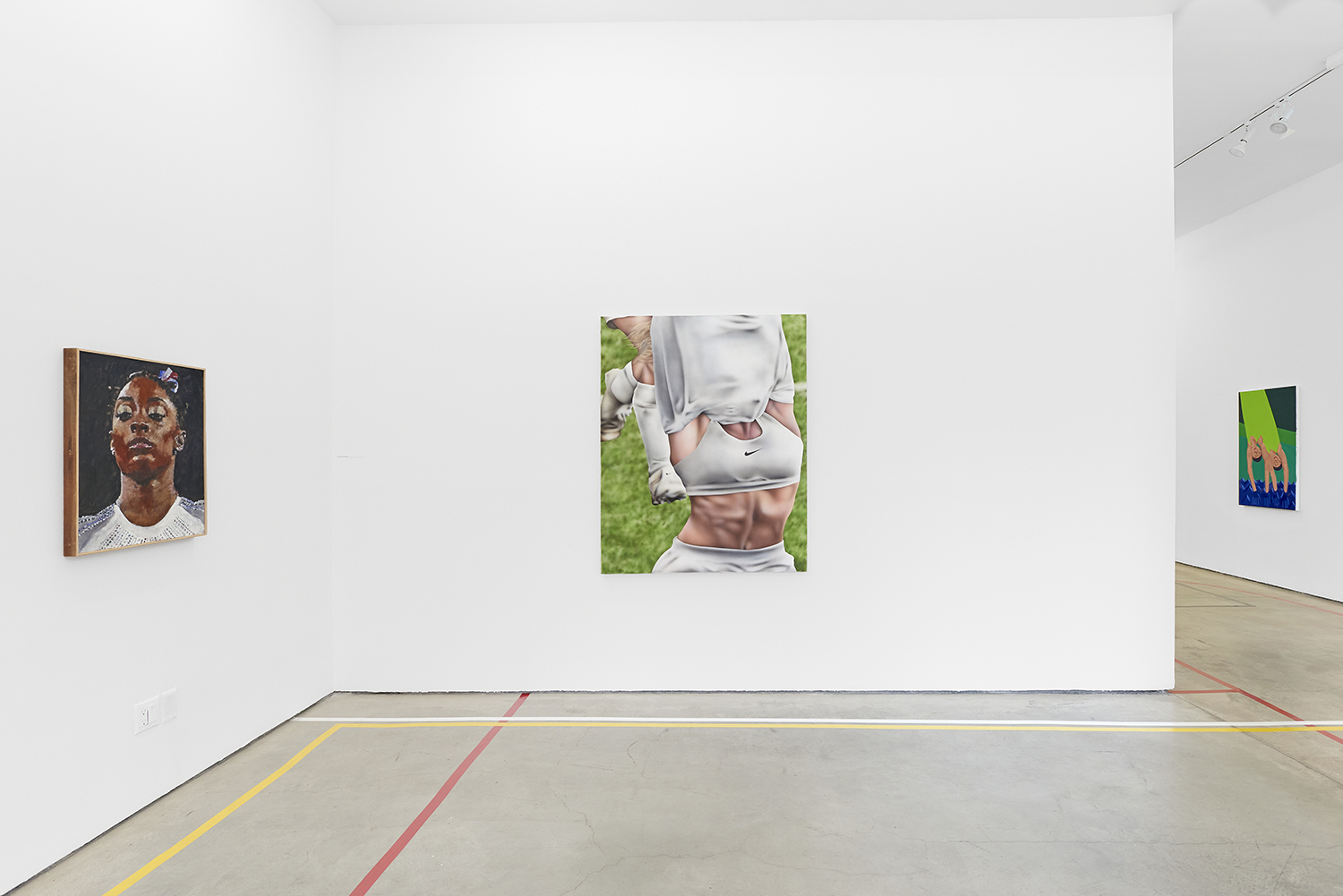
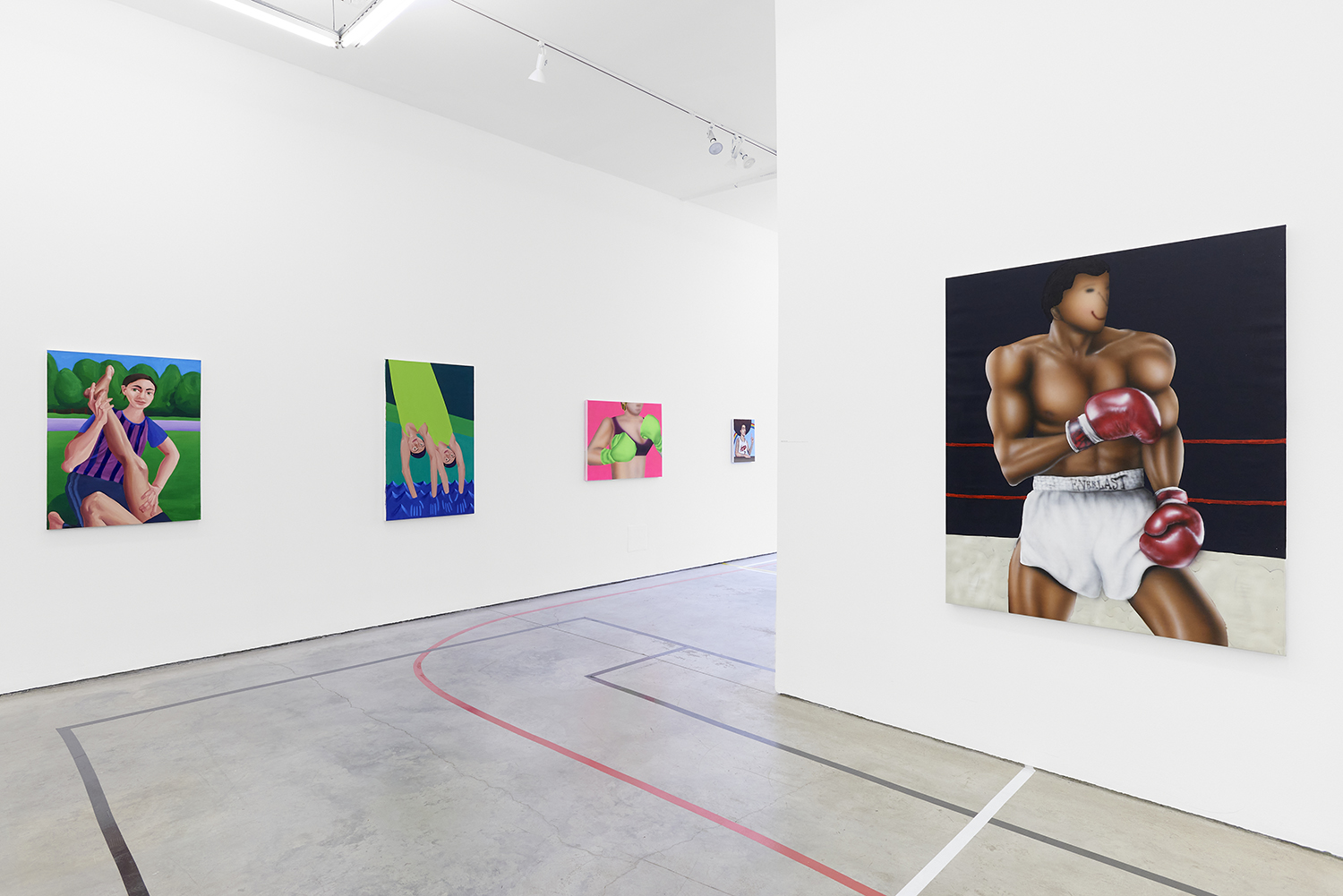
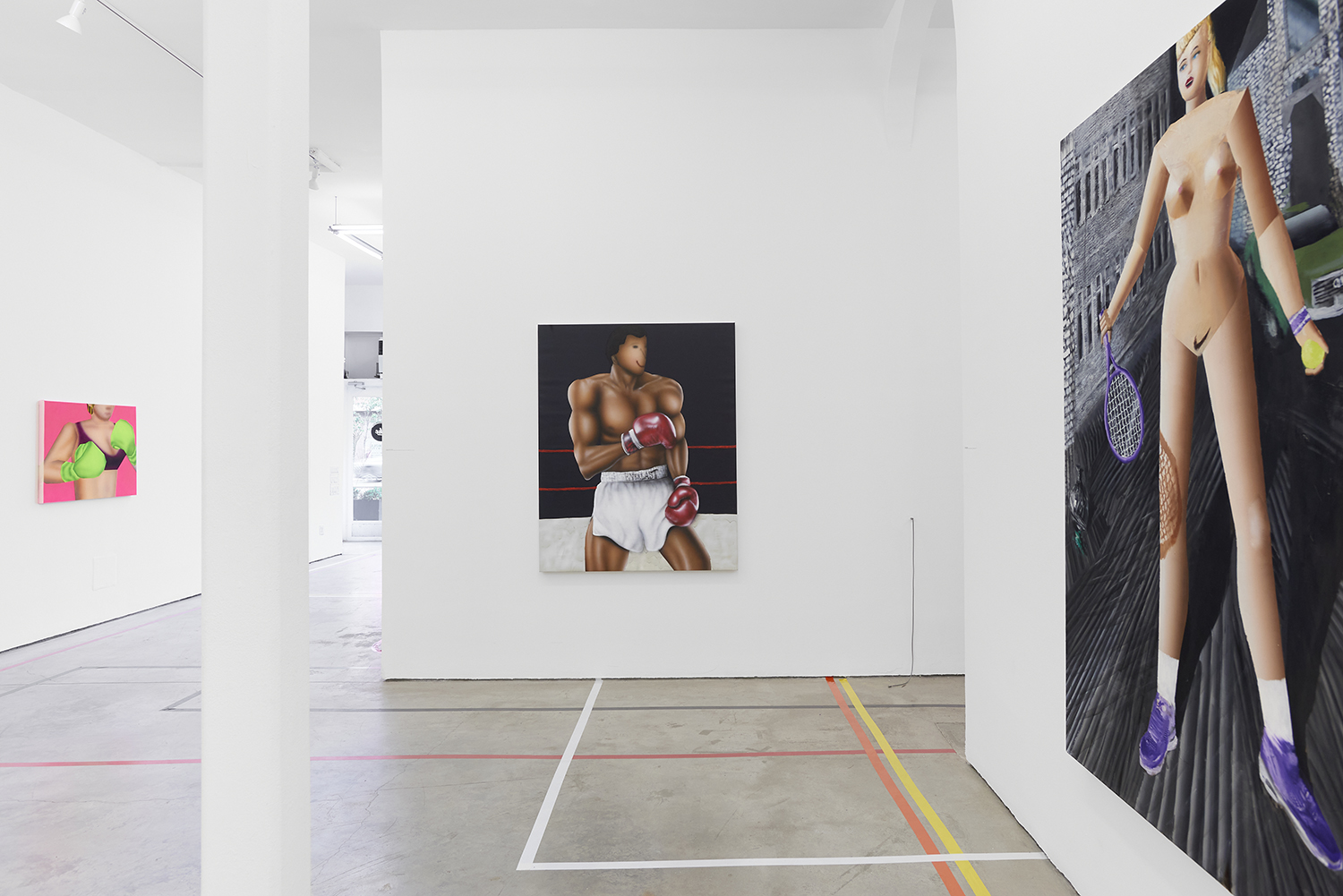
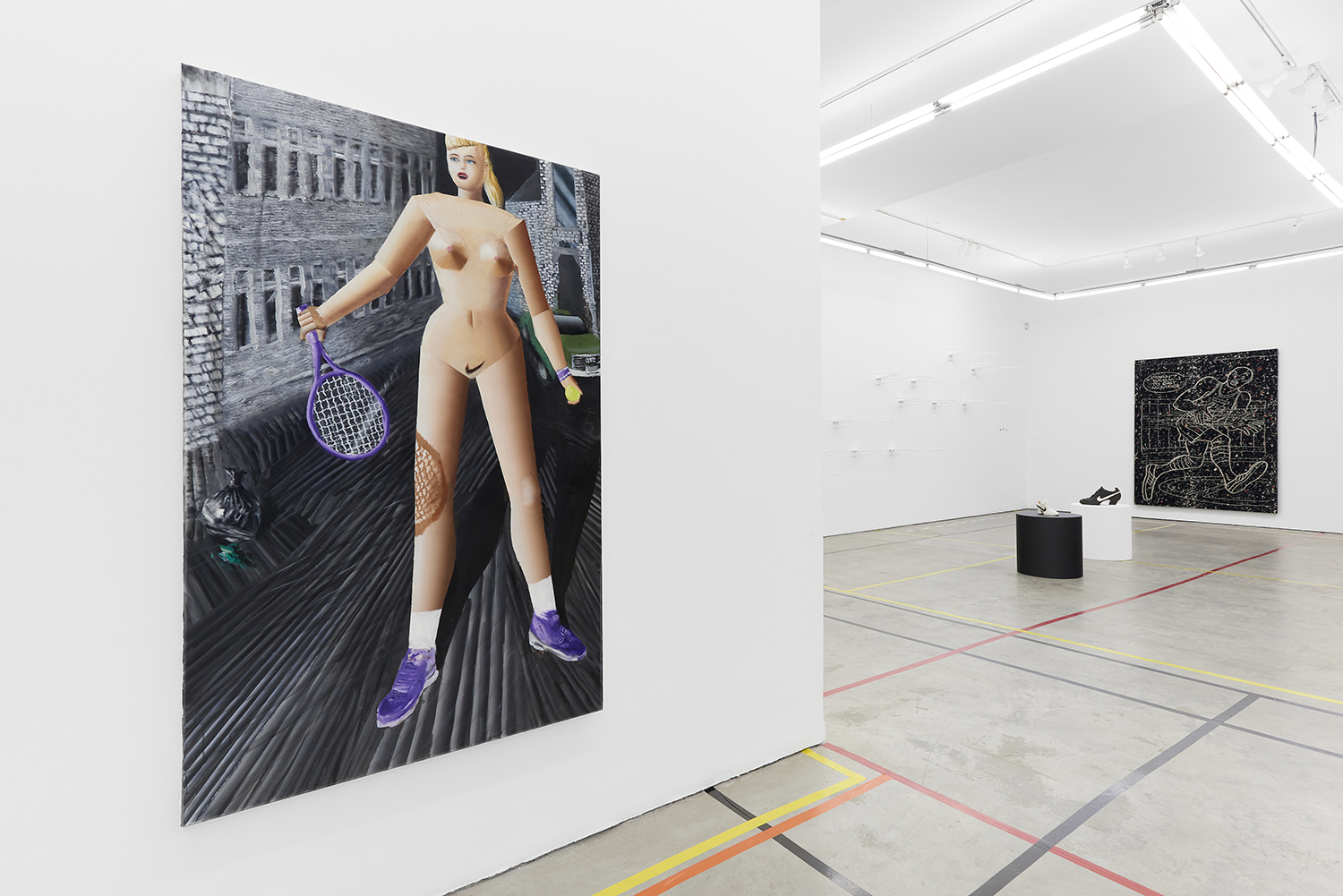
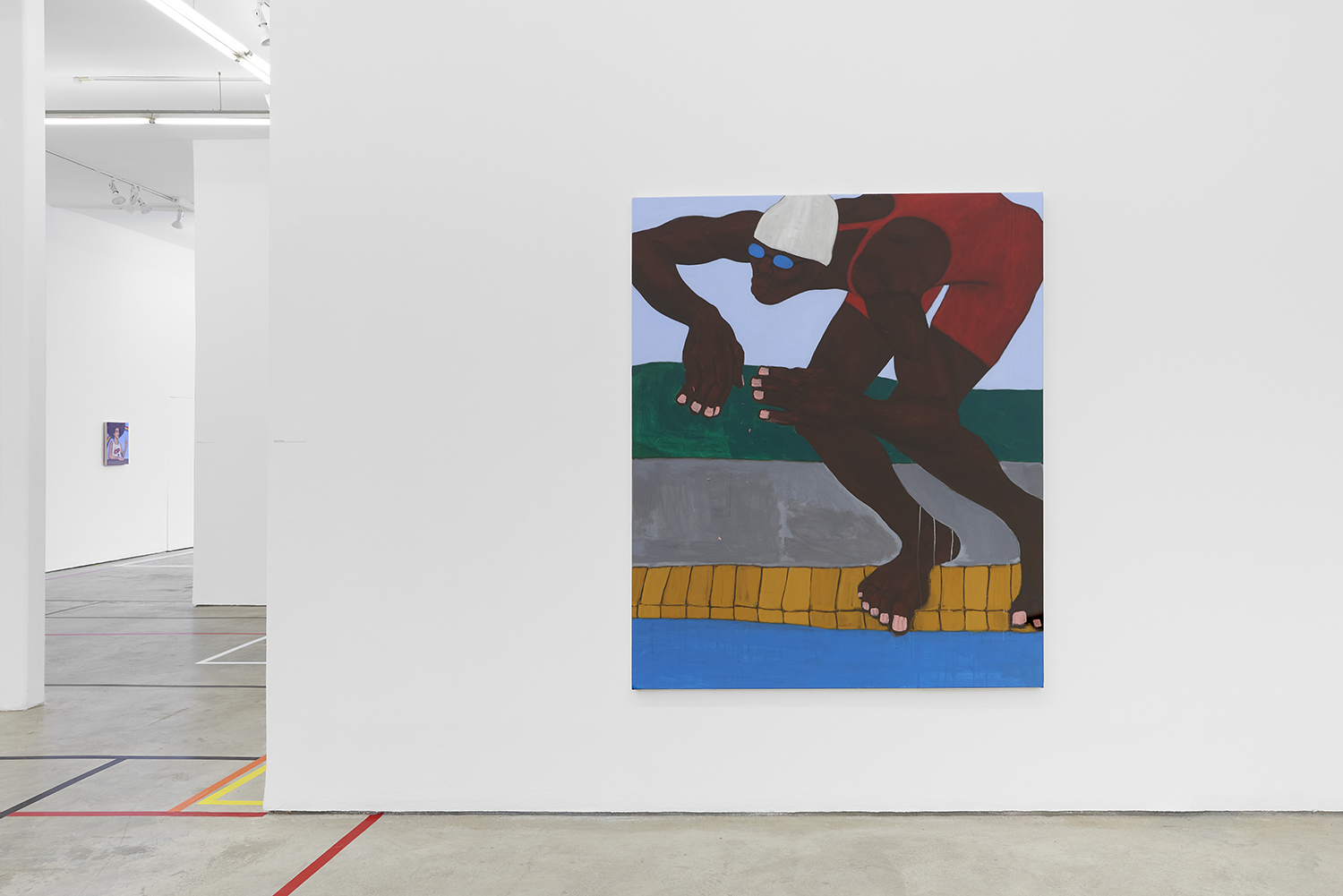
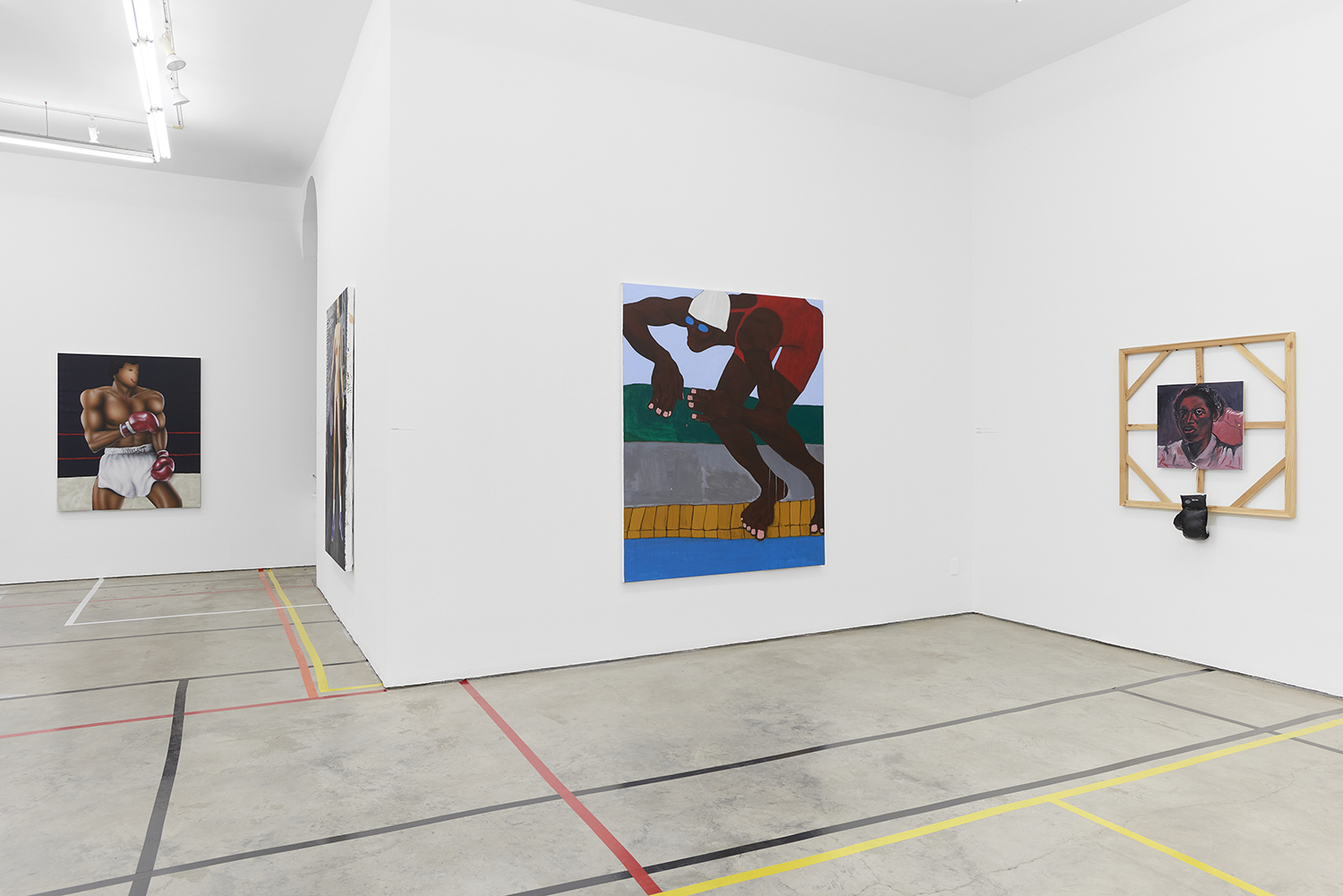
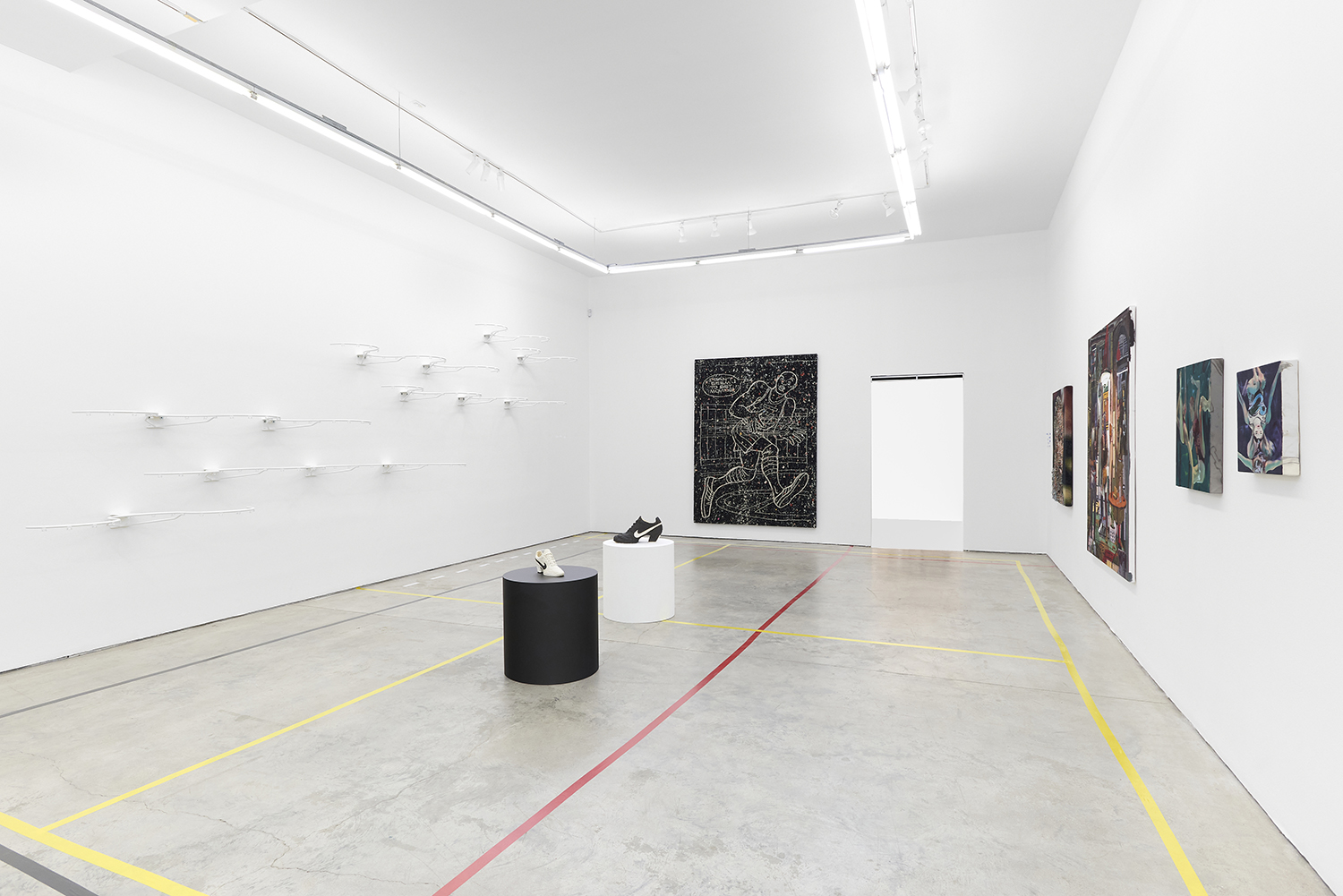
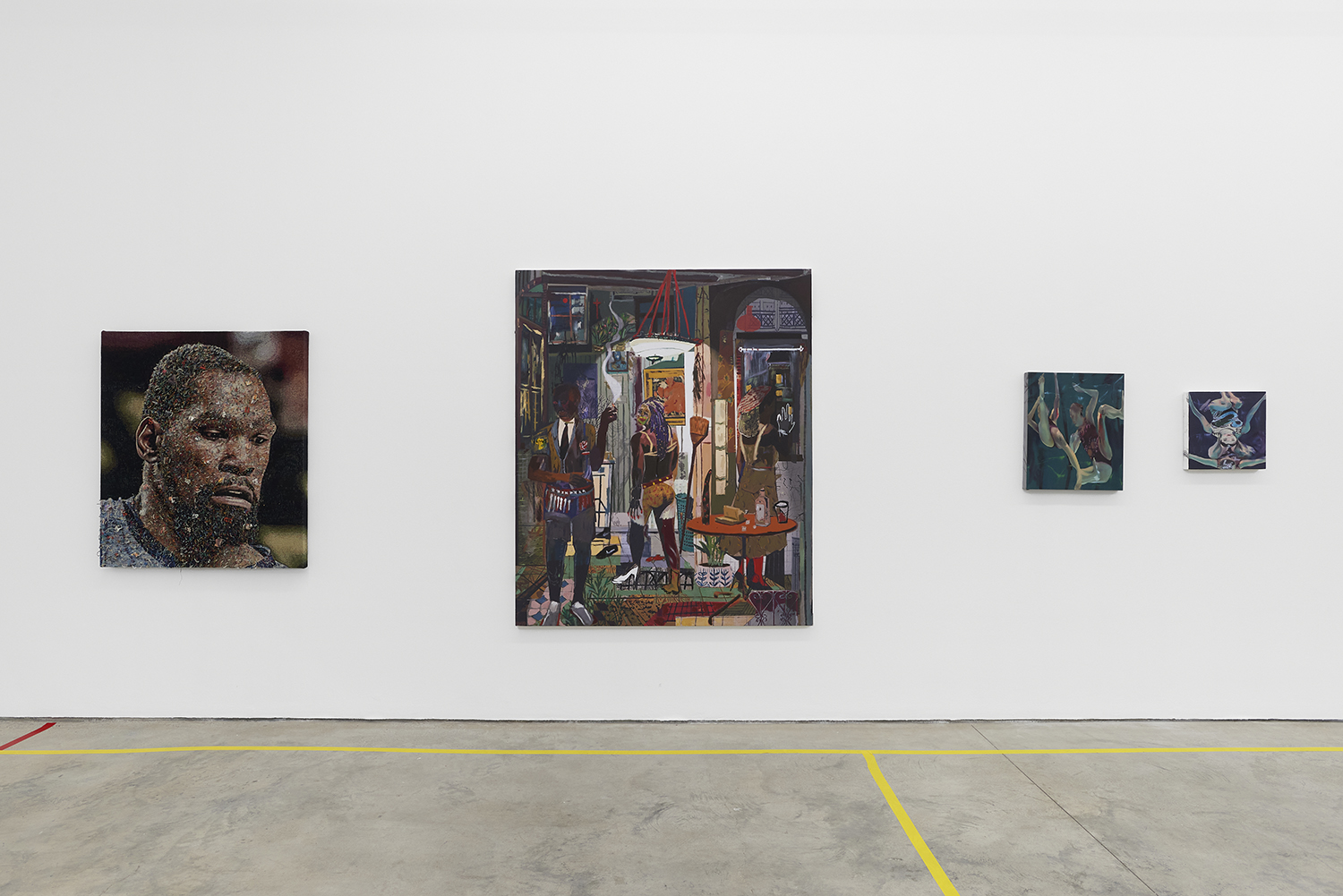

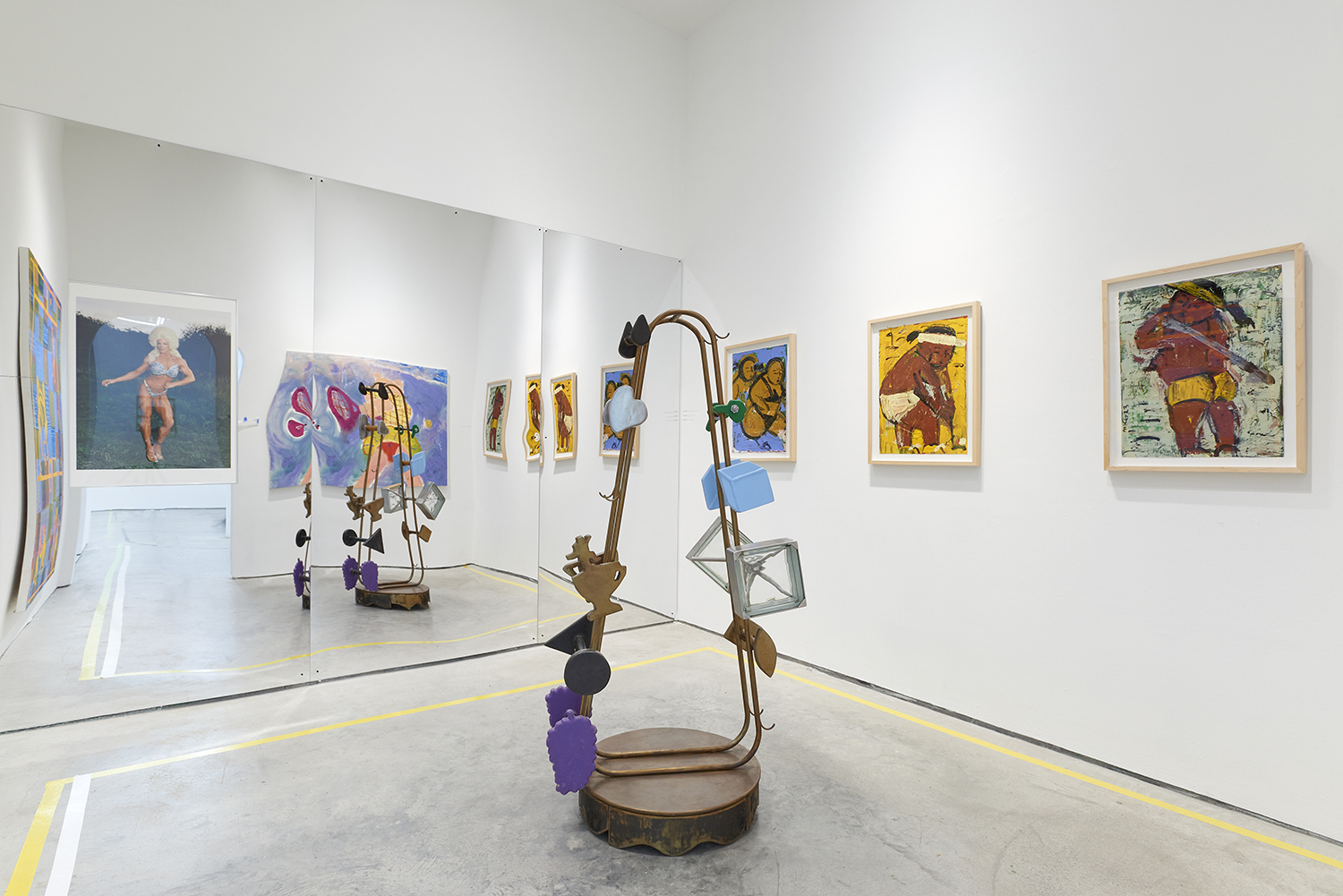
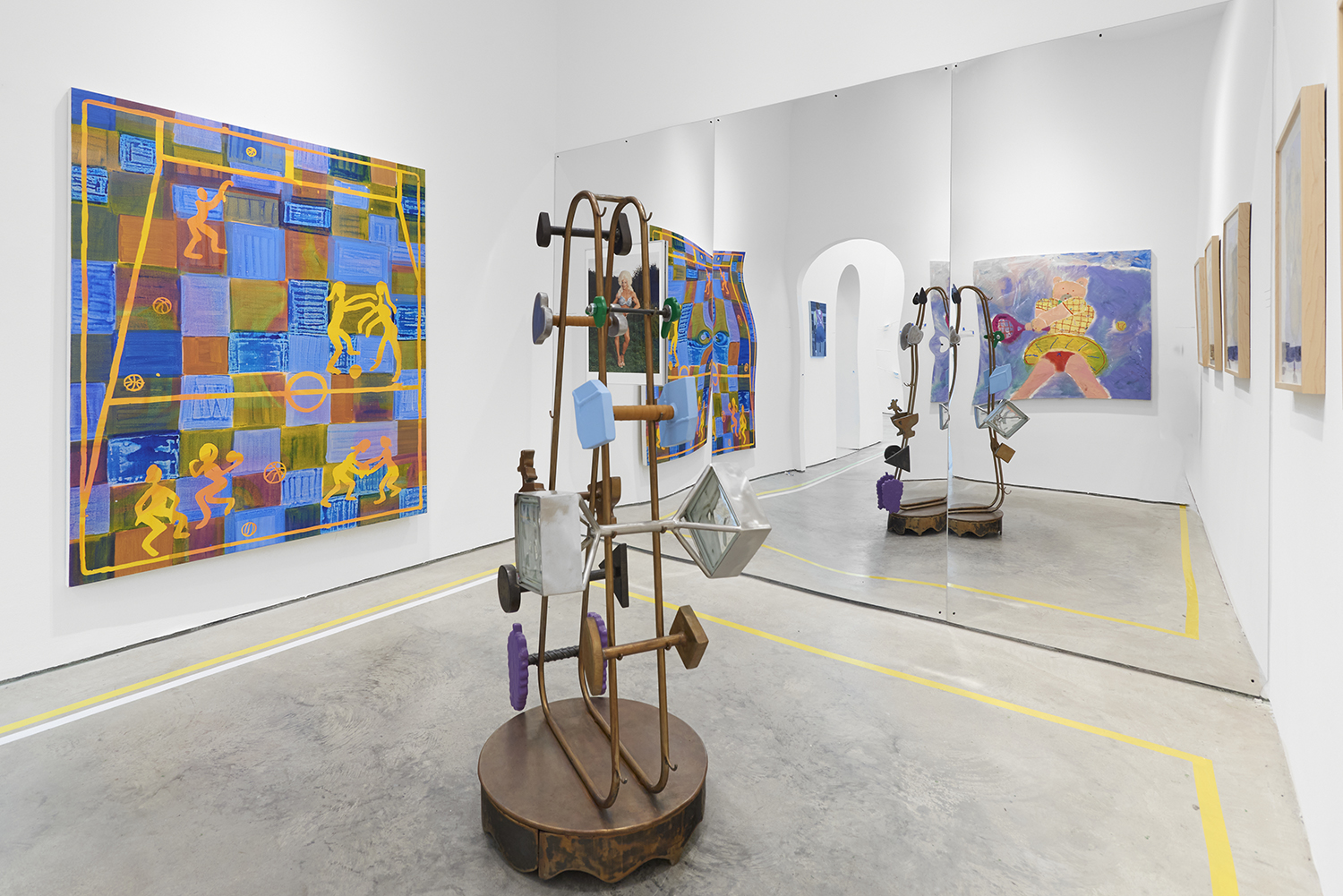
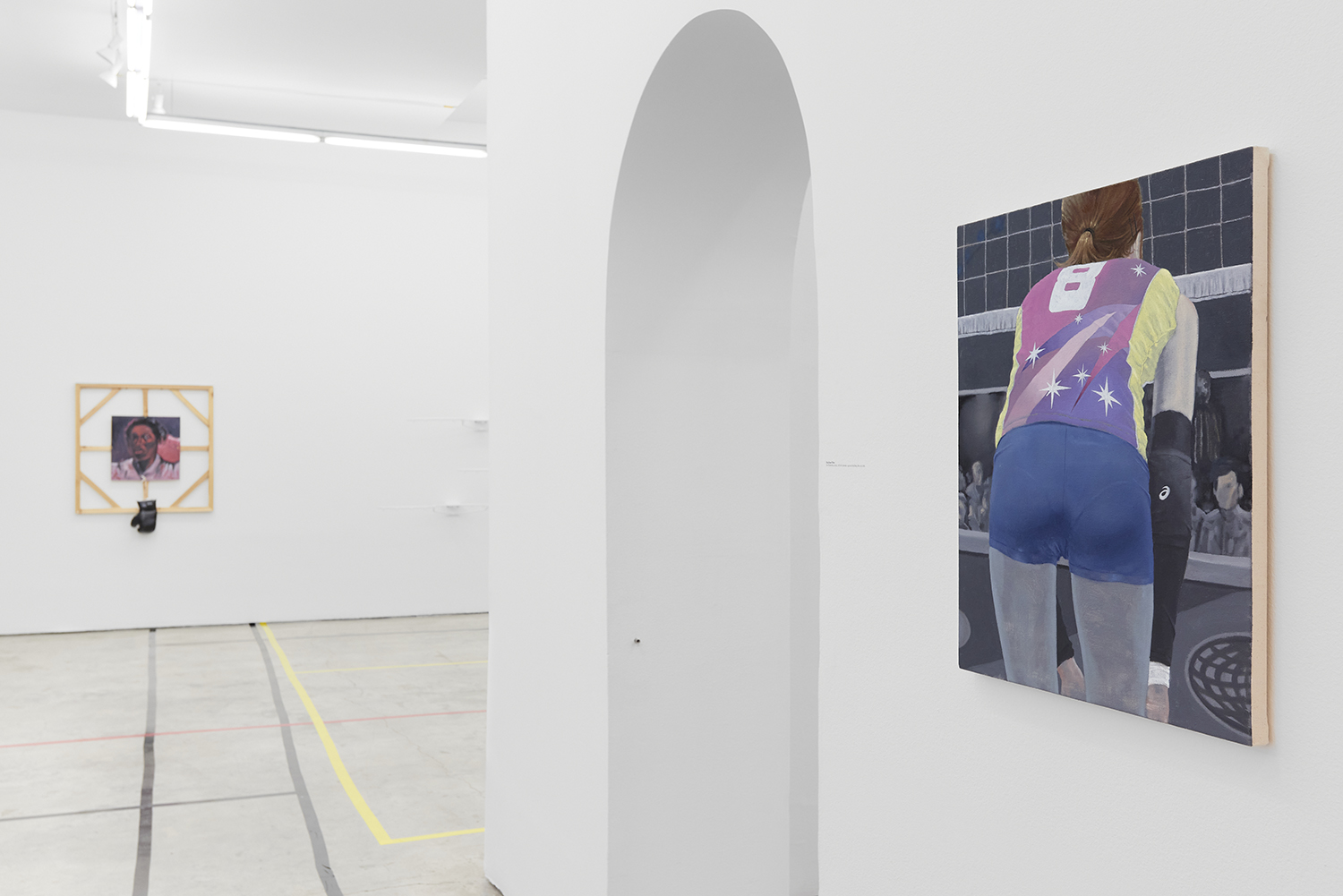
TRIBECA
LIST OF TRIBECA ARTISTS: Evgen Čopi Gorišek, Felandus Thames, Gao Hang, Hamish Chapman, Jansson Stegner, Jeremy John Kaplan, Kristine Moran, Laura Nova, Mattia Guarnera MaCcarthy, Quinci Baker, Rachael Bos, Royal Jarmon, Sheena Rose, and Wendy White
INSTALL SHOTS TRIBECA
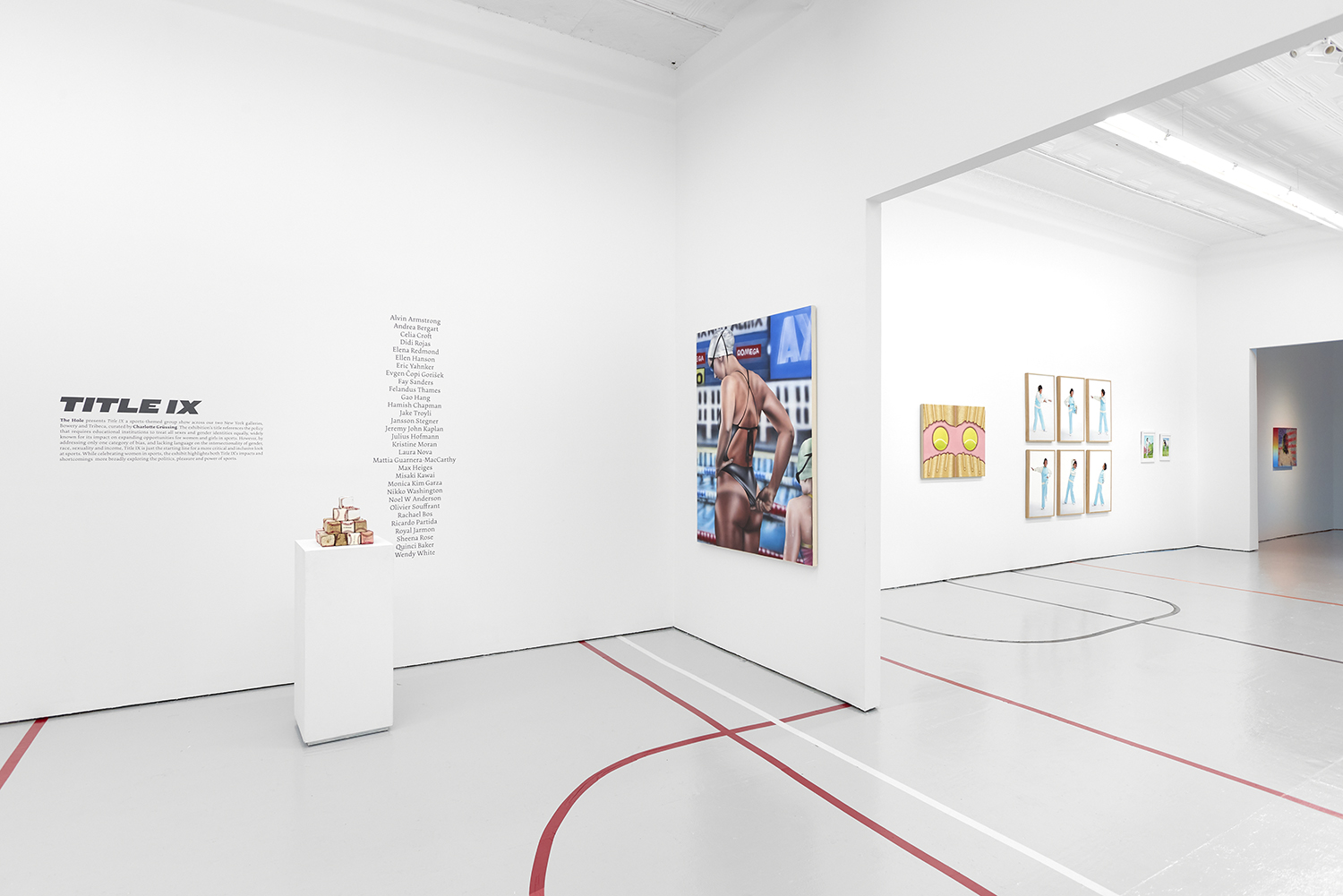
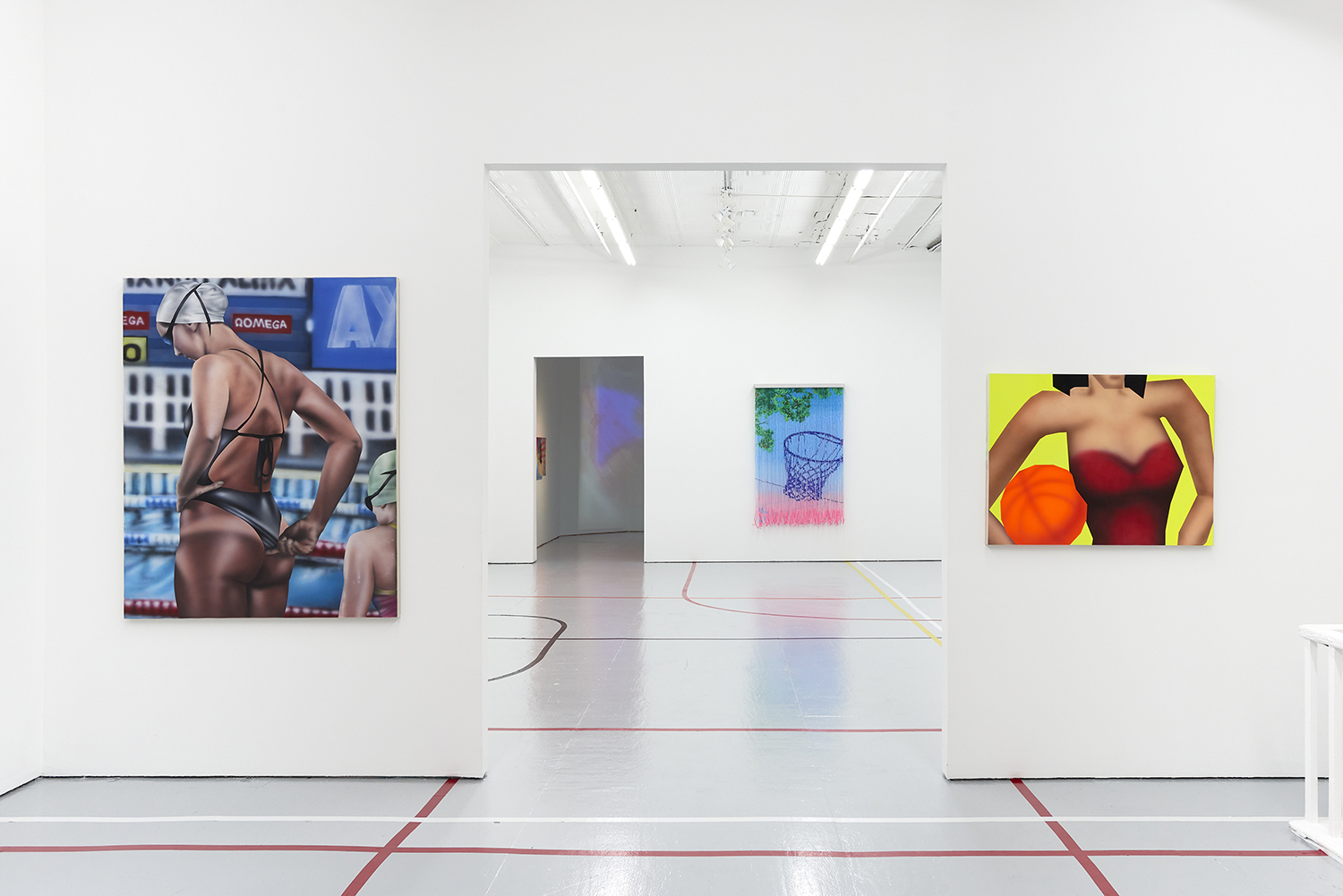
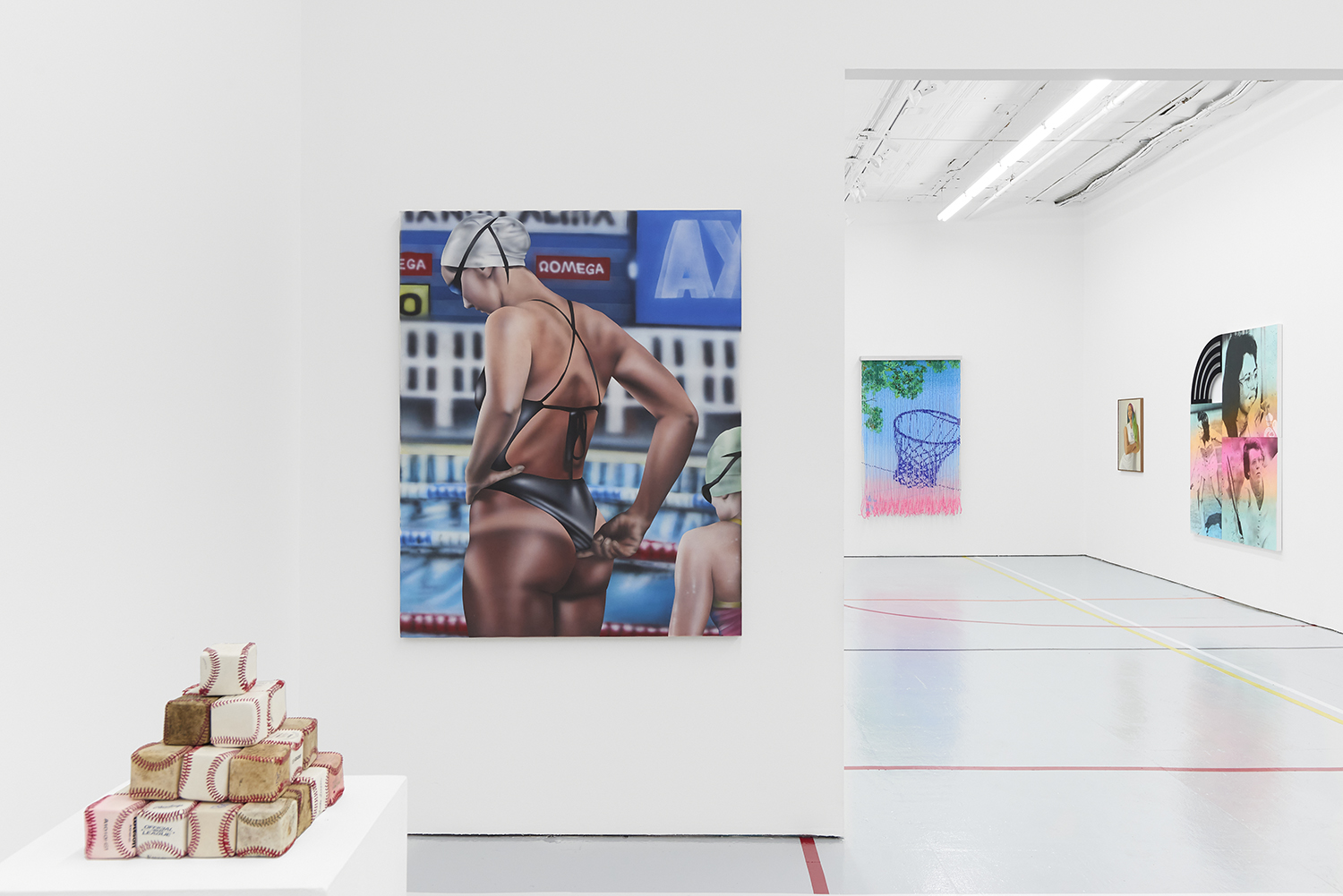
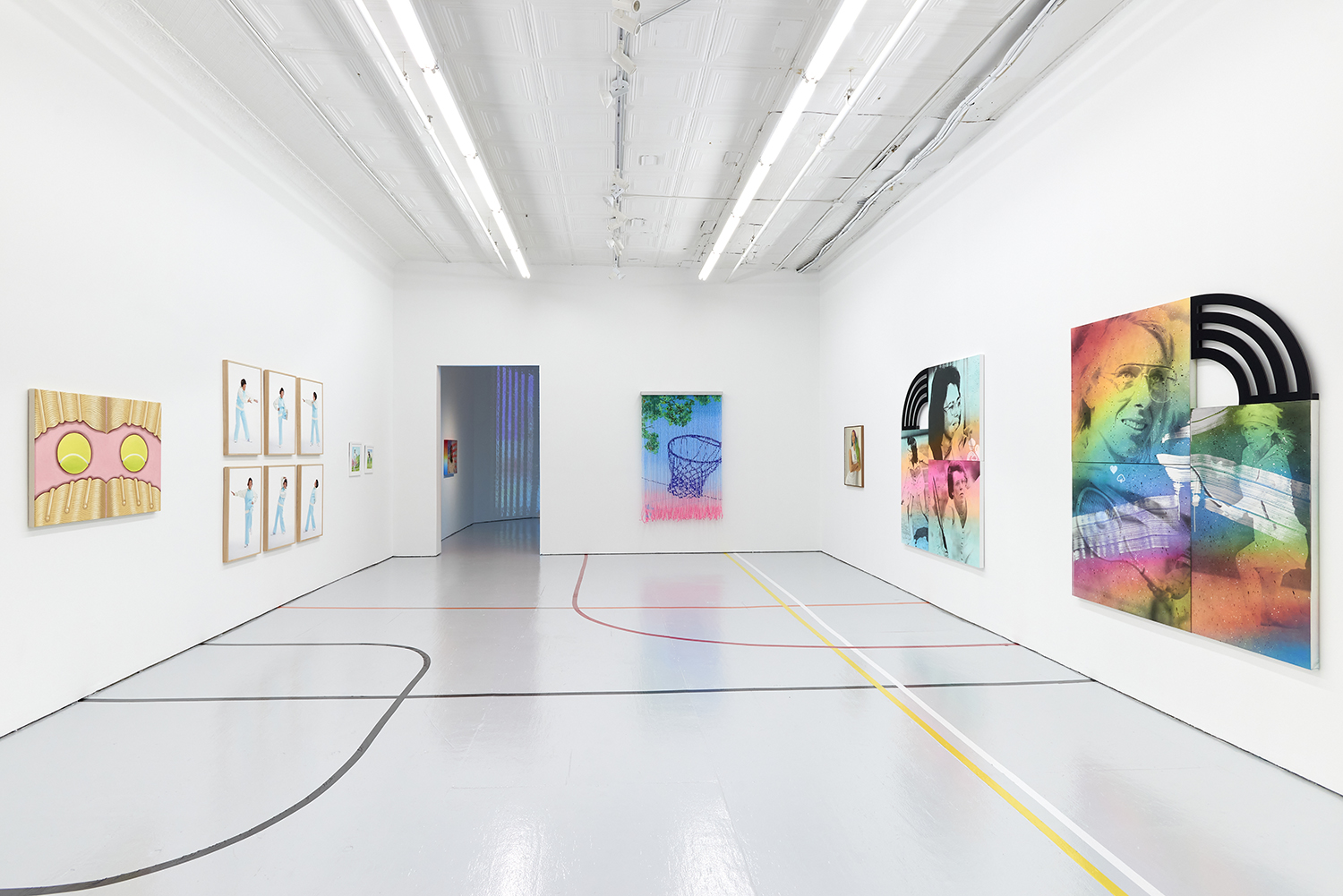
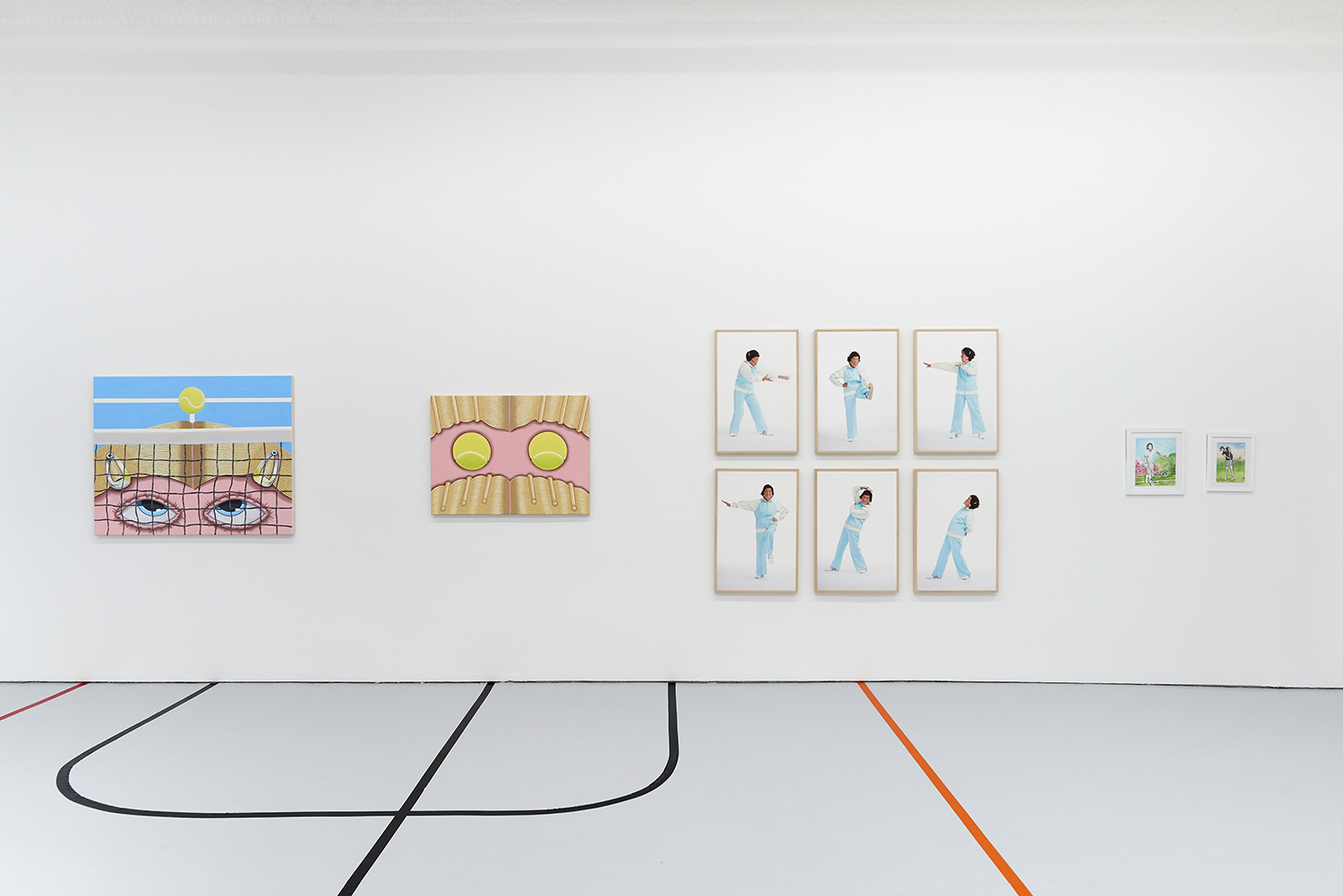
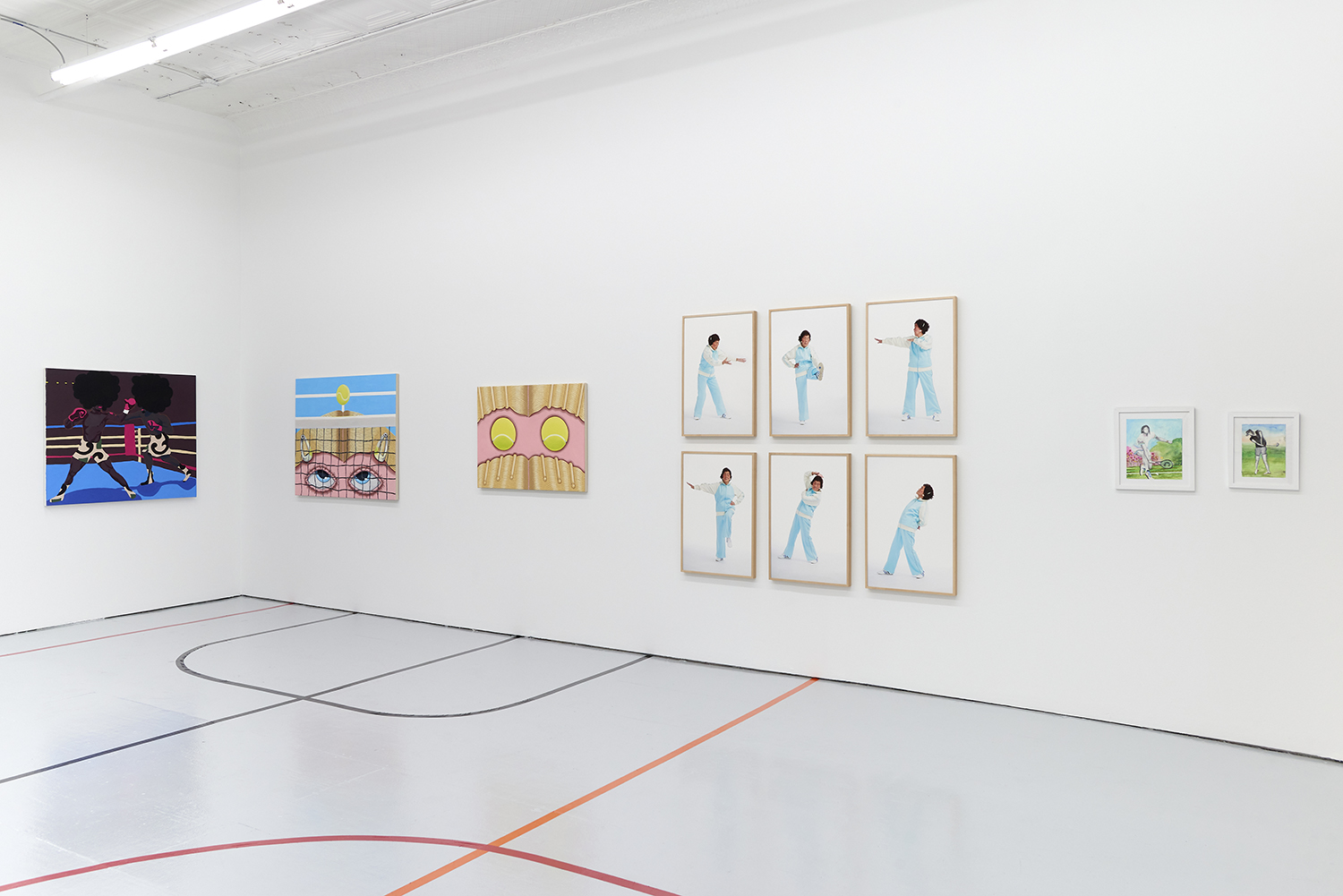
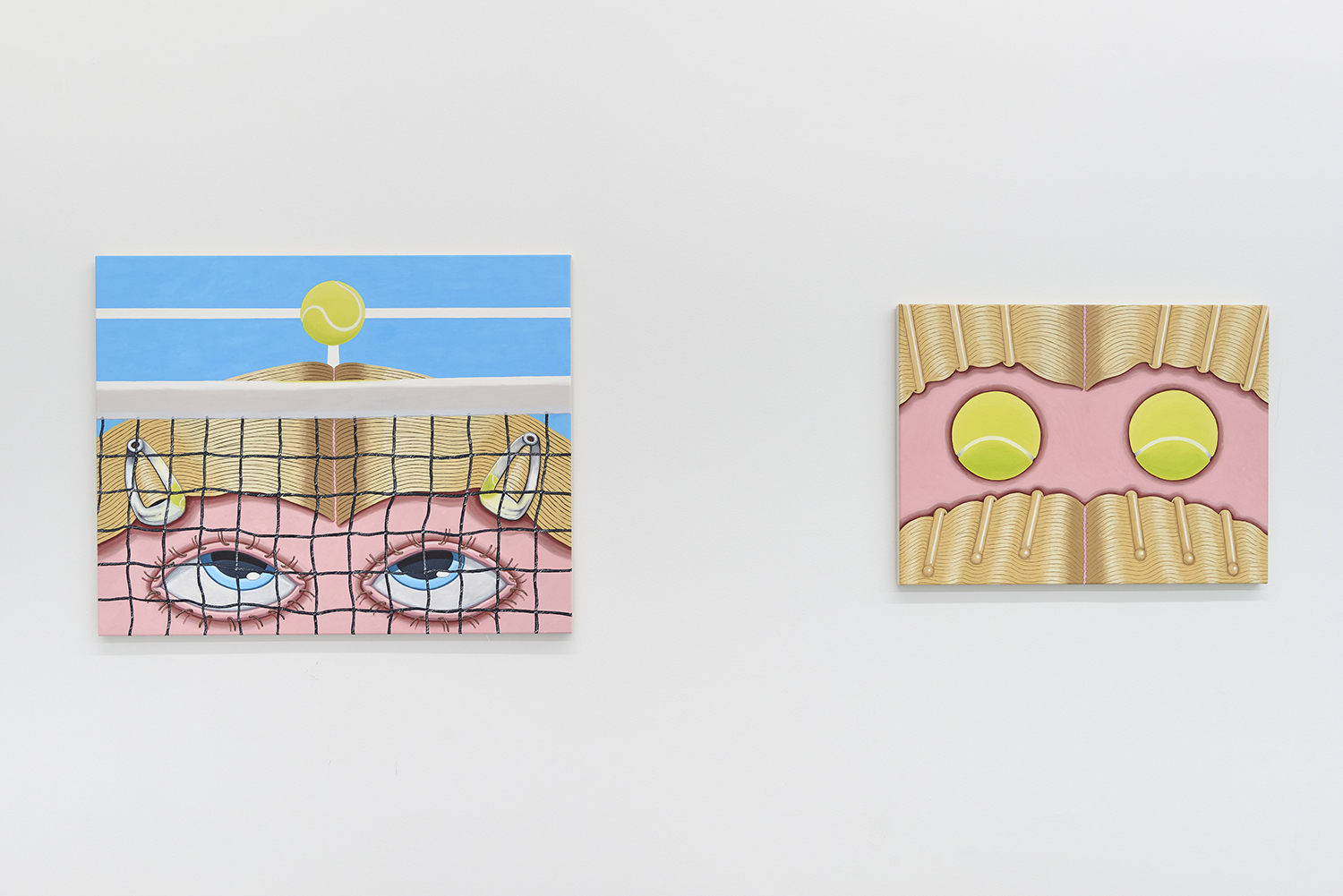
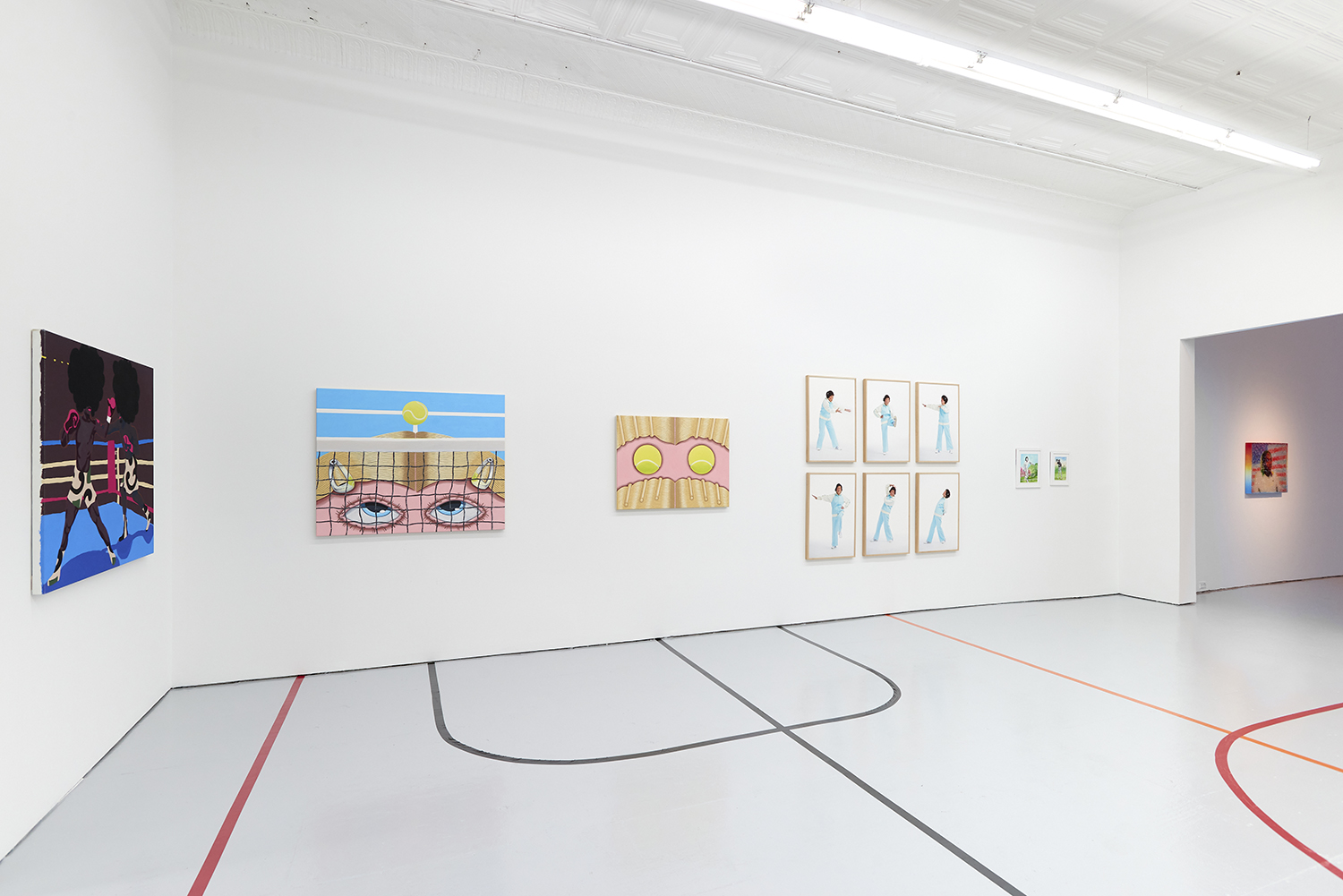
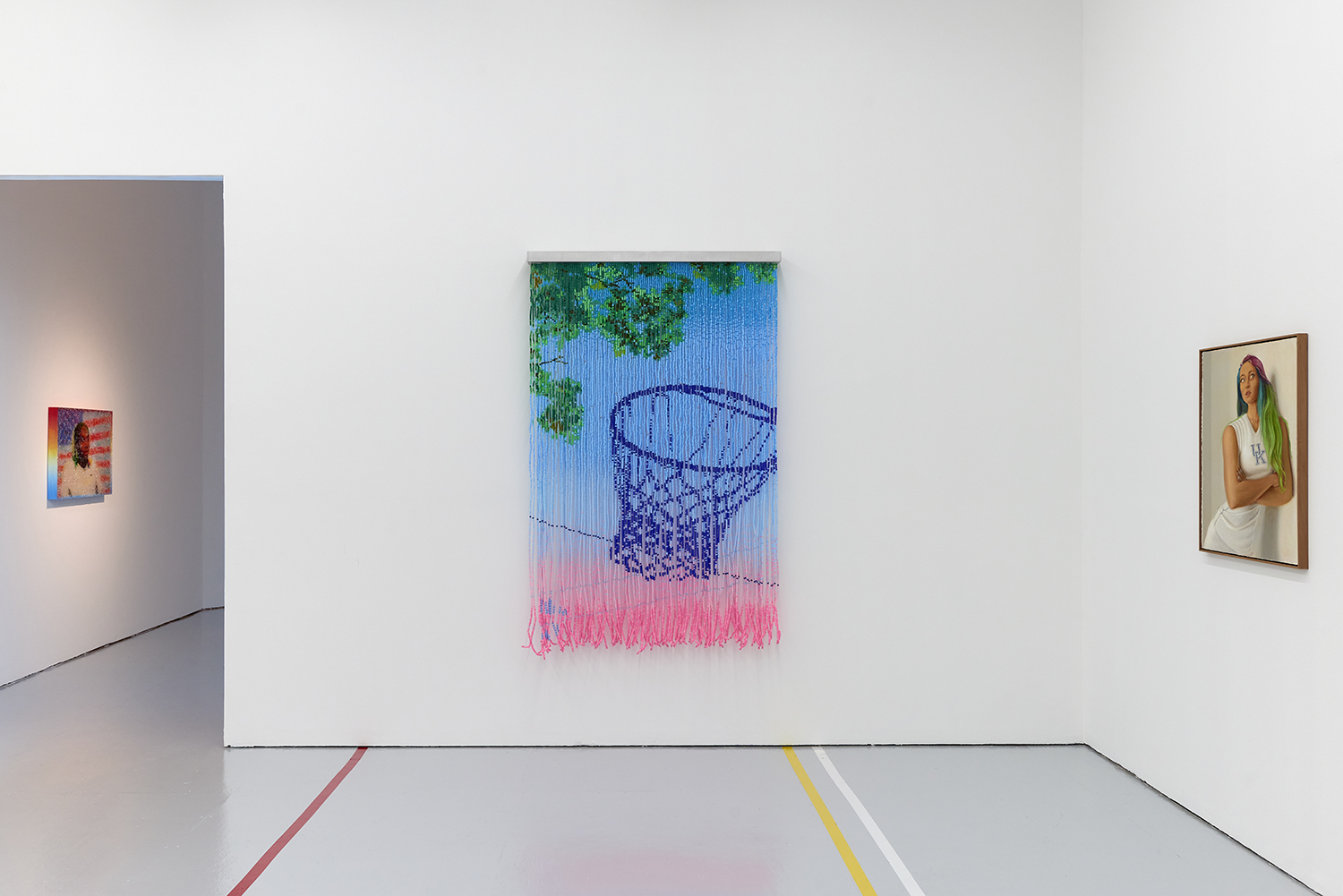
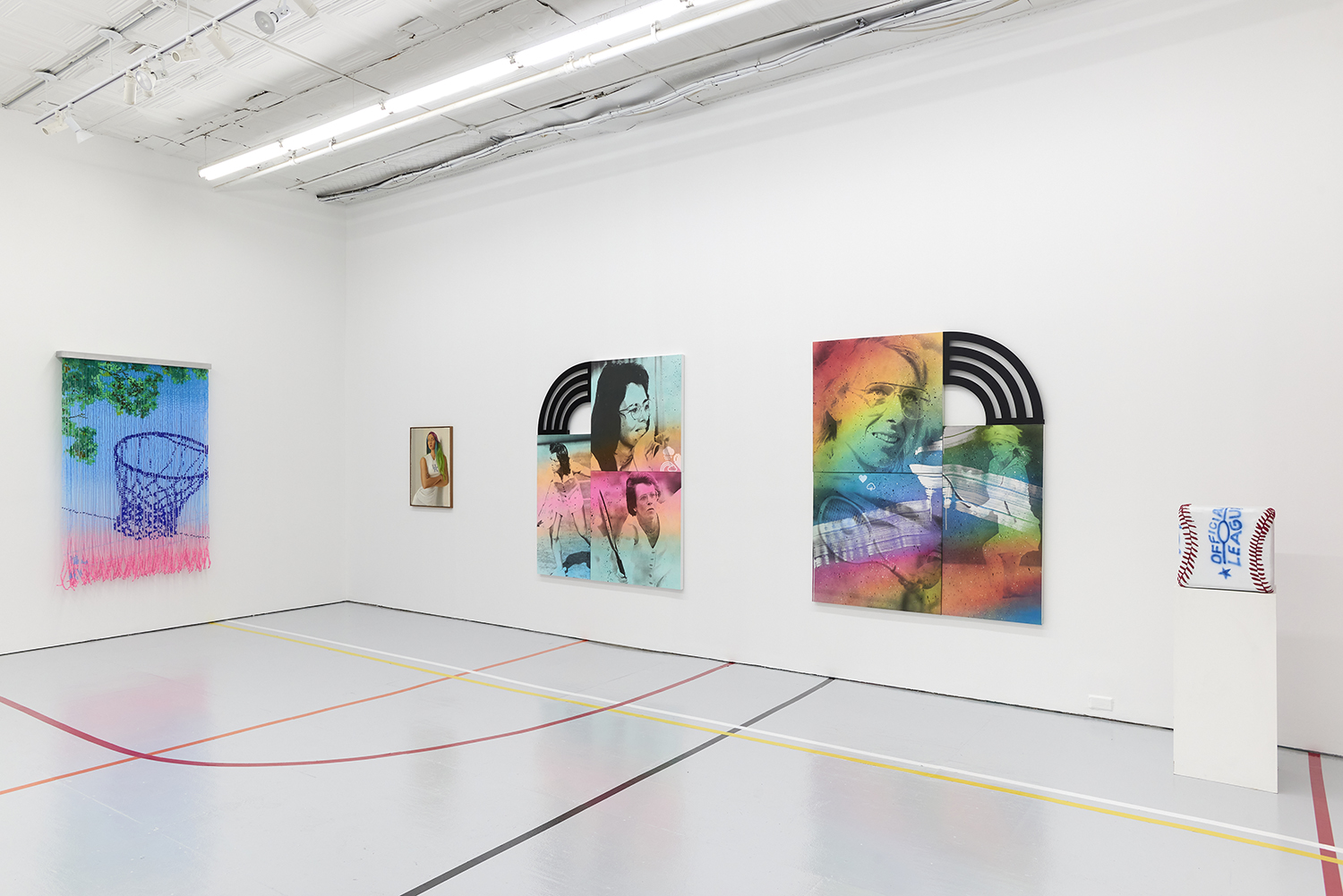
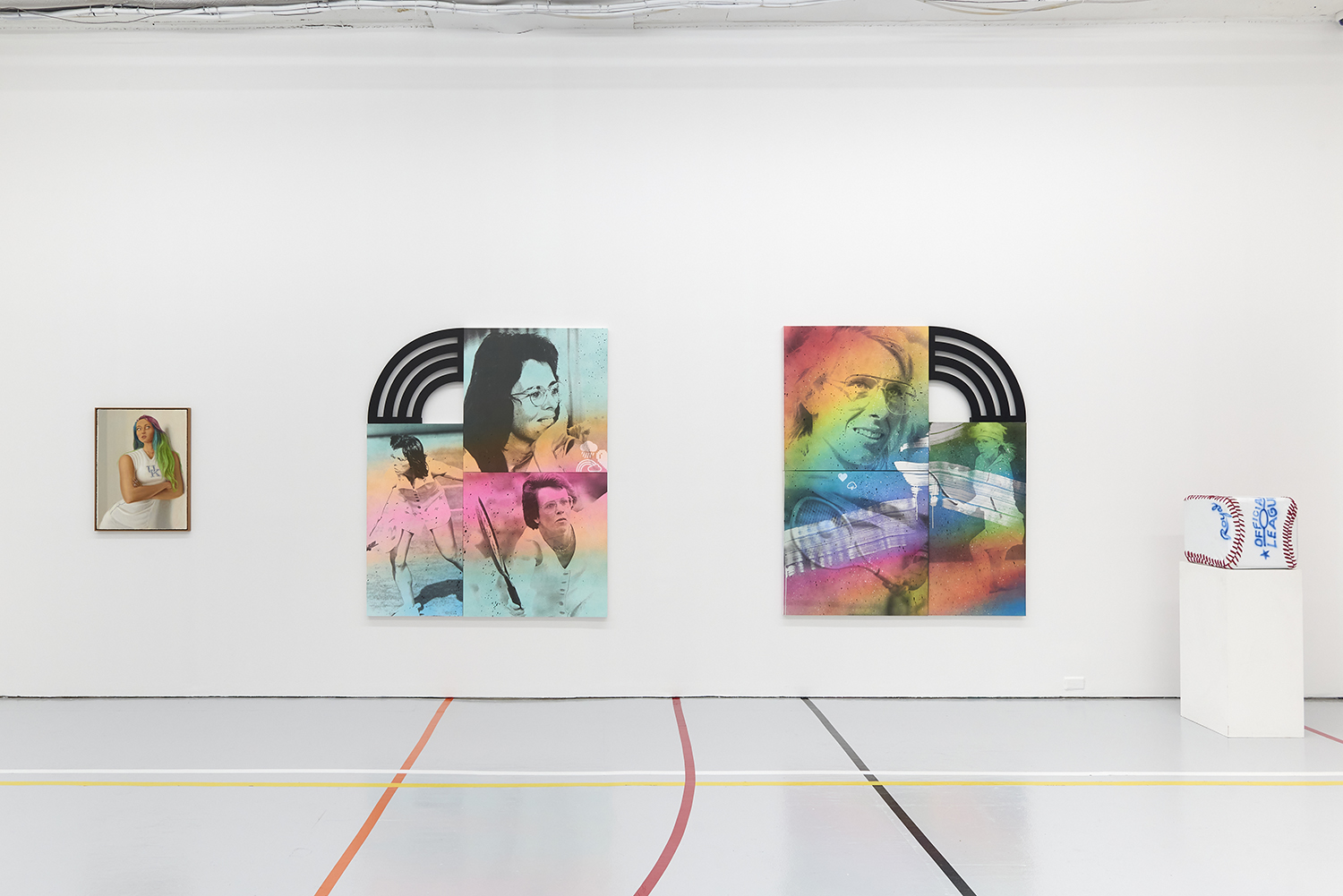
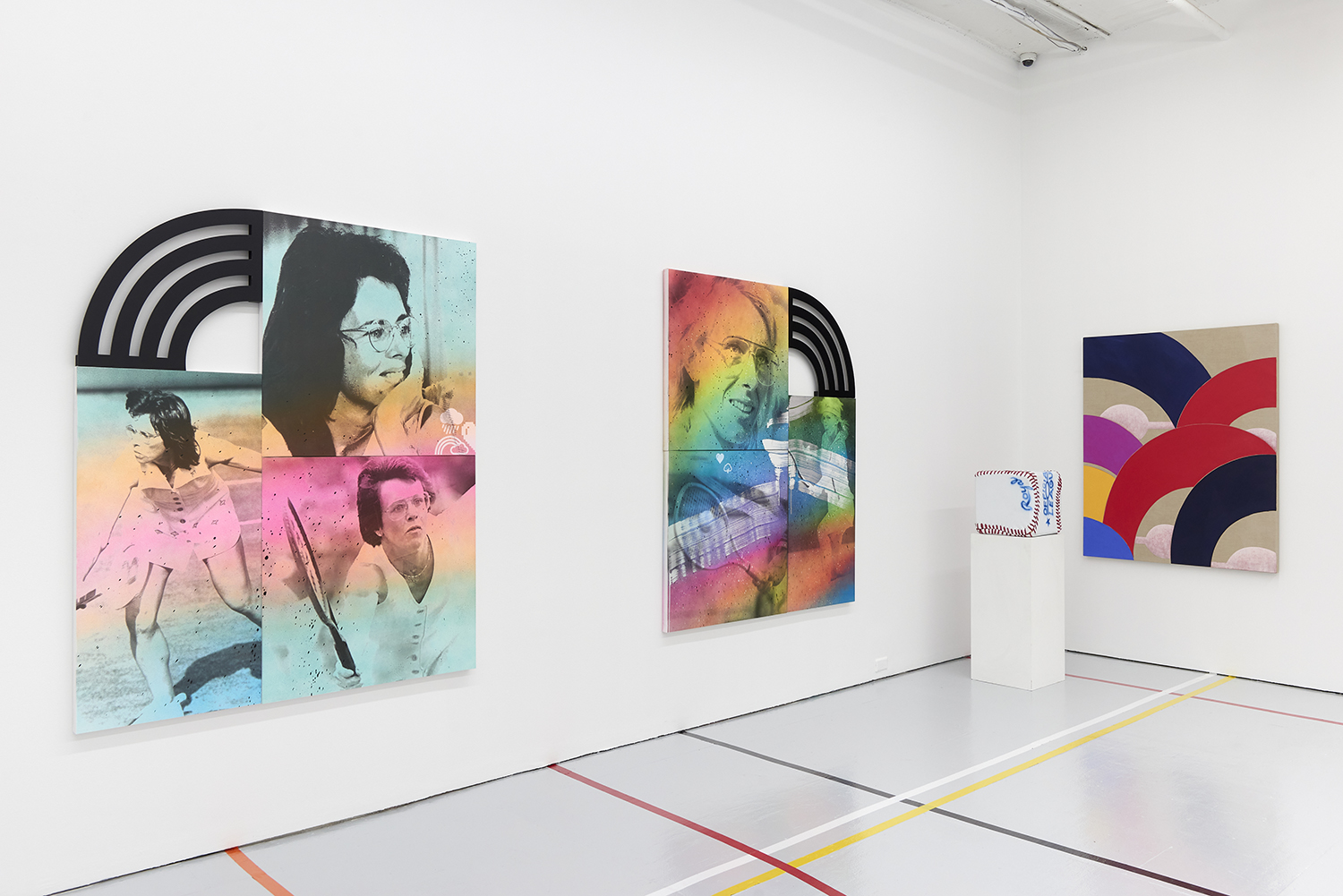
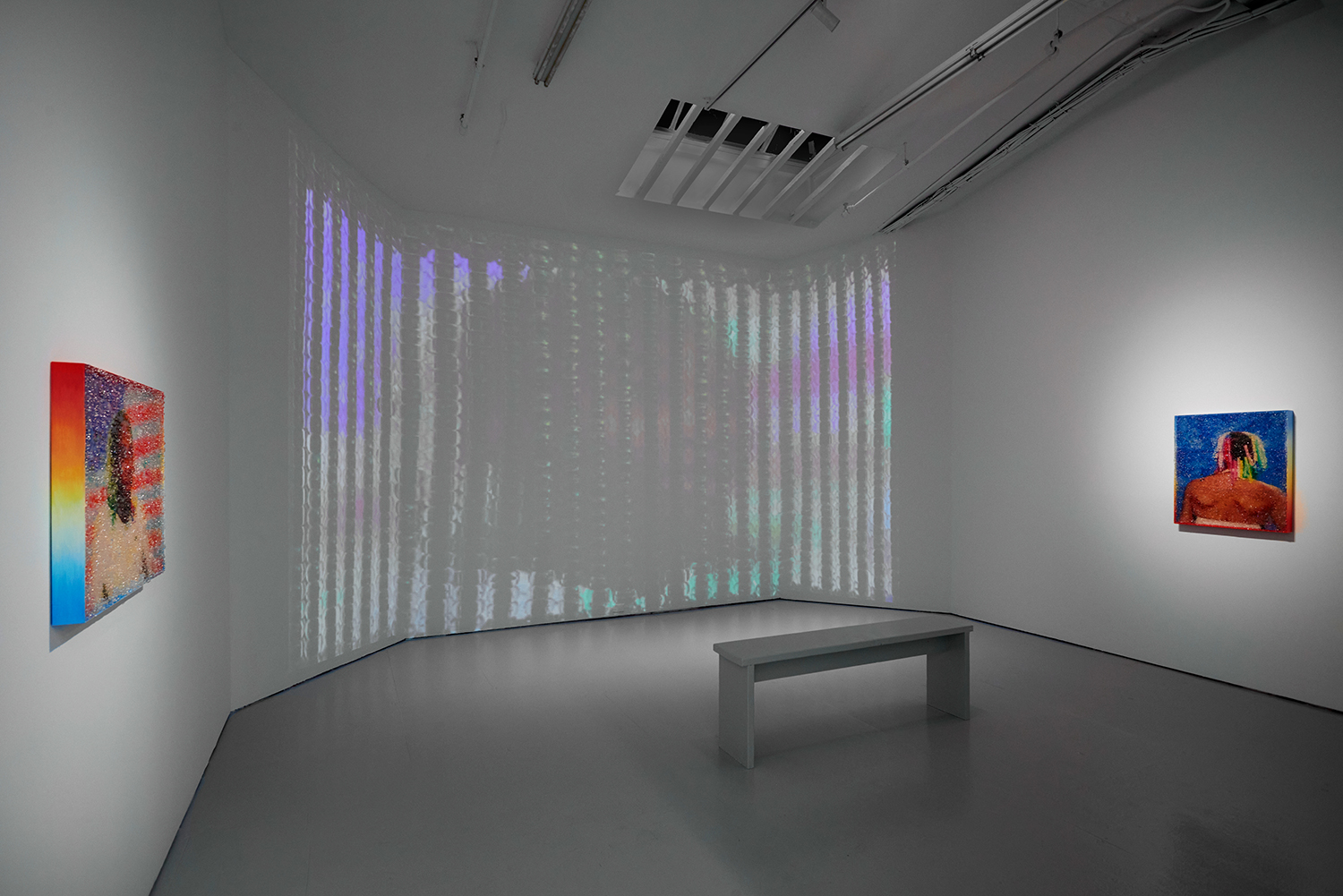
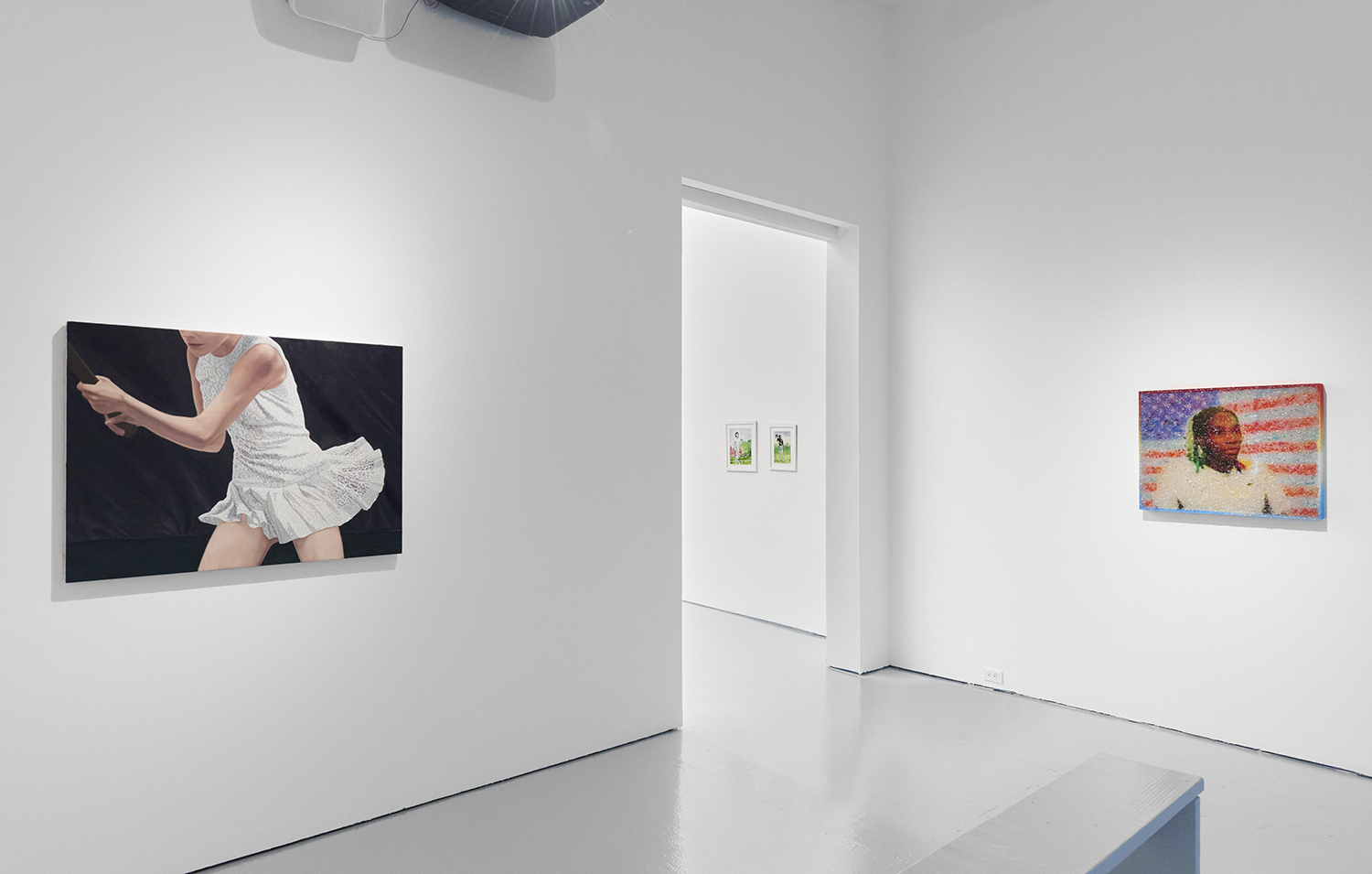
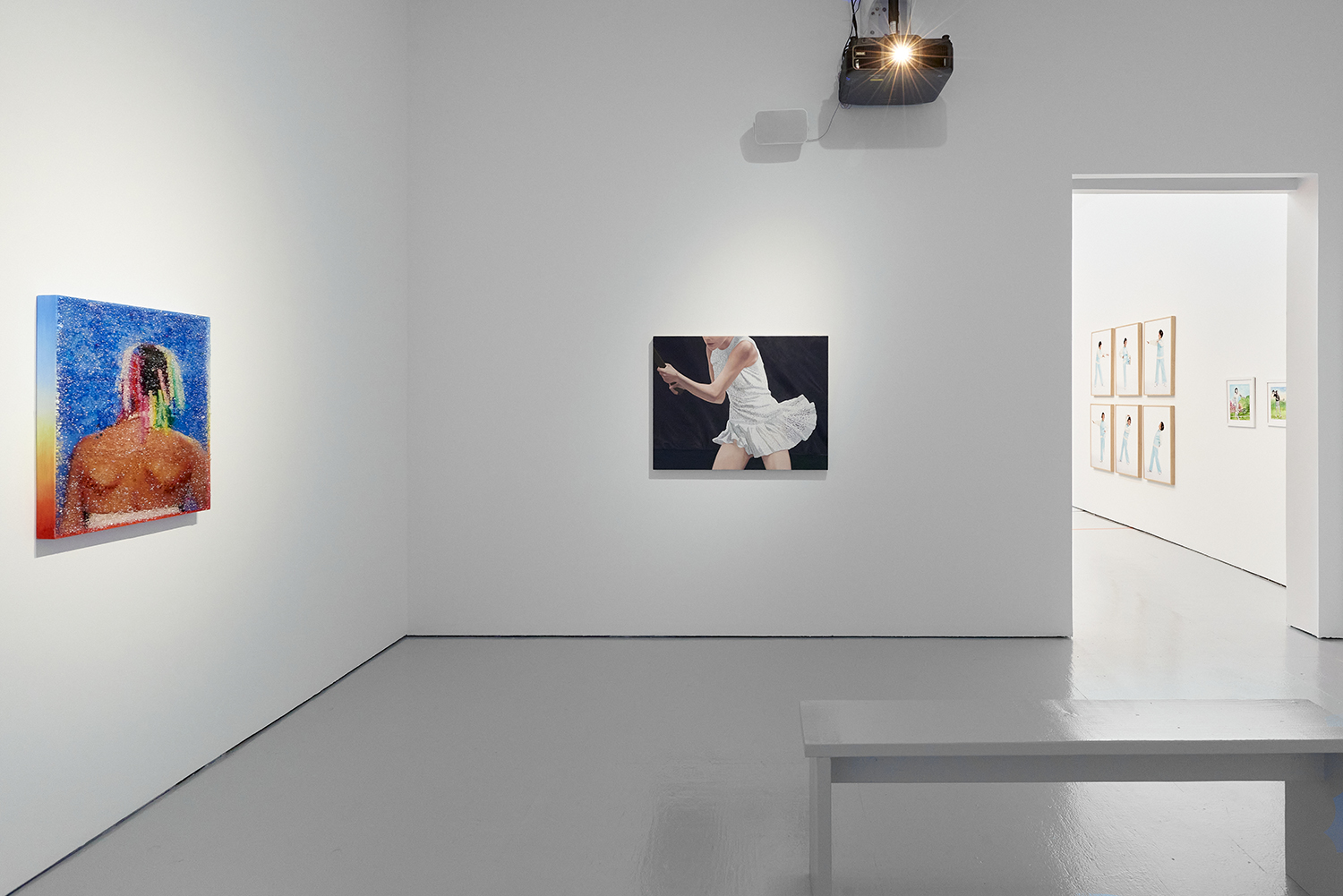
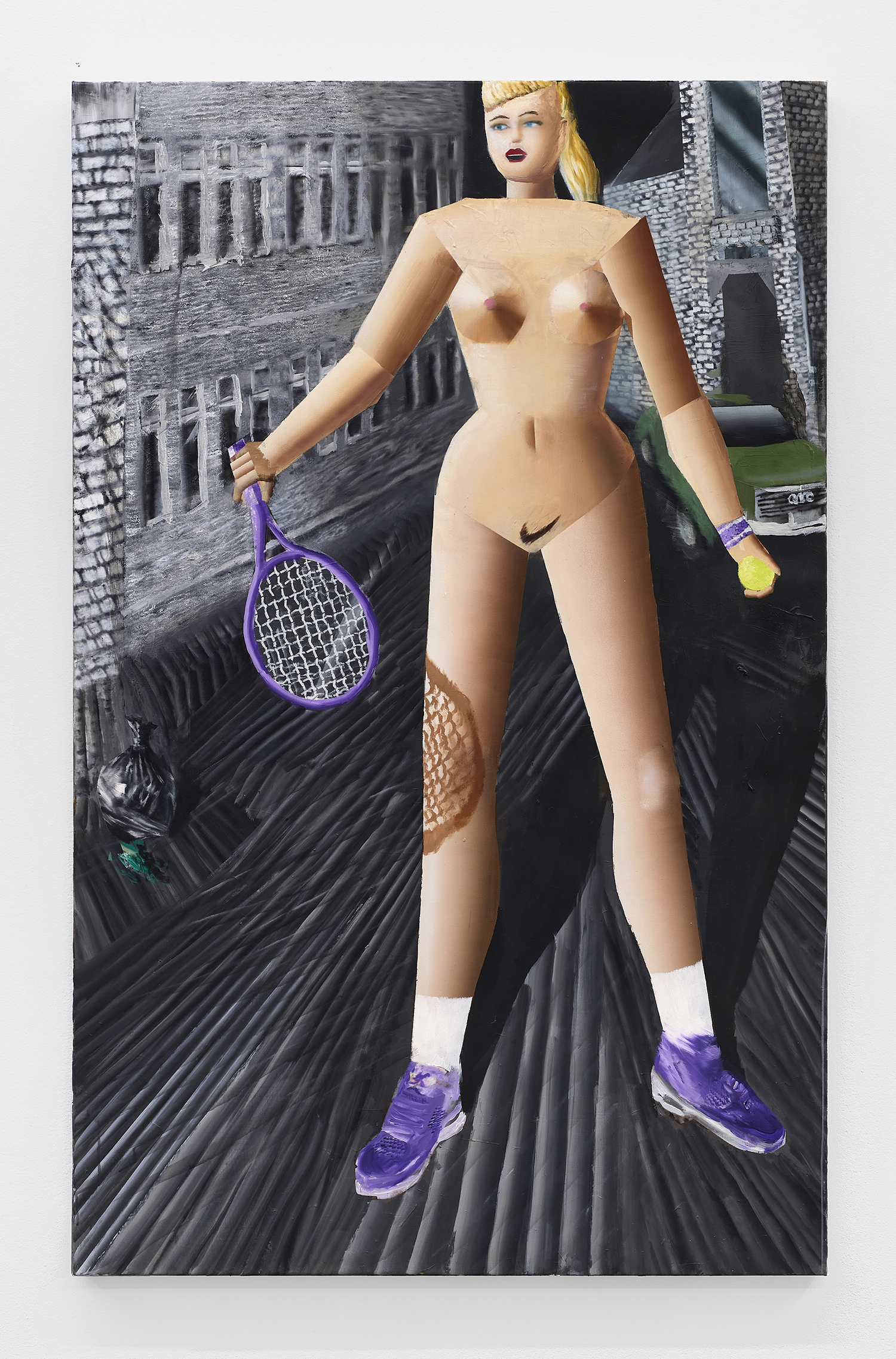
Julius Hofmann, Die Tennisspielerin, 2022, acrylic on canvas, 75 x 47 inches, 190 x 120 cm.
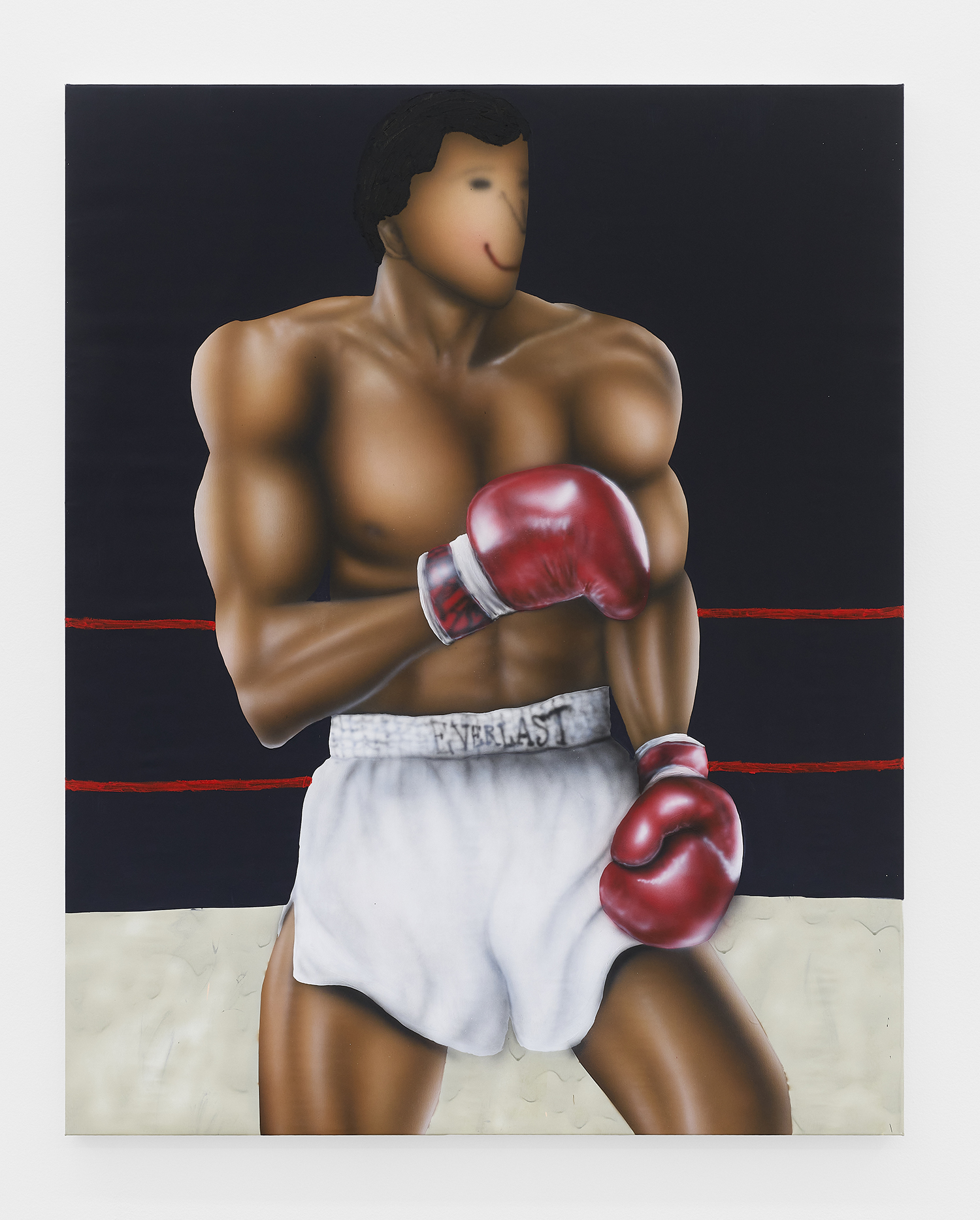
Evgen Čopi Gorišek, One Shot, 2022, acrylic, spray paint, and oil stick on linen, 59 x 47 inches, 150 x 120 cm.
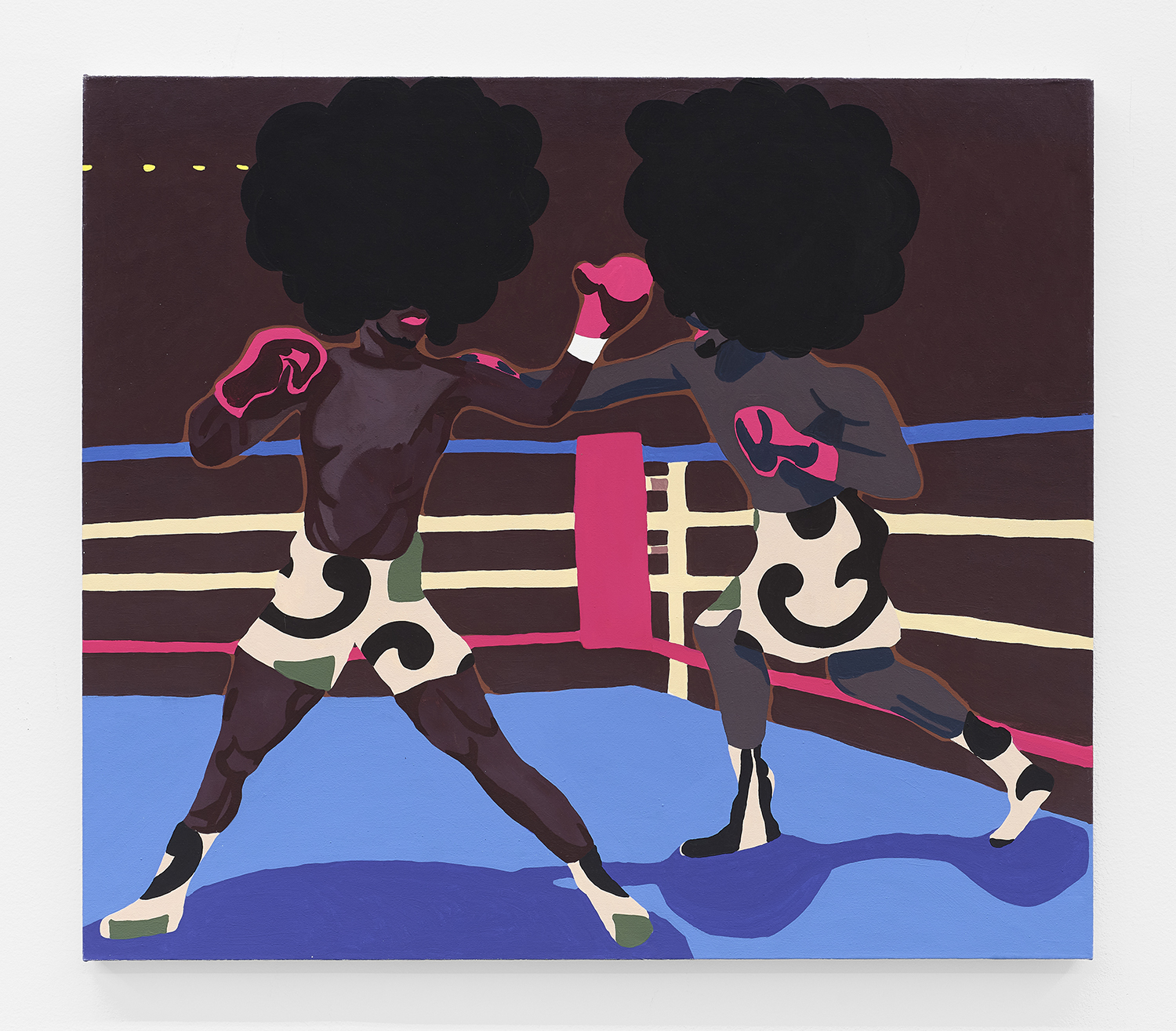
Sheena Rose, Focus, 2023, acrylic on canvas, 42 x 48 inches, 107 x 122 cm.
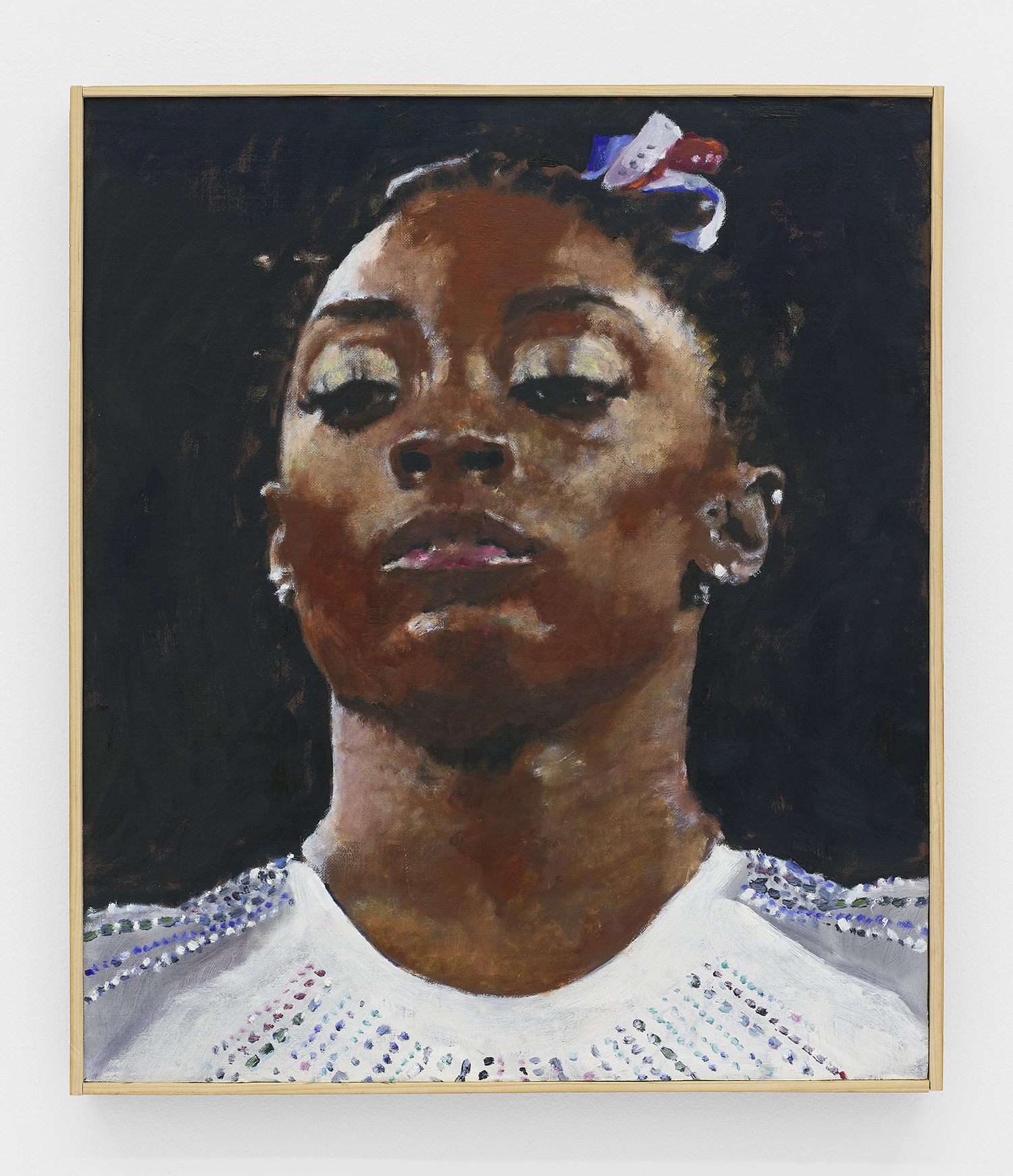
Eric Yahnker, Simone, 2021, oil on linen, 28 x 24 inches, 71 x 61 cm.
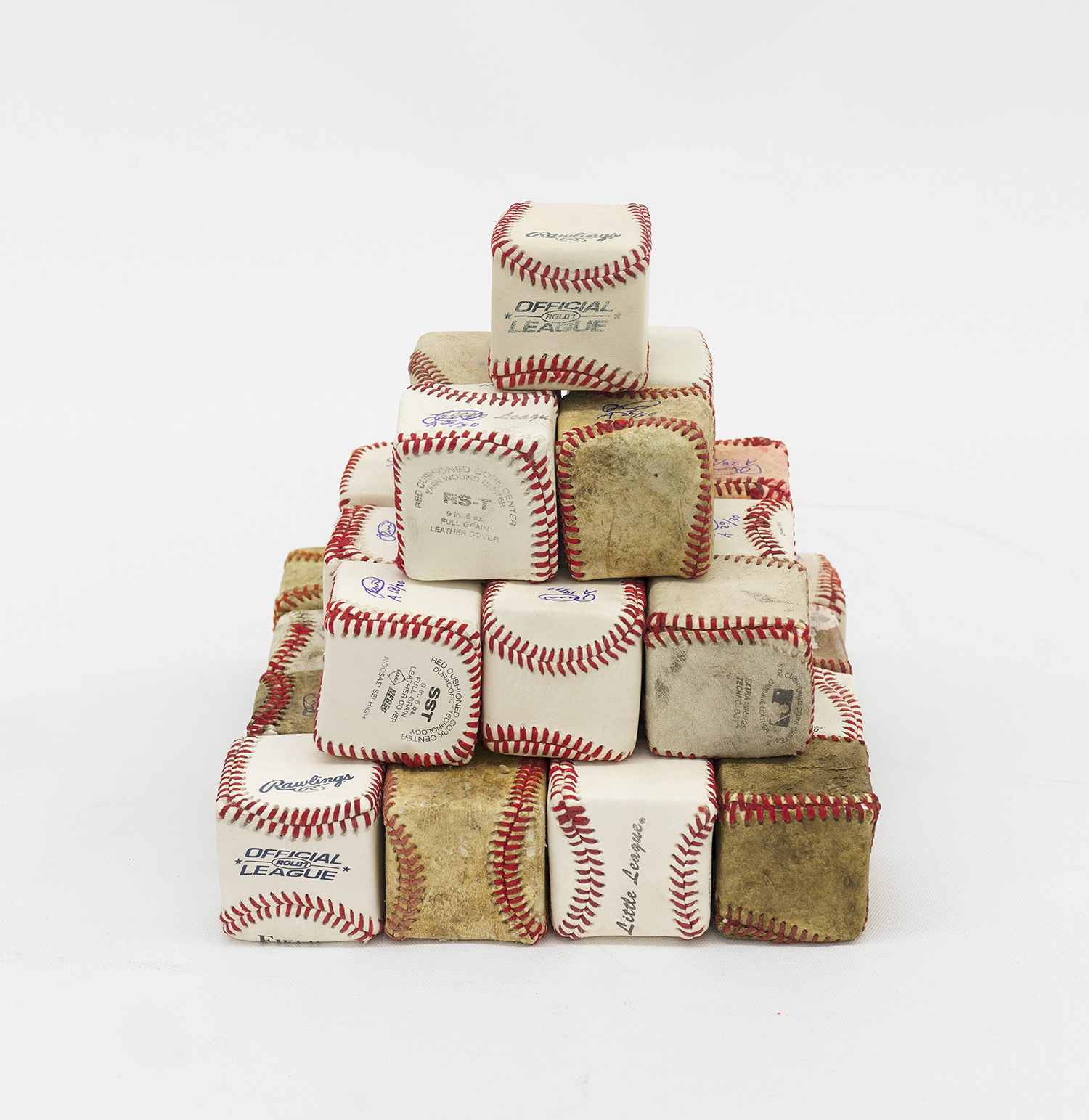
Royal Jarmon, Pastime Pyramid, 2018-2023, found baseballs over plaster, 9 x 9 x 9 inches, 23 x 23 x 23 cm.
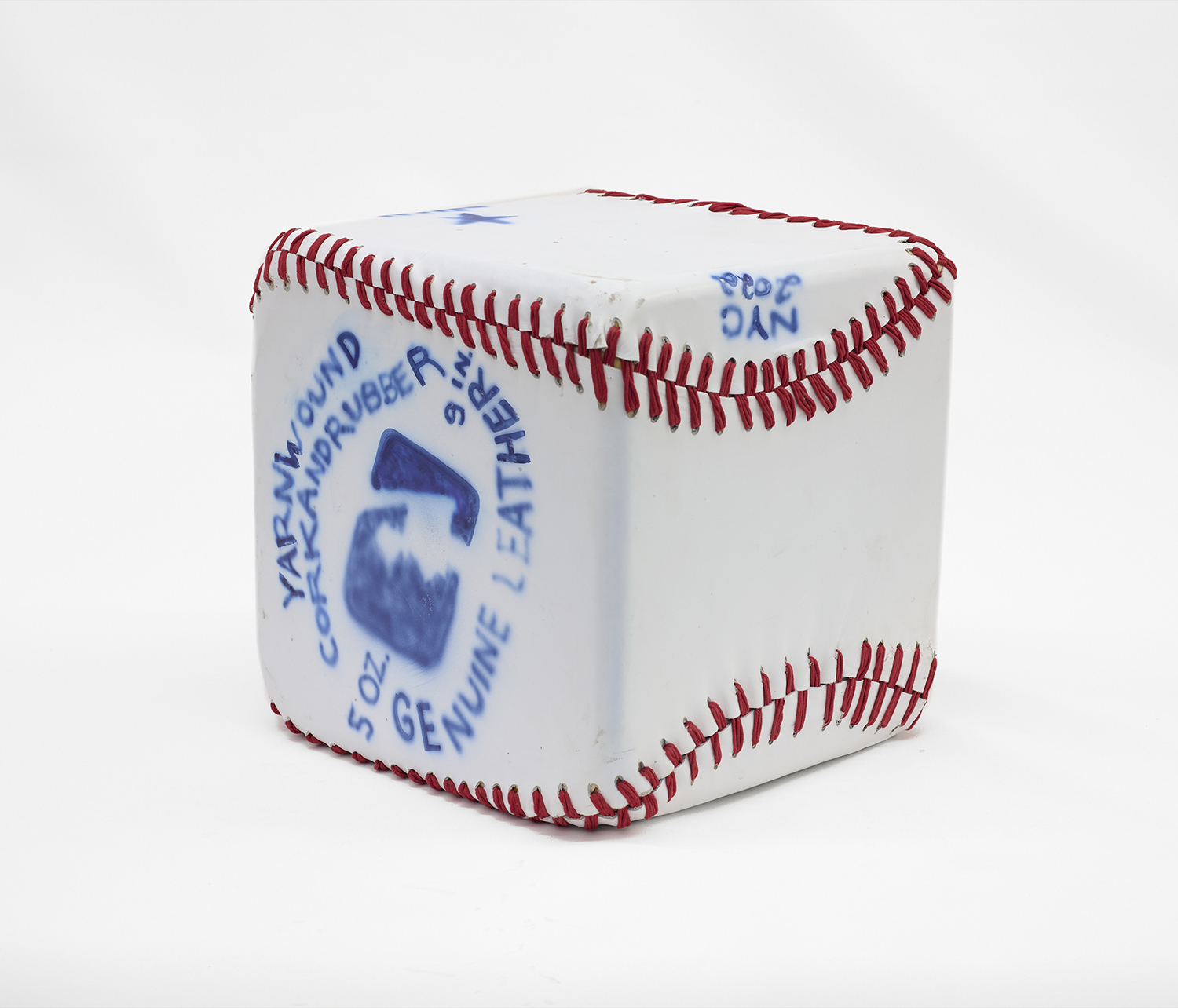
Royal Jarmon, Forthcoming, 2023, acrylic on leather over wood, 15 x 15 x 15 inches, 38 x 38 x 38 cm.
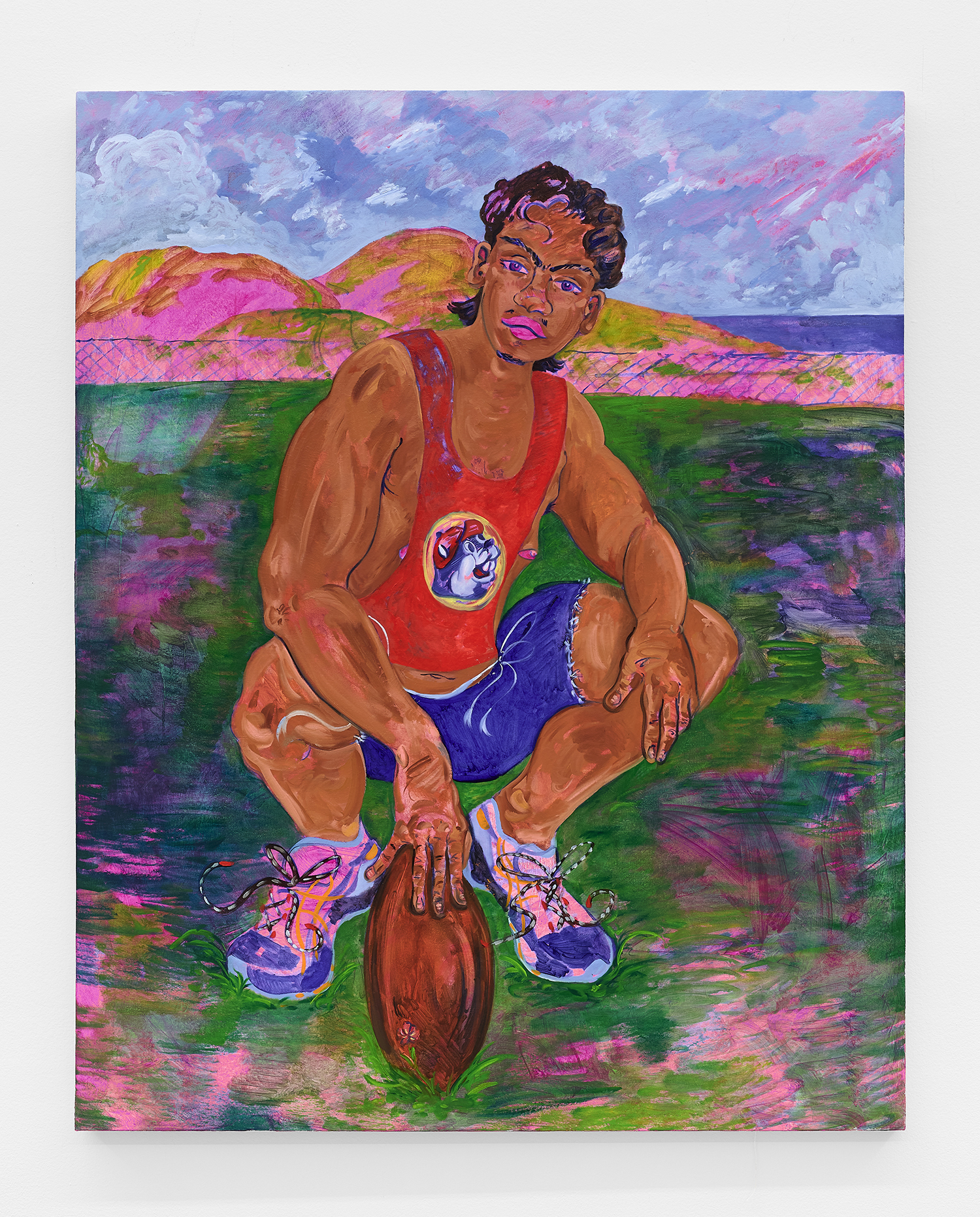
Ricardo Partida, Raspberry Chapstick, 2023, oil on canvas, 48 x 60 inches, 123 x 152 cm.
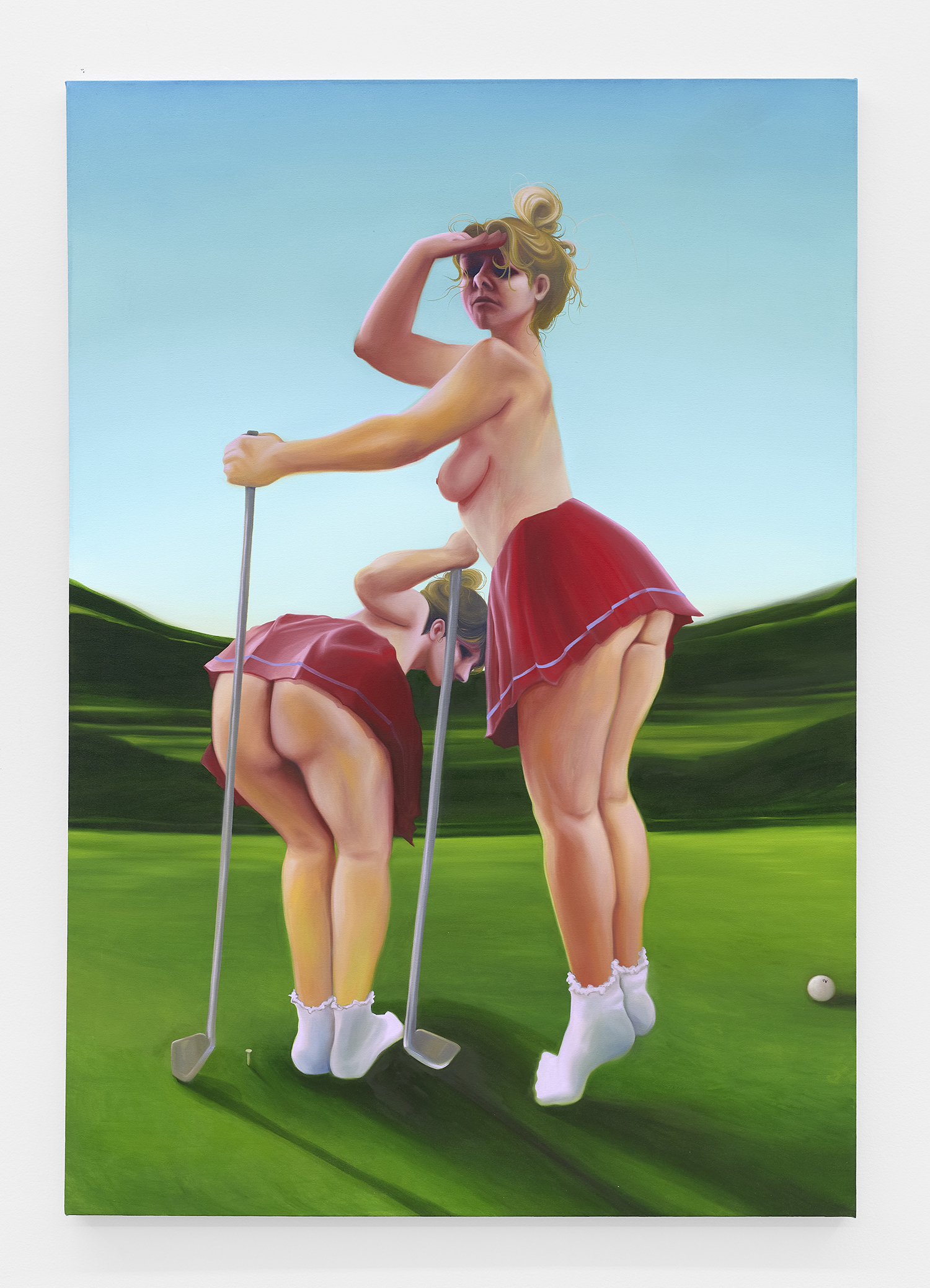
Elena Redmond, Real Girls Playing Real Golf, 2023, oil on canvas, 72 x 50 inches, 183 x 127 cm.
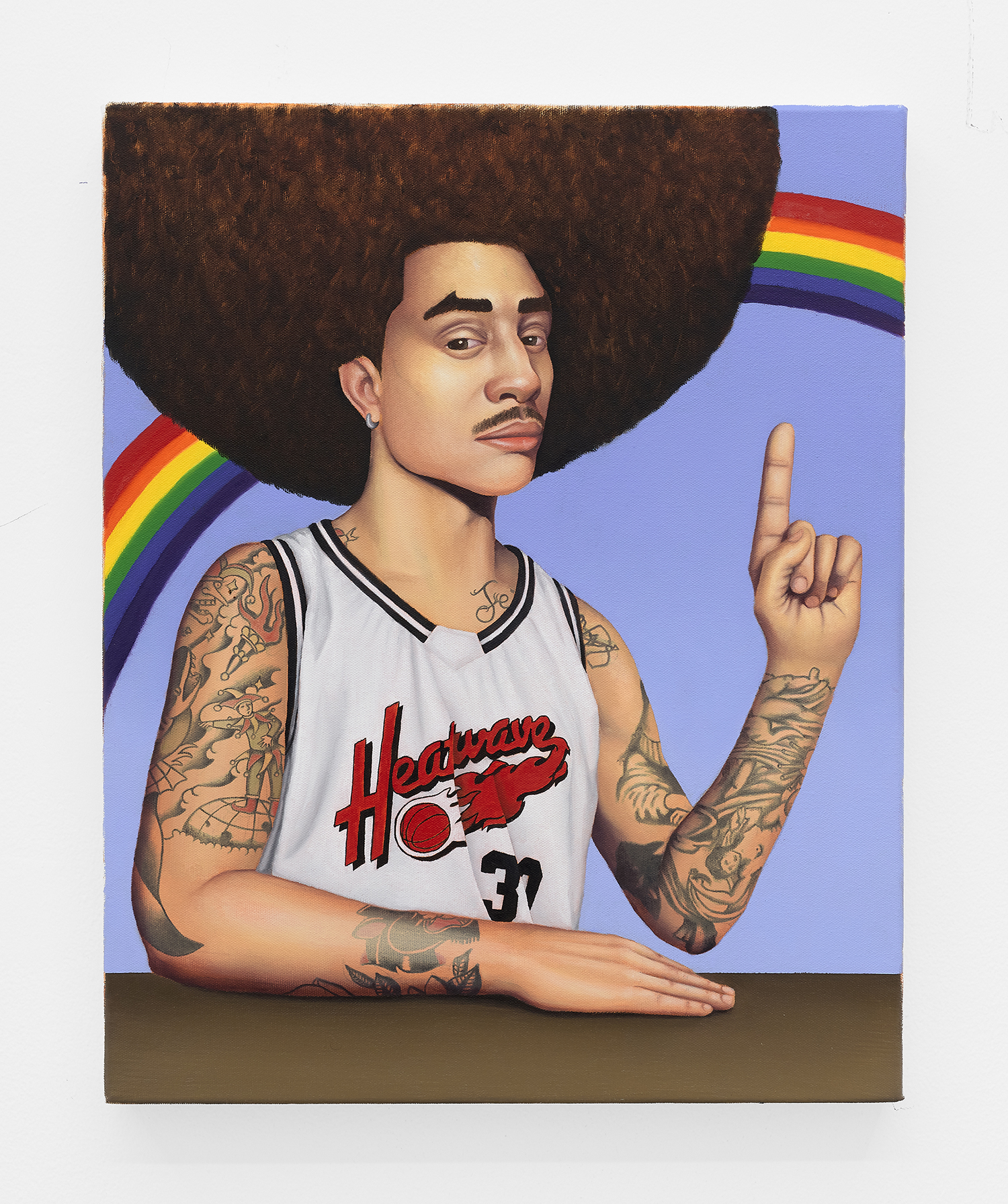
Jake Troyli, Offense wins games. Defense wins championships!, 2019, oil on canvas, 20 x 16 inches, 51 x 41 cm.
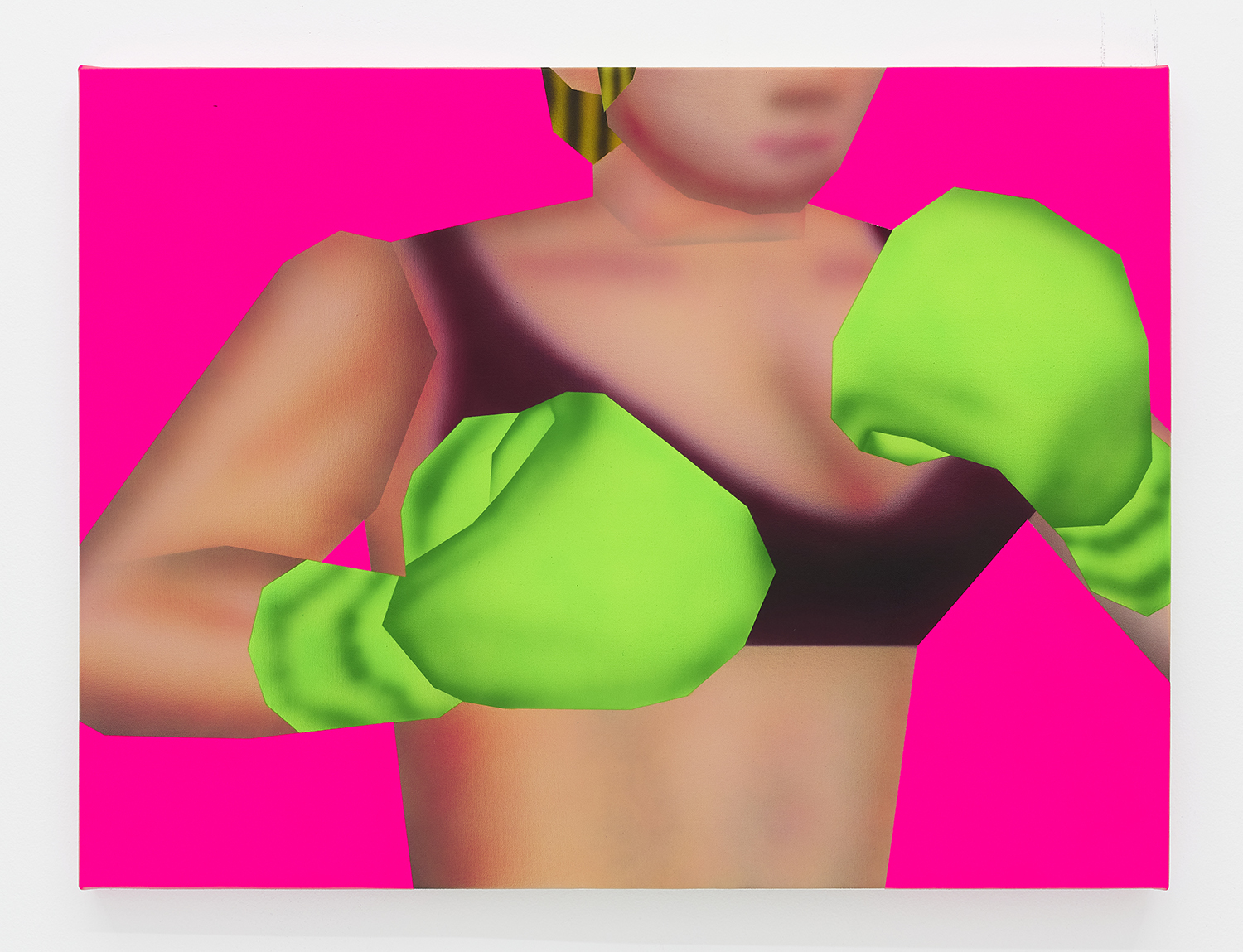
Gao Hang, Try Me, 2023, acrylic on canvas 30 x 40 inches, 76 x 102 cm.
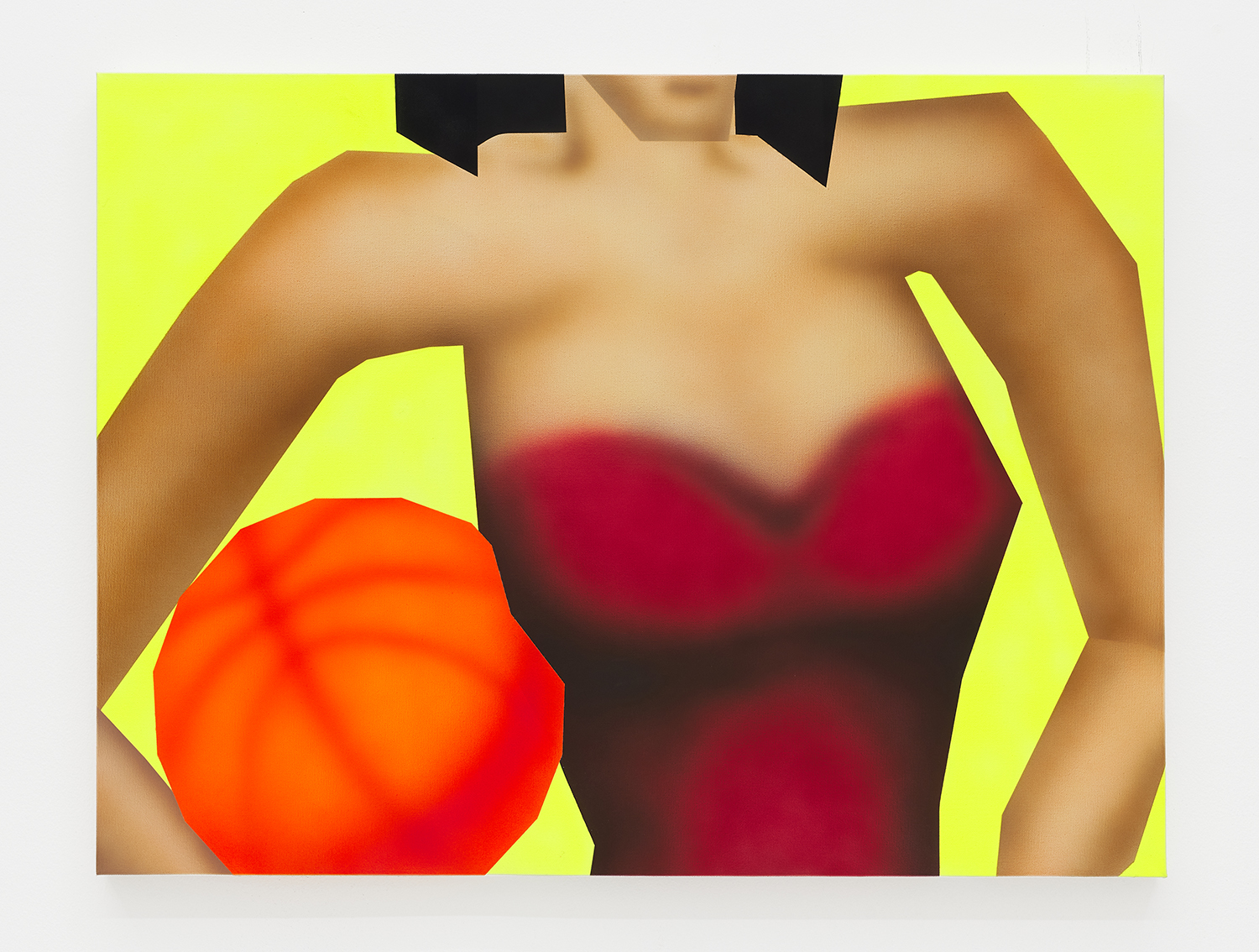
Gao Hang, This Made Perfect Sense, 2023, acrylic on canvas, 30 x 40 inches, 76 x 102 cm.
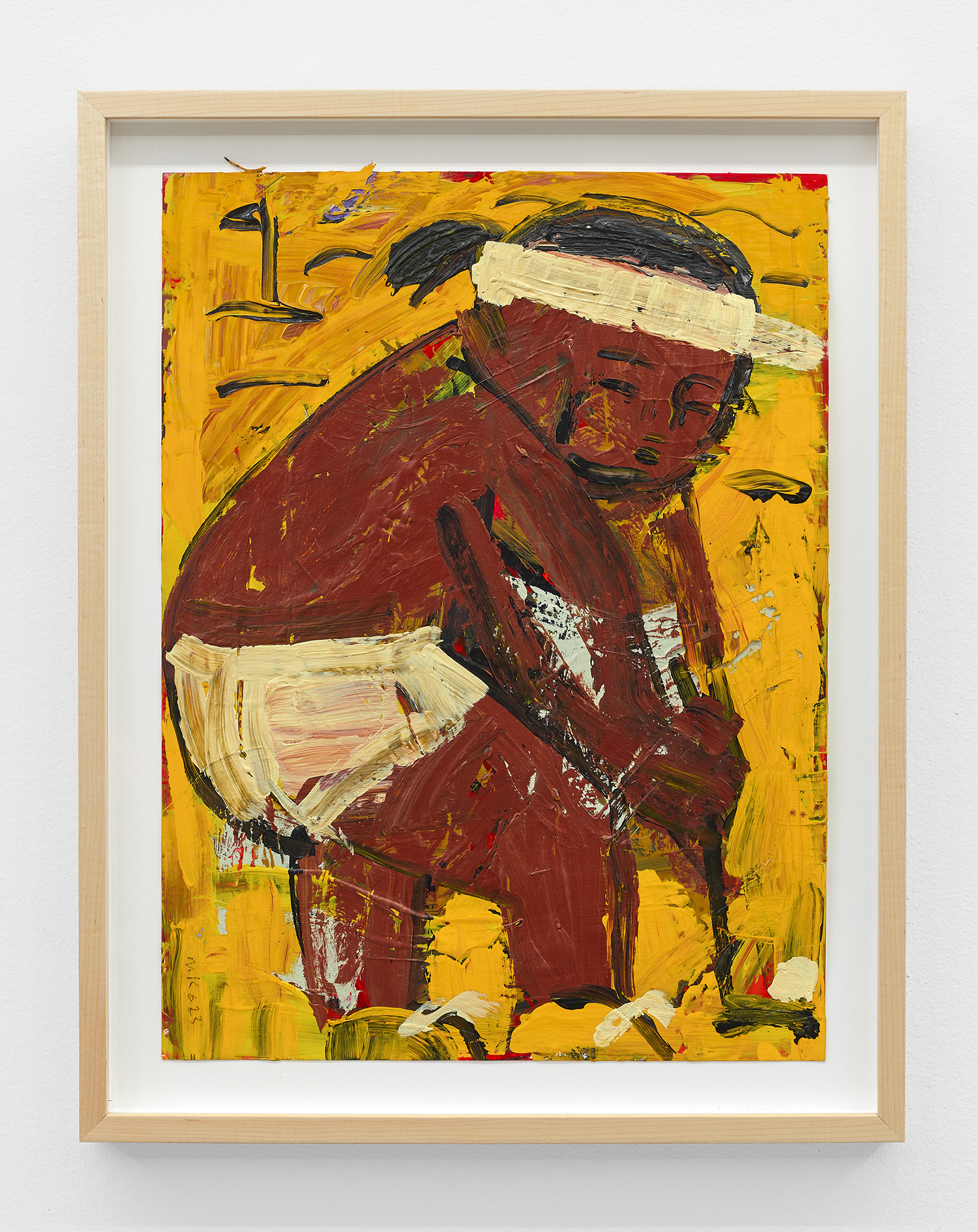
Monica Kim Garza, Short Swing, 2023, acrylic on paper, 24 x 18 inches, 61 x 46 cm.
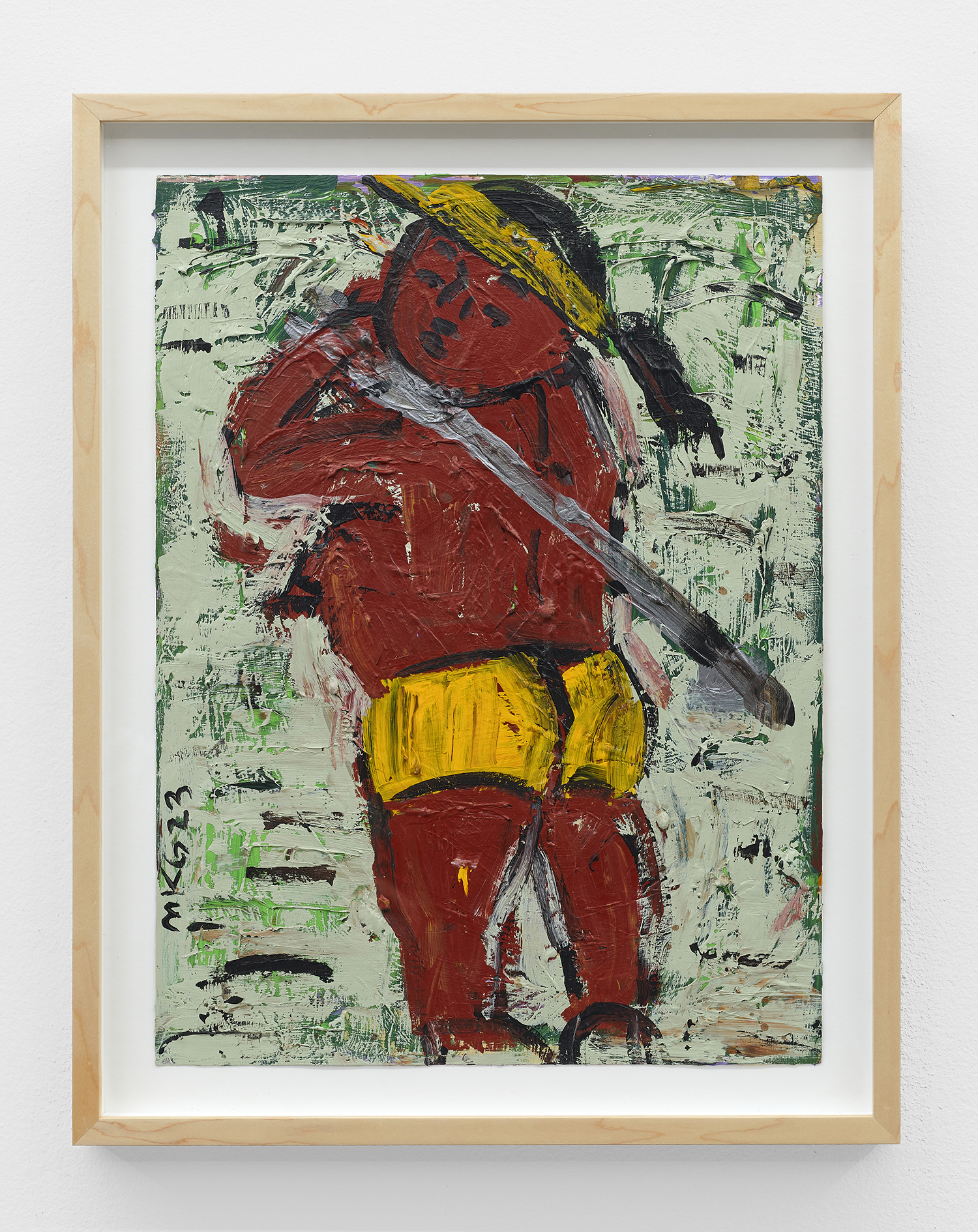
Monica Kim Garza, Long Shot, 2023, acrylic on paper, 24 x 18 inches, 61 x 46 cm.
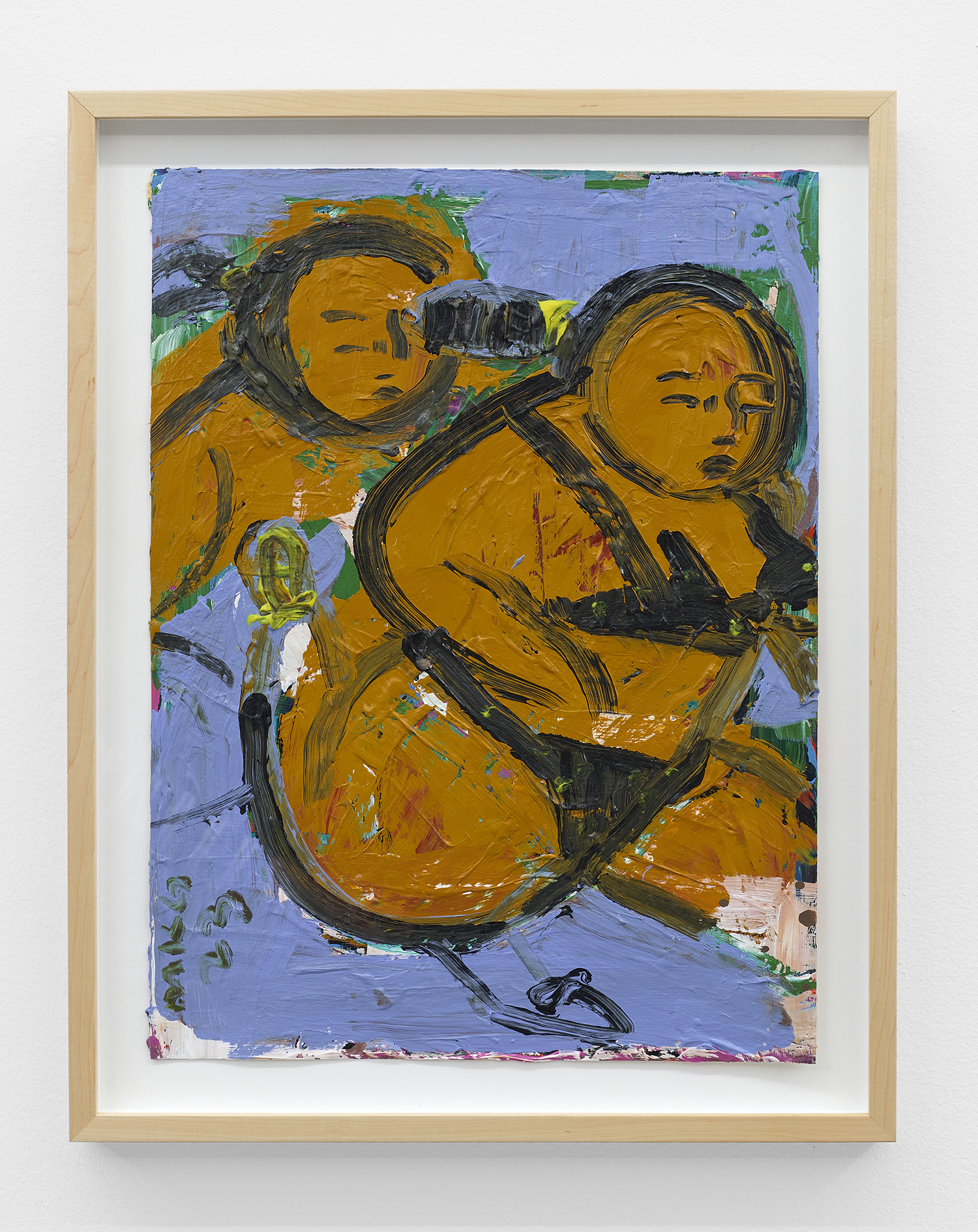
Monica Kim Garza, Marathon Runners Running, 2023, acrylic on paper, 24 x 18 inches, 61 x 46 cm.
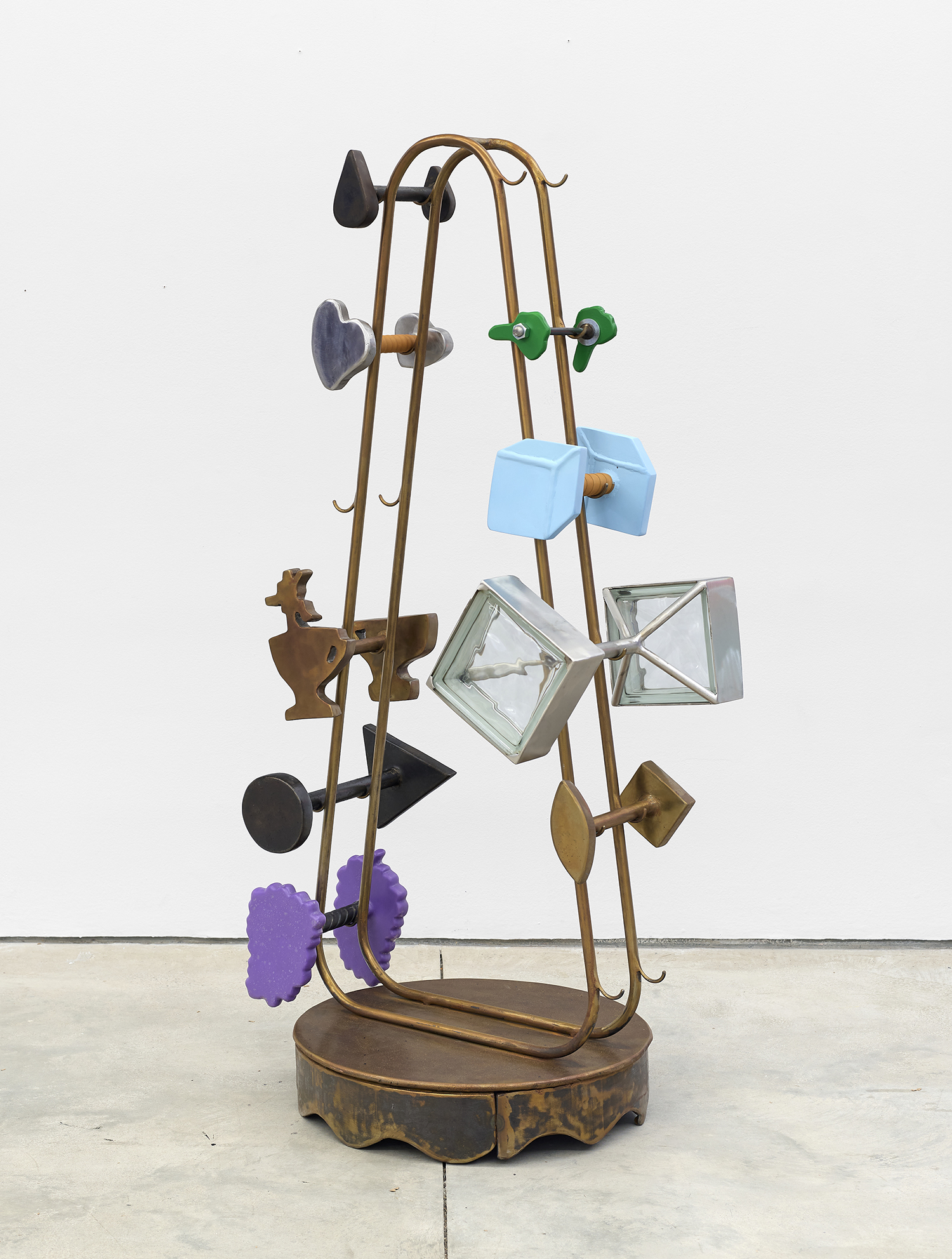
Max Heiges, An Assortment Of Muscle Building Accessories, 2023, steel, stainless steel, glass, 64 x 26 x 24 inches, 162 x 66 x 61 cm.
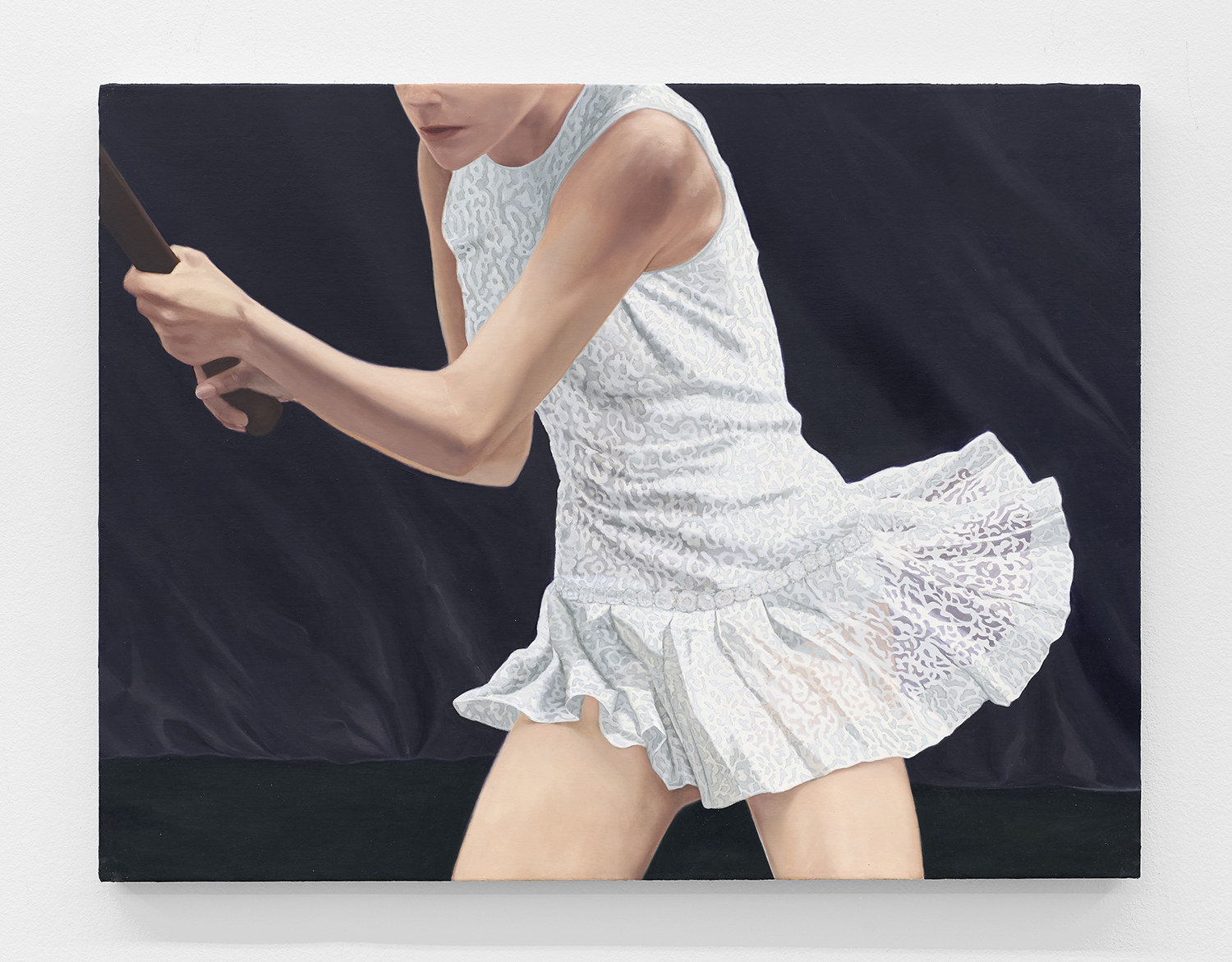
Rachael Bos, C. Evert, 2023, oil on canvas, 32 x 42 inches, 81 x 106 cm.
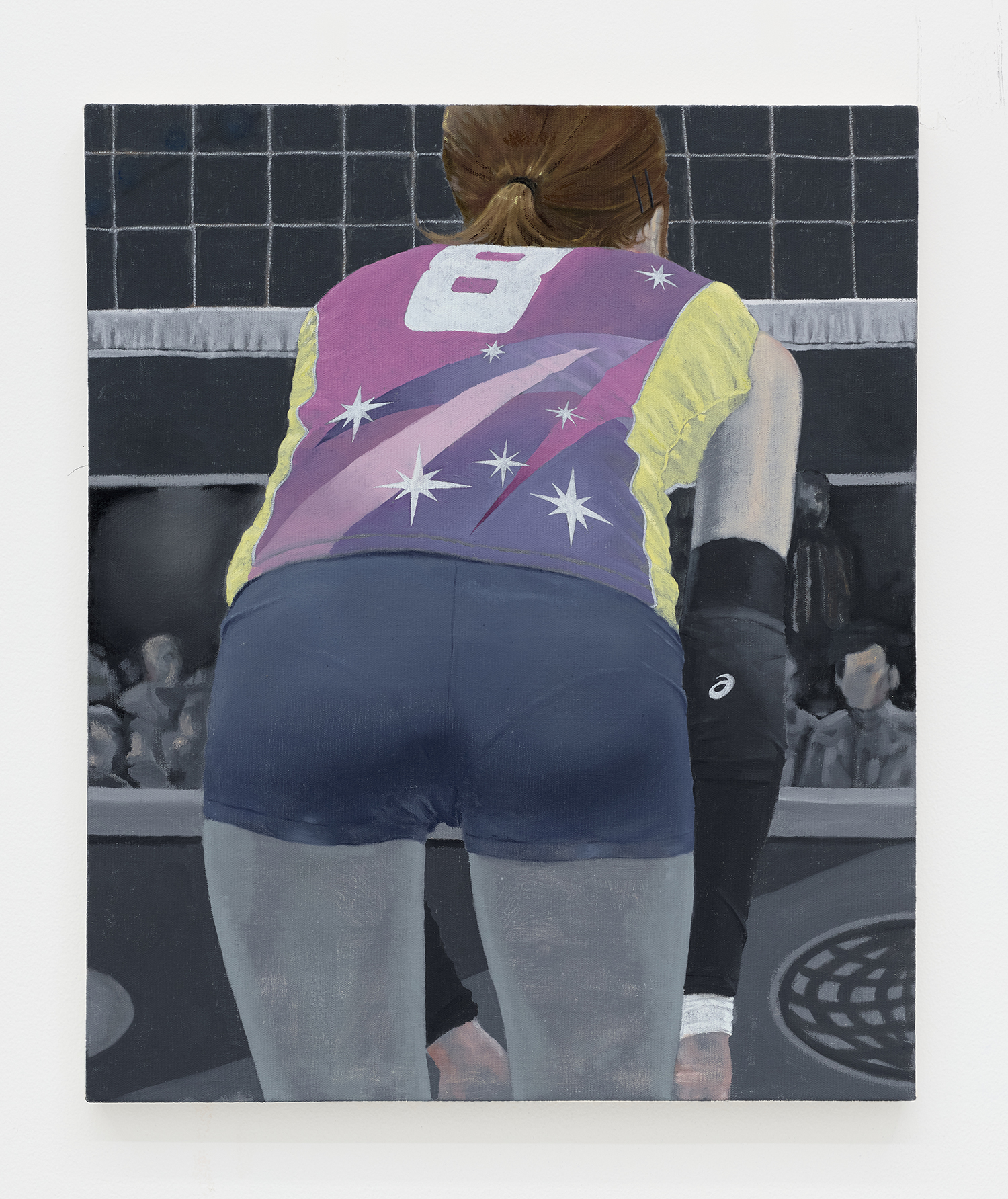
Rachael Bos, No Remorse, 2022, oil on canvas, 24 x 20 inches, 60 x 50 cm.
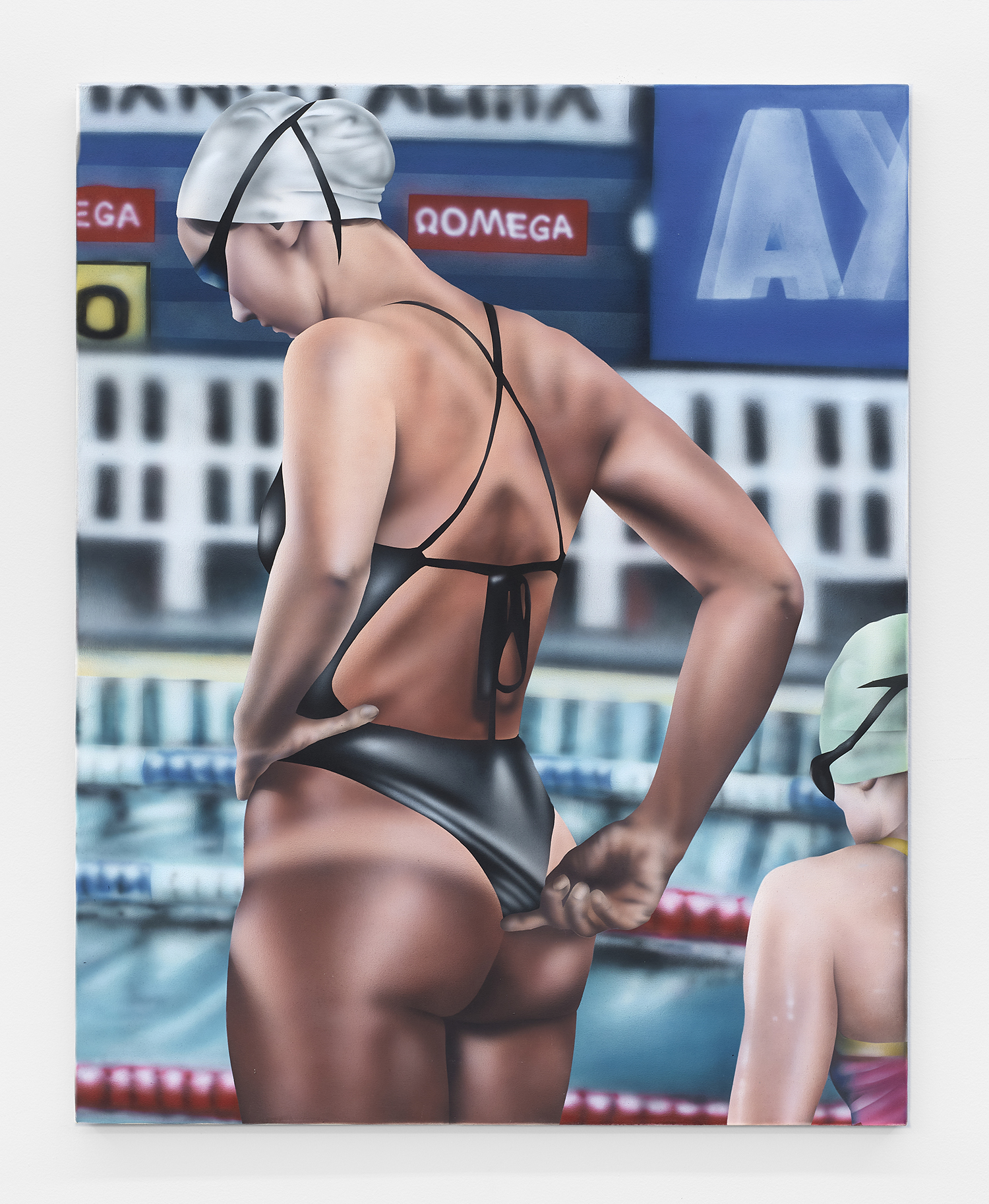
Mattia Guarnera MacCarthy, Dig Deep, 2023, acrylic and airbrush on canvas, 59 x 47 inches, 150 x 120 cm.
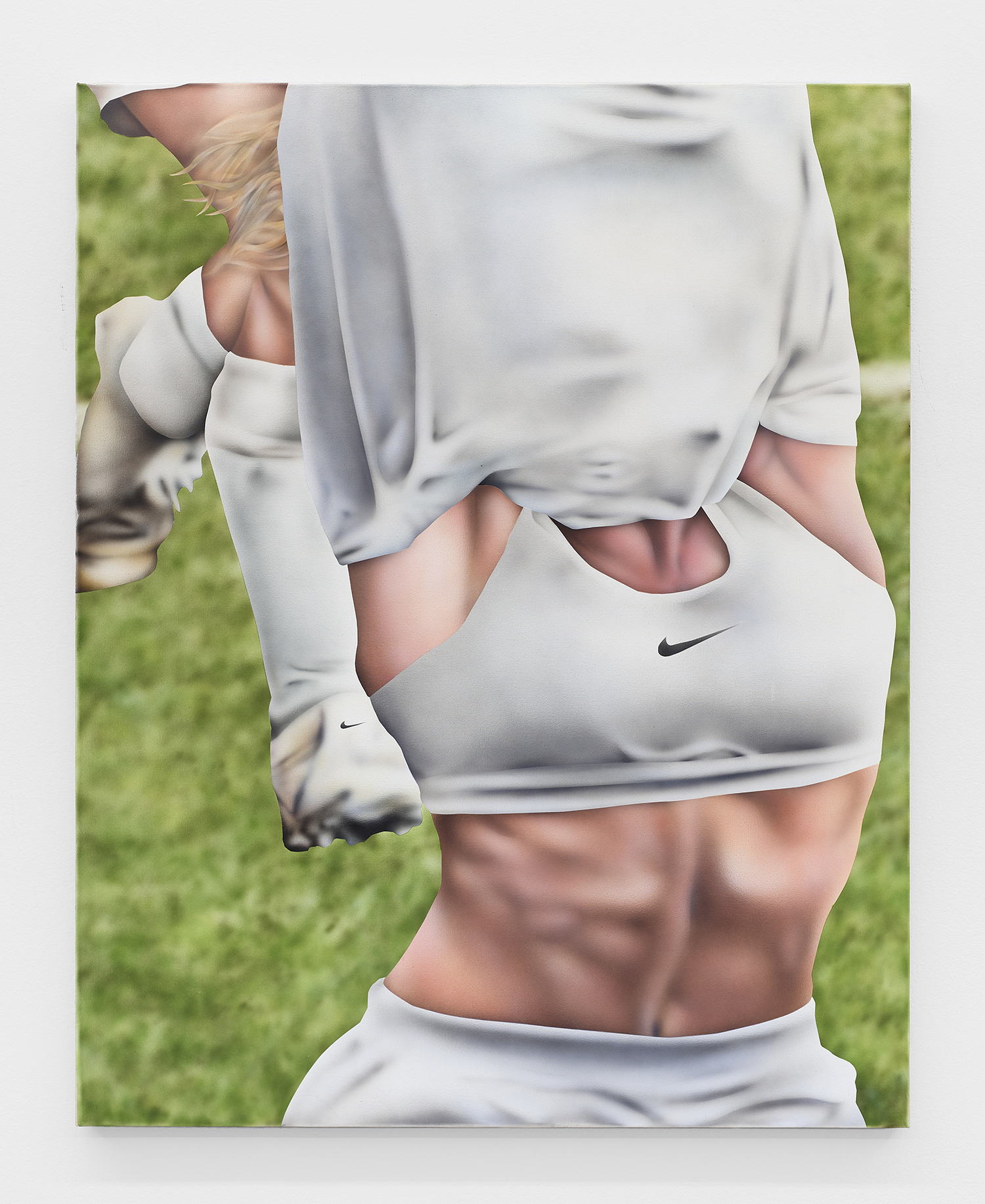
Mattia Guarnera MacCarthy, 1,590%, 2023, acrylic and airbrush on canvas, 57 x 49 inches, 150 x 120 cm.

Andrea Bergart, Court Dance at Dusk, 2023, acrylic on canvas, 73 x 60 inches, 185 x 152 cm.
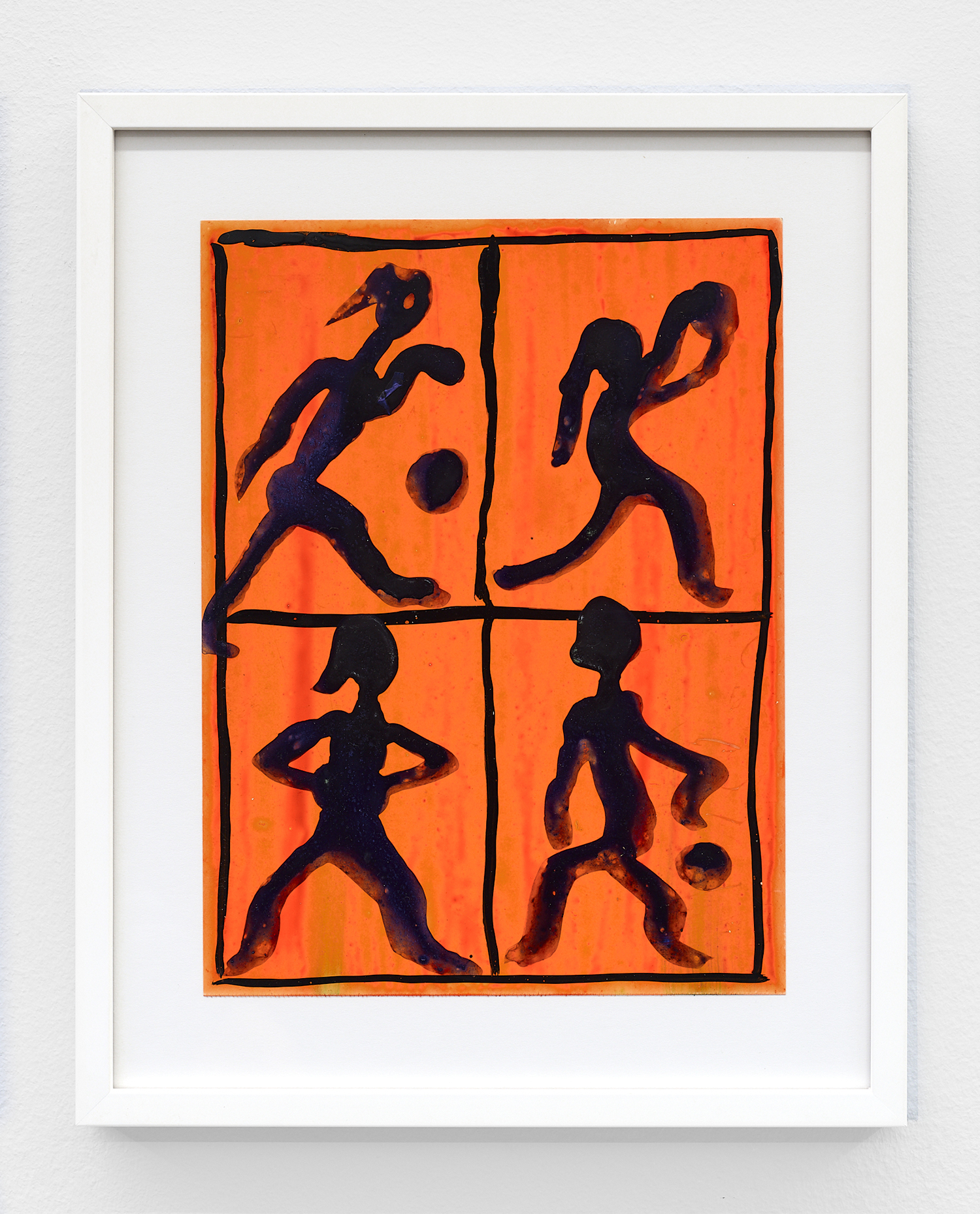
Andrea Bergart, Court Duet (Sunset), 2023, acrylic on yupo, 12 x 9 inches, 30 x 23 cm.
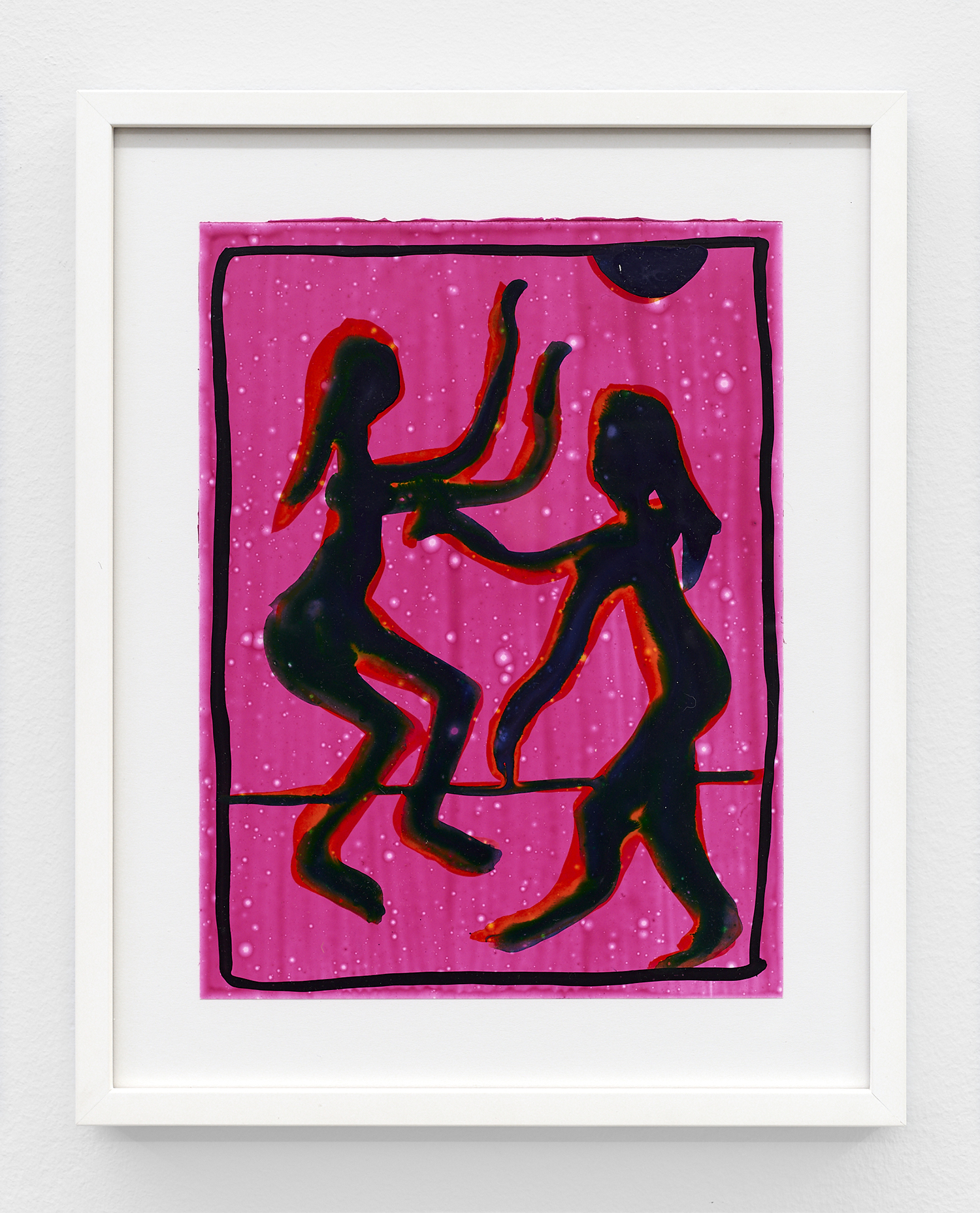
Andrea Bergart, Court Duet (Rose), 2023, acrylic on yupo, 12 x 9 inches, 30 x 23 cm.
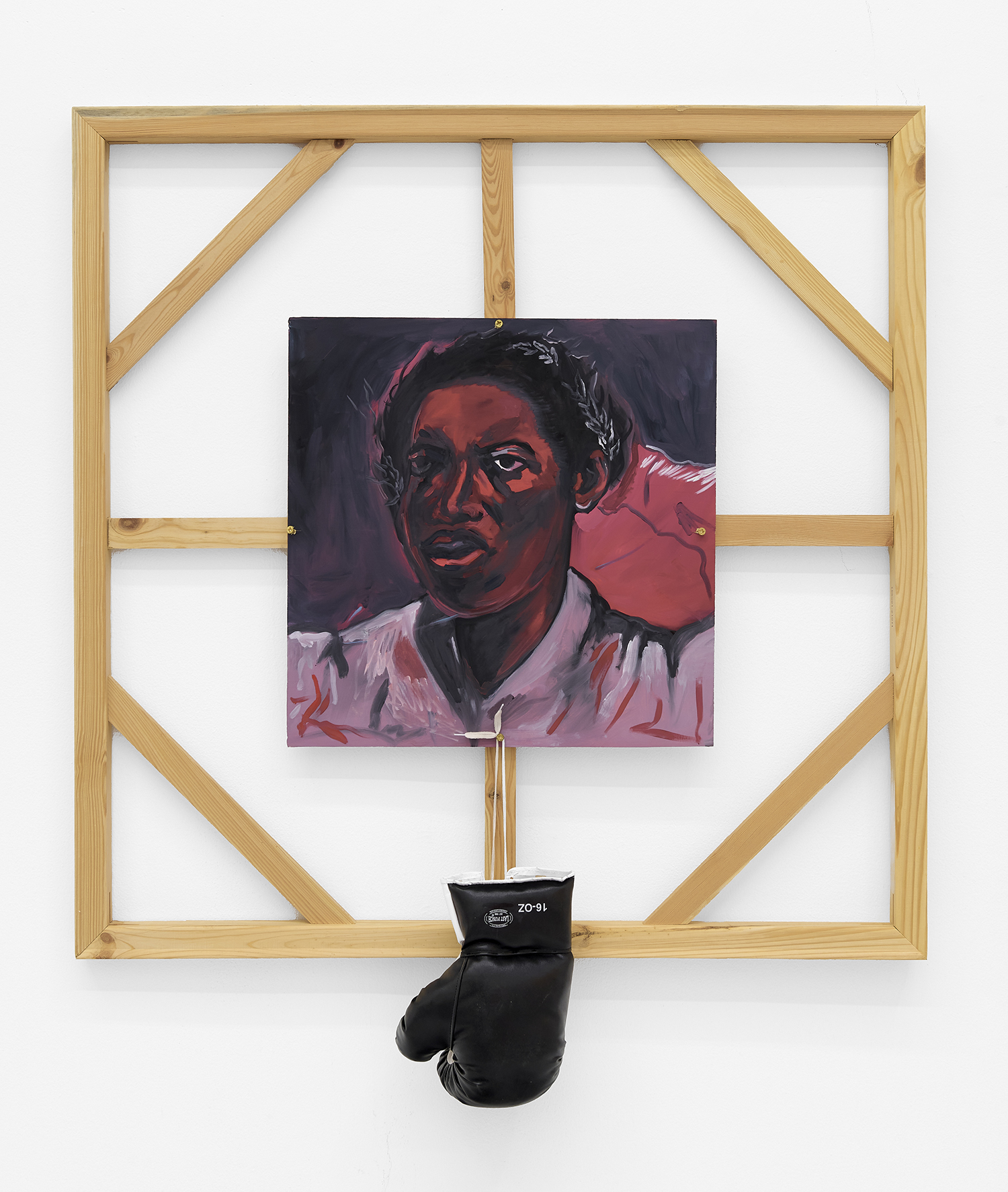
Nikko Washington, The Warrior, 2023, acrylic on canvas, boxing gloves, 40 x 40 inches, 101 x 101 cm.
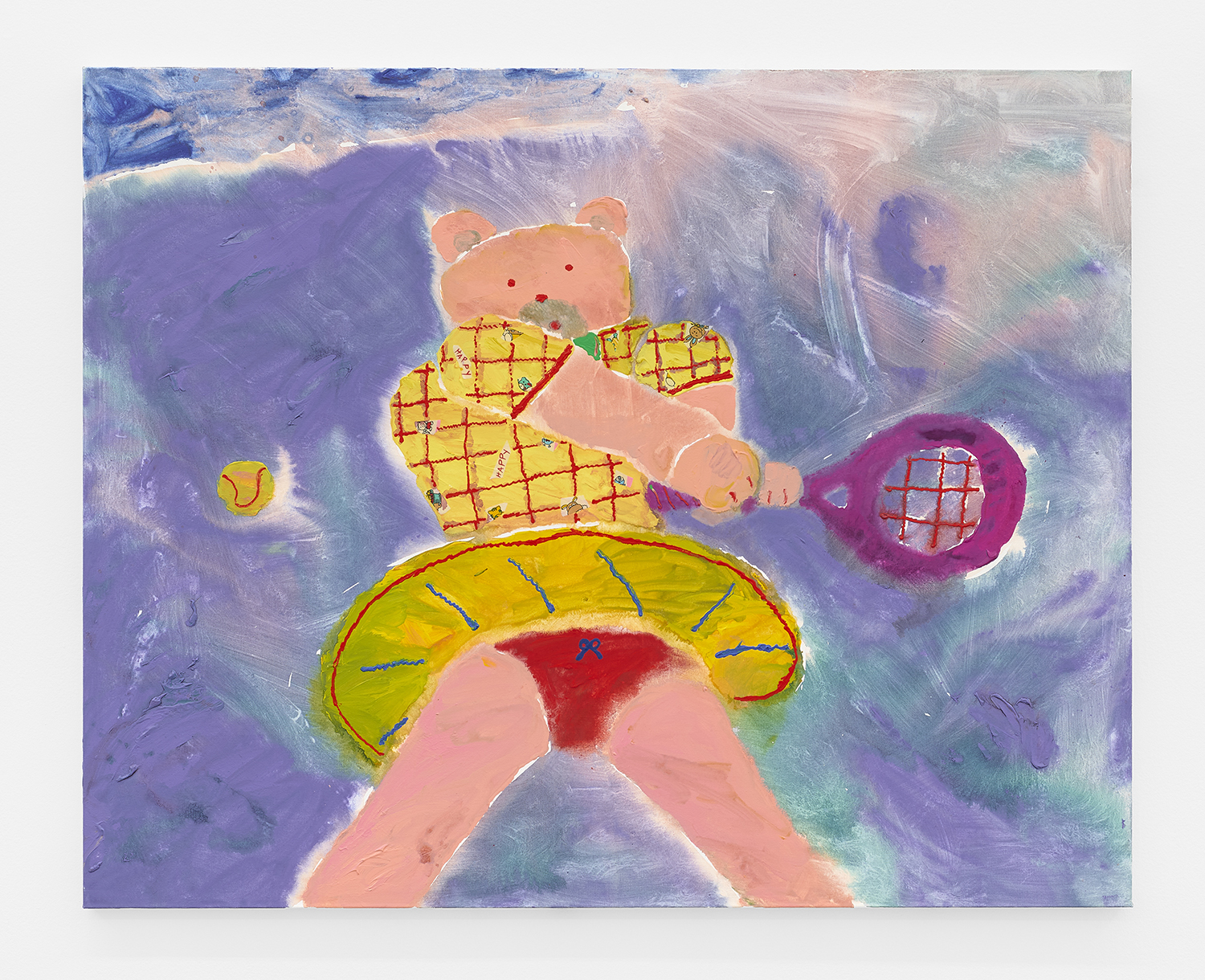
Misaki Kawai, Windy Game, 2023, acrylic and fabric on canvas, 47 x 59 inches, 120 x 150 cm.
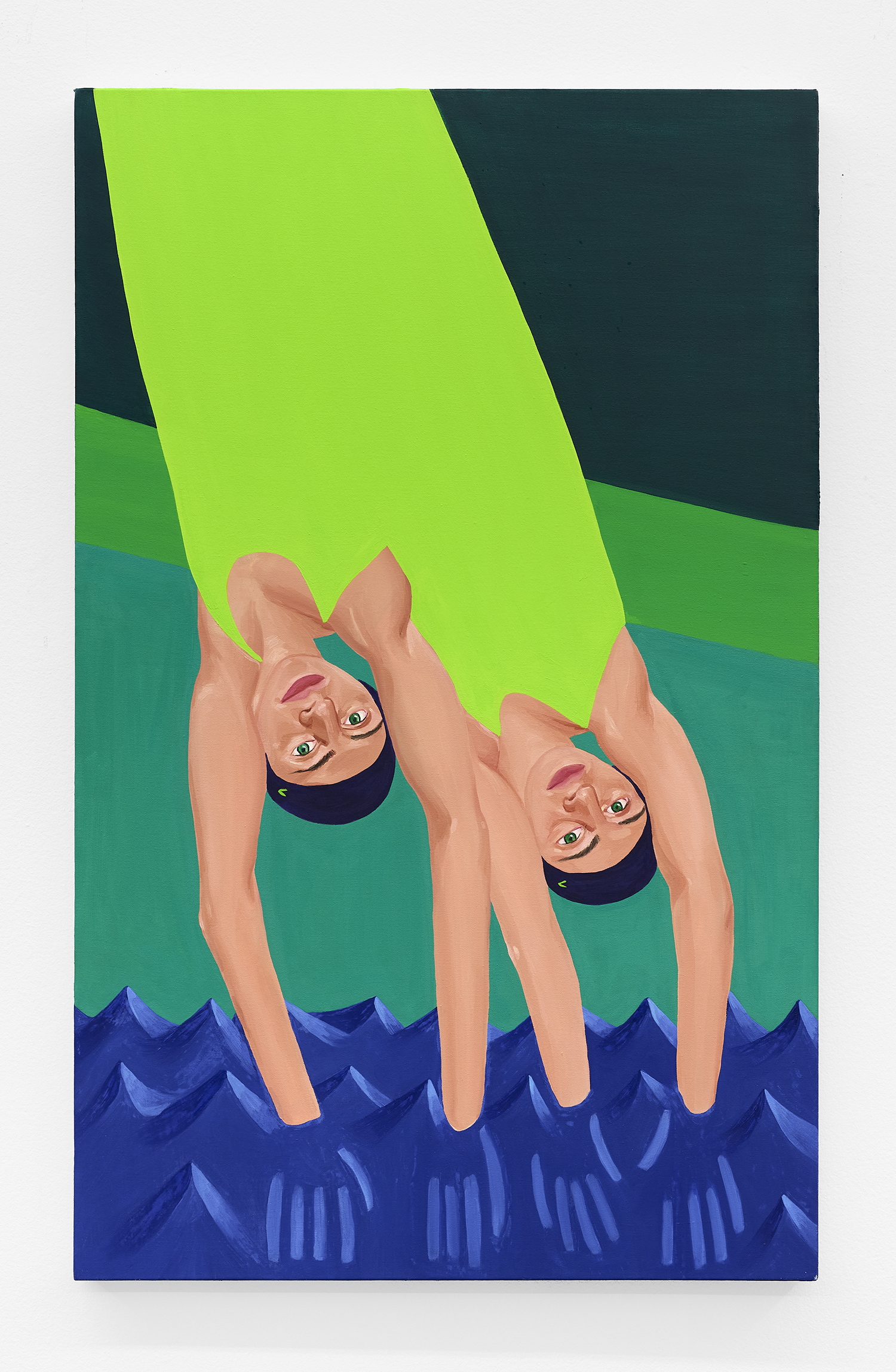
Fay Sanders, Swimmers 2, 2022, oil on canvas, 48 x 30 inches, 122 x 76 cm.
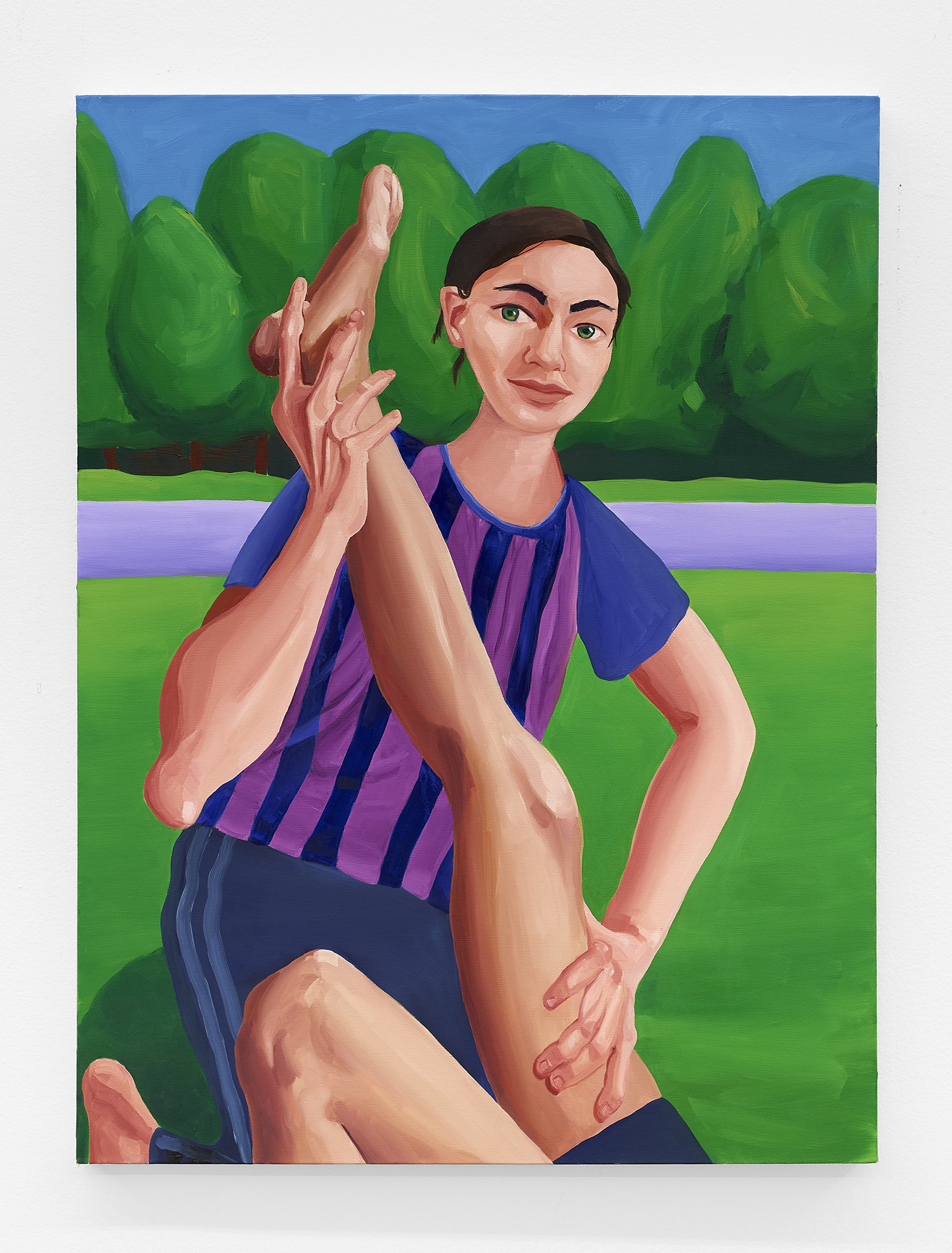
Fay Sanders, Hamstring Stretch, 2020, oil on canvas, 40 x 30 inches, 102 x 76 cm.
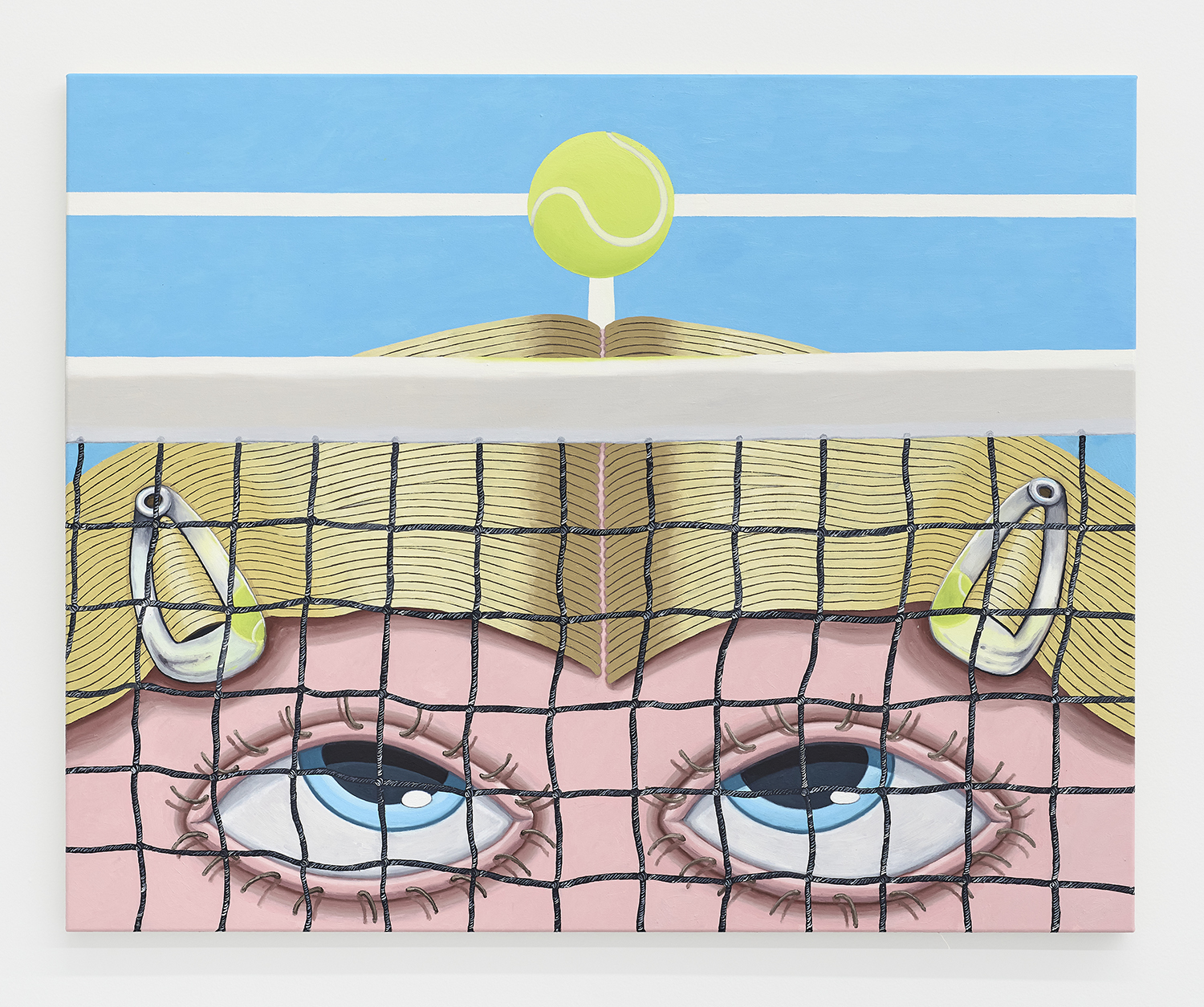
Hamish Chapman, Over The Top, 2023, oil on canvas, 39 x 49 inches, 99 x 124 cm.
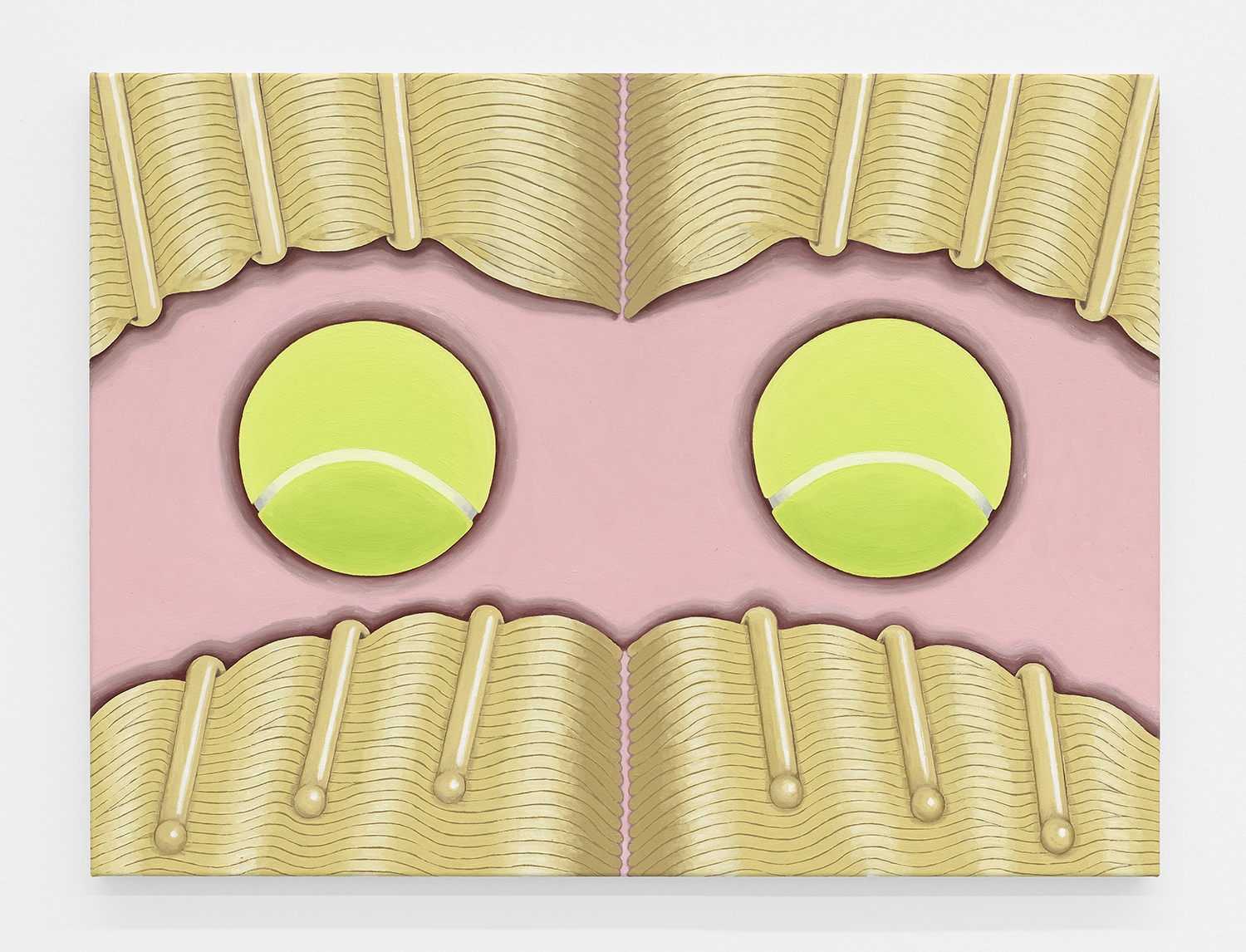
Hamish Chapman, Balls With Kirby Grips, 2023, oil on canvas, 39 x 30 inches, 99 x 75 inches.
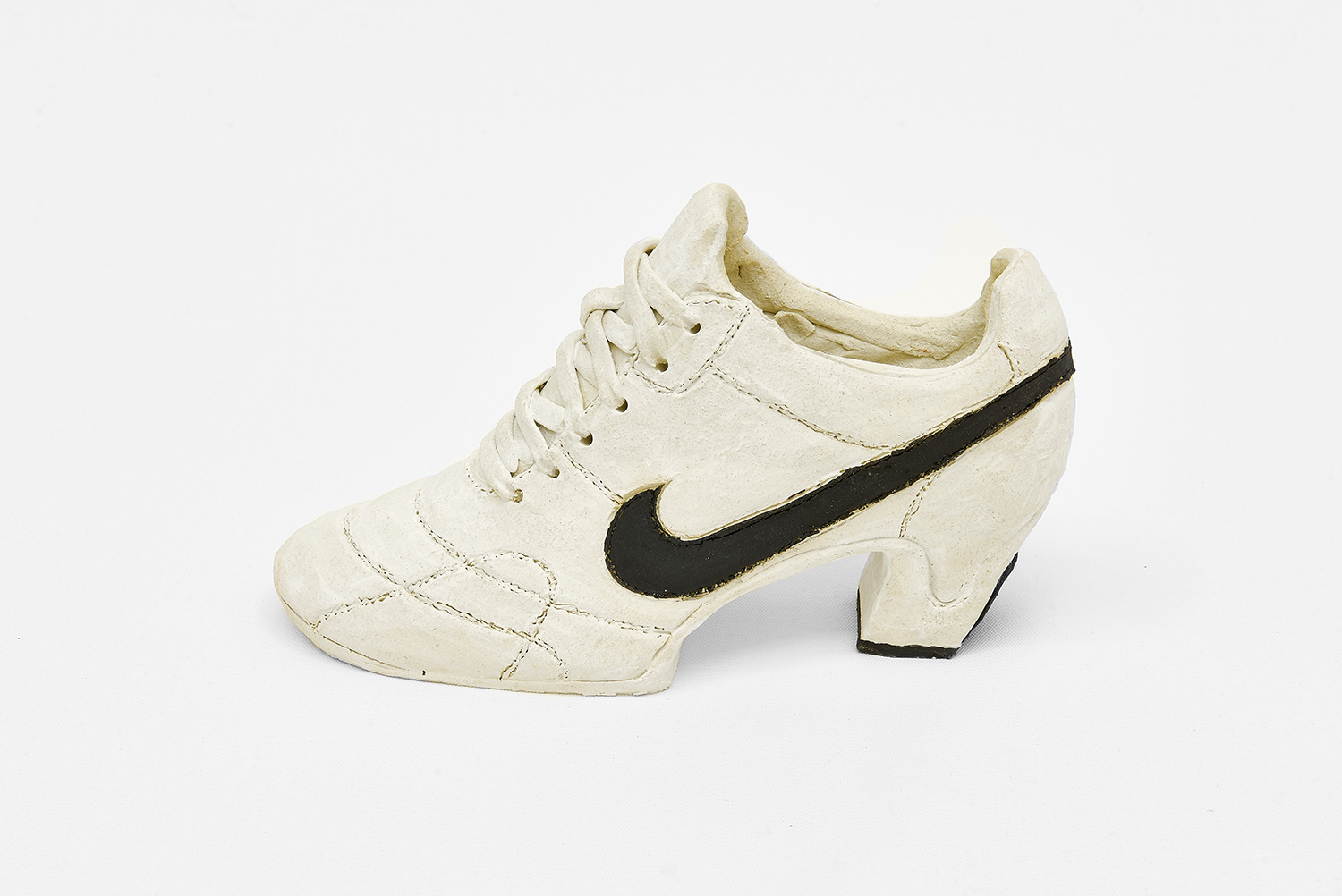
Didi Rojas, You Could Literally Sprint Anywhere If You Really Wanted To., 2022, ceramic, 6.5 x 11 x 4 inches, 16 x 28 x 10 cm.
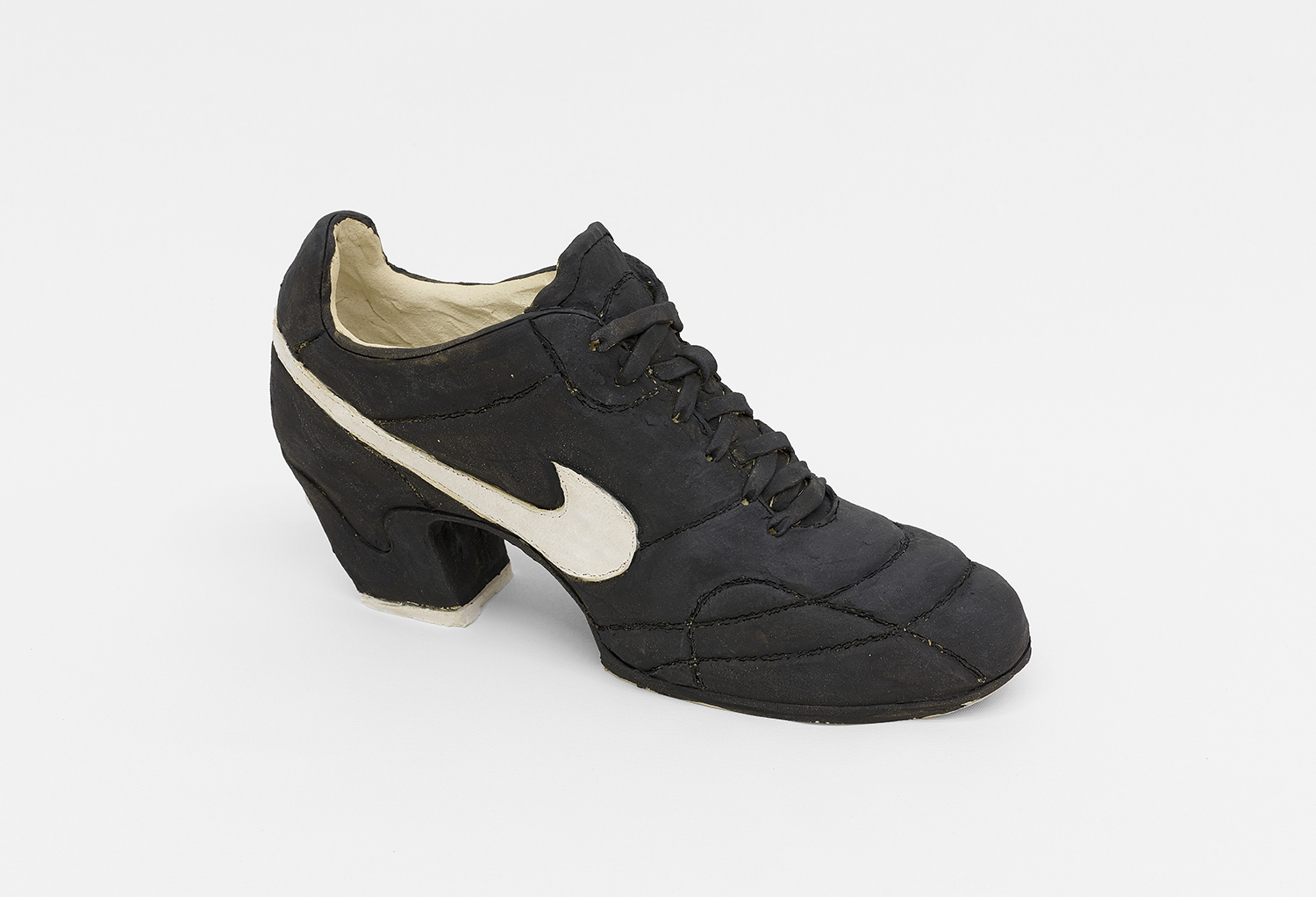
Didi Rojas, That Feminine Urge To Encompass Multitudes., 2022, ceramic, 9 x 16 x 6.5 inches, 23 x 41 x 16 cm.
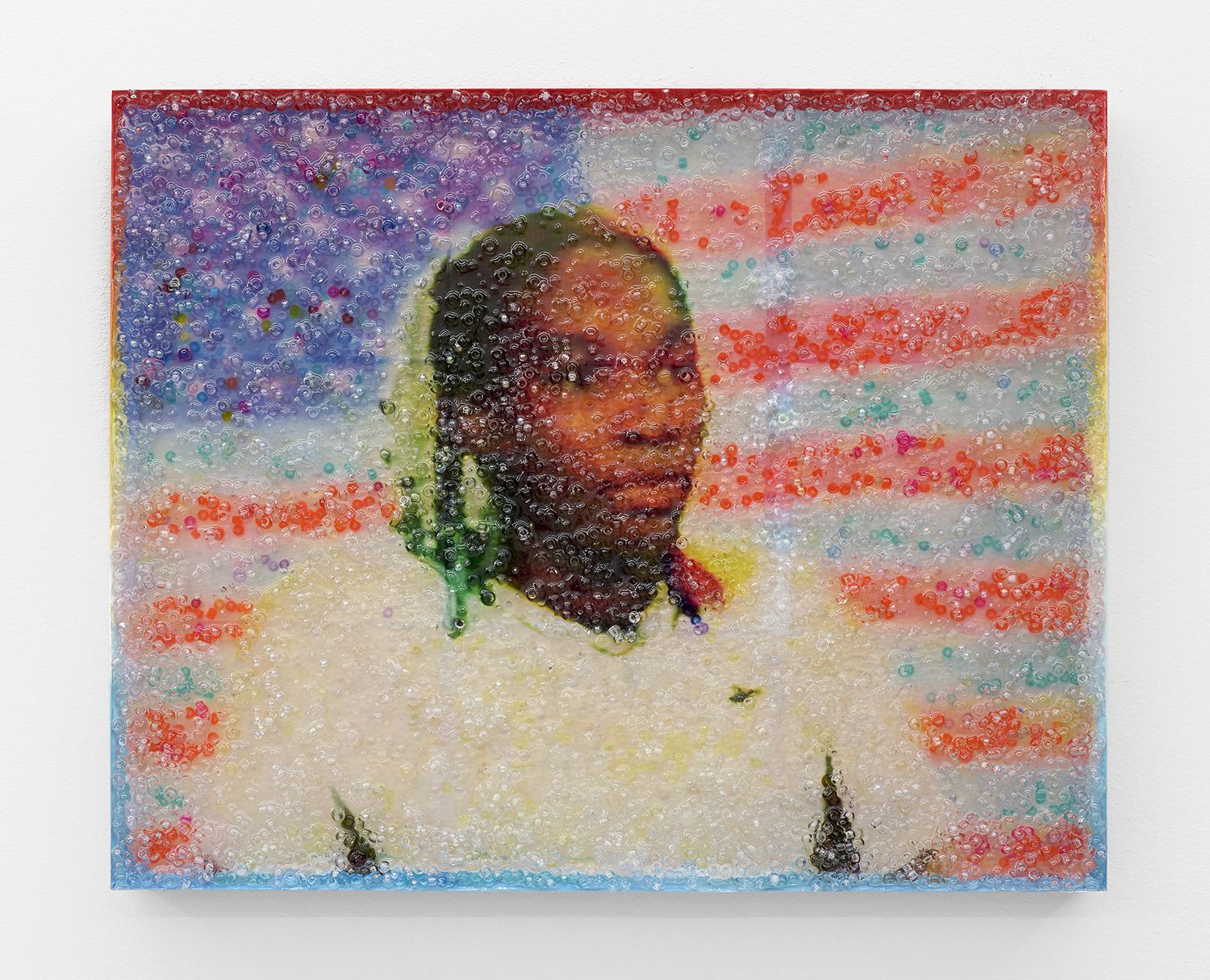
Quinci Baker, Represent (I), 2023, inkjet collage, pony beads, acrylic on cradled wood panel, 24 x 30 x 2.5 inches, 61 x 76 x 6 cm.
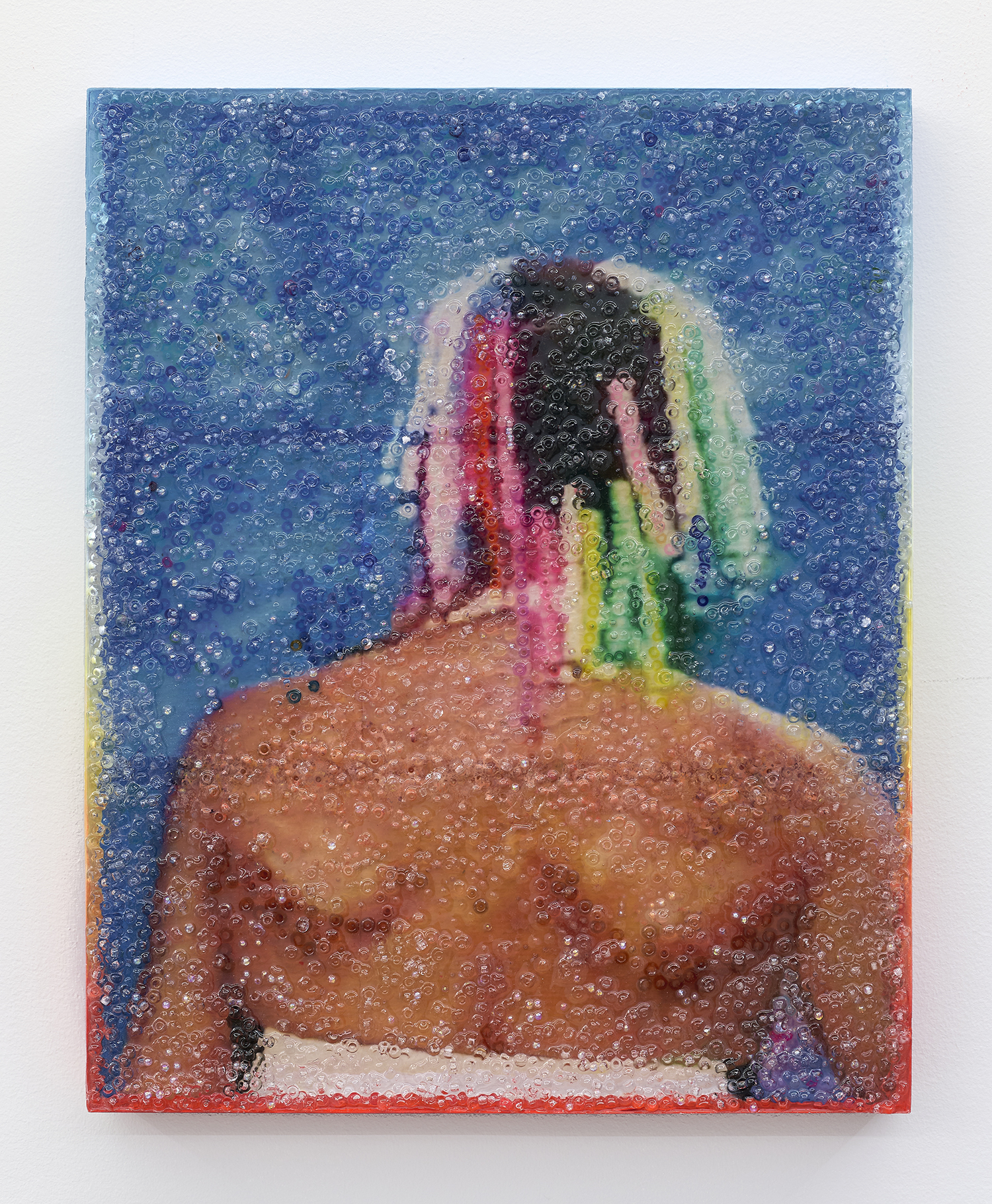
Quinci Baker, Represent (II), 2023, inkjet collage, pony beads, acrylic on cradled wood panel, 24 x 30 x 2.5 inches, 61 x 76 x 6 cm.
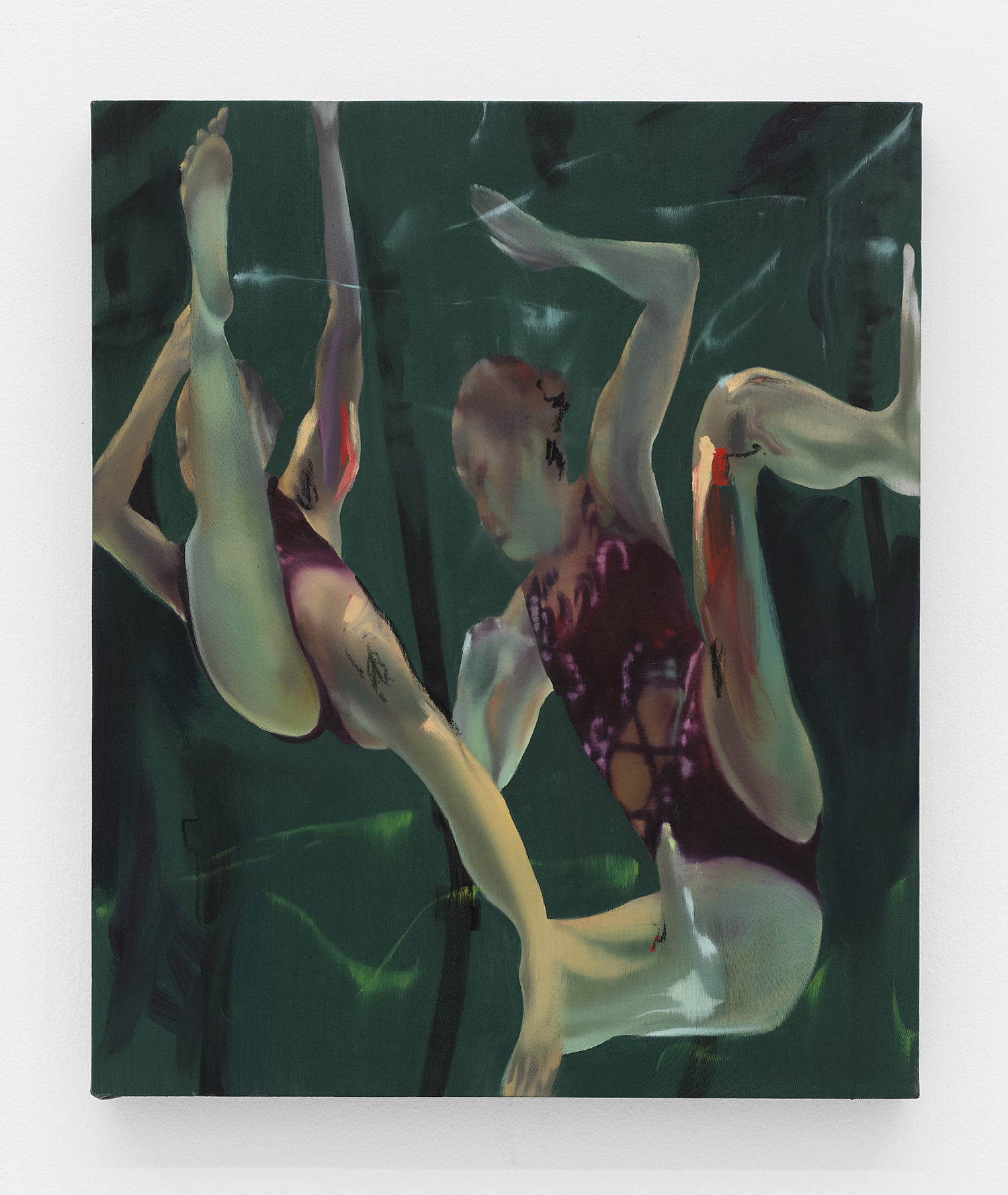
Ellen Hanson, Swimmers 1, 2023, oil and charcoal on jersey, 23.75 x 19.75 inches, 60 x 50 cm.
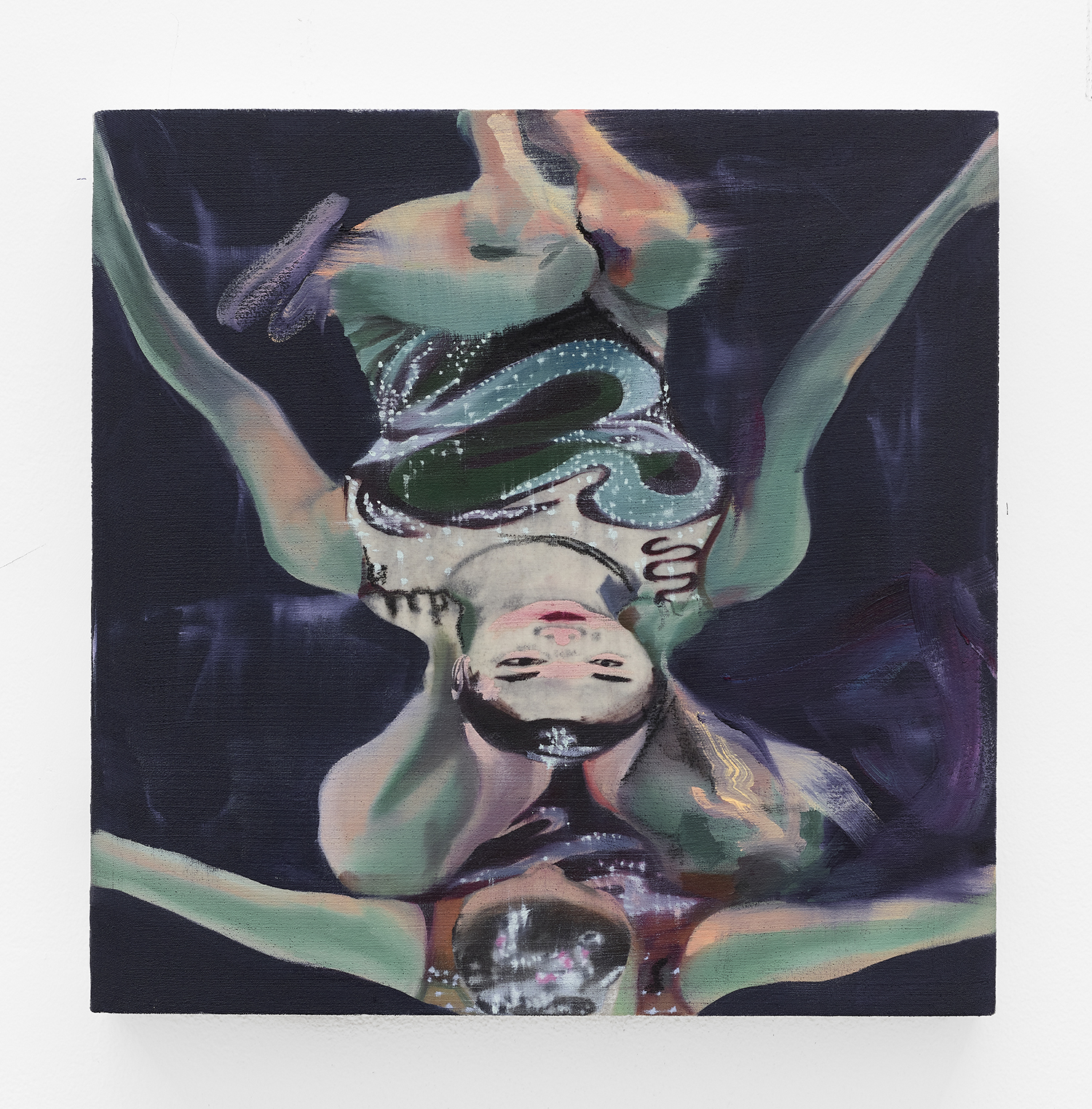
Ellen Hanson, Swimmers 2, 2023, oil and charcoal on jersey, 15.75 x 17.75 inches, 40 x 40 cm.
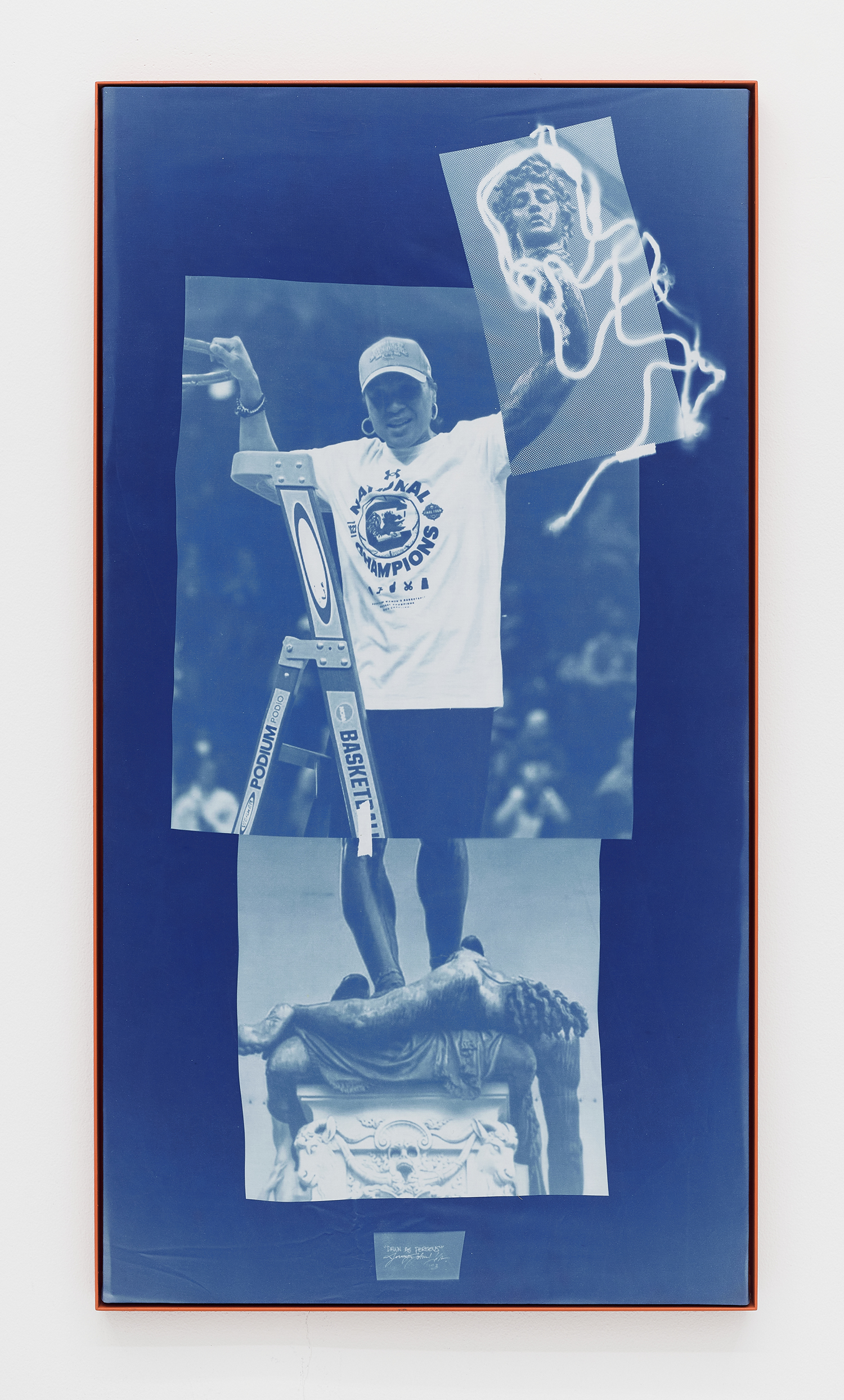
Jeremy John Kaplan, Dawn as Perseus, 2023, cyanotype on cotton in artist frame, 45 x 27 inches, 114 x 68.5 cm.
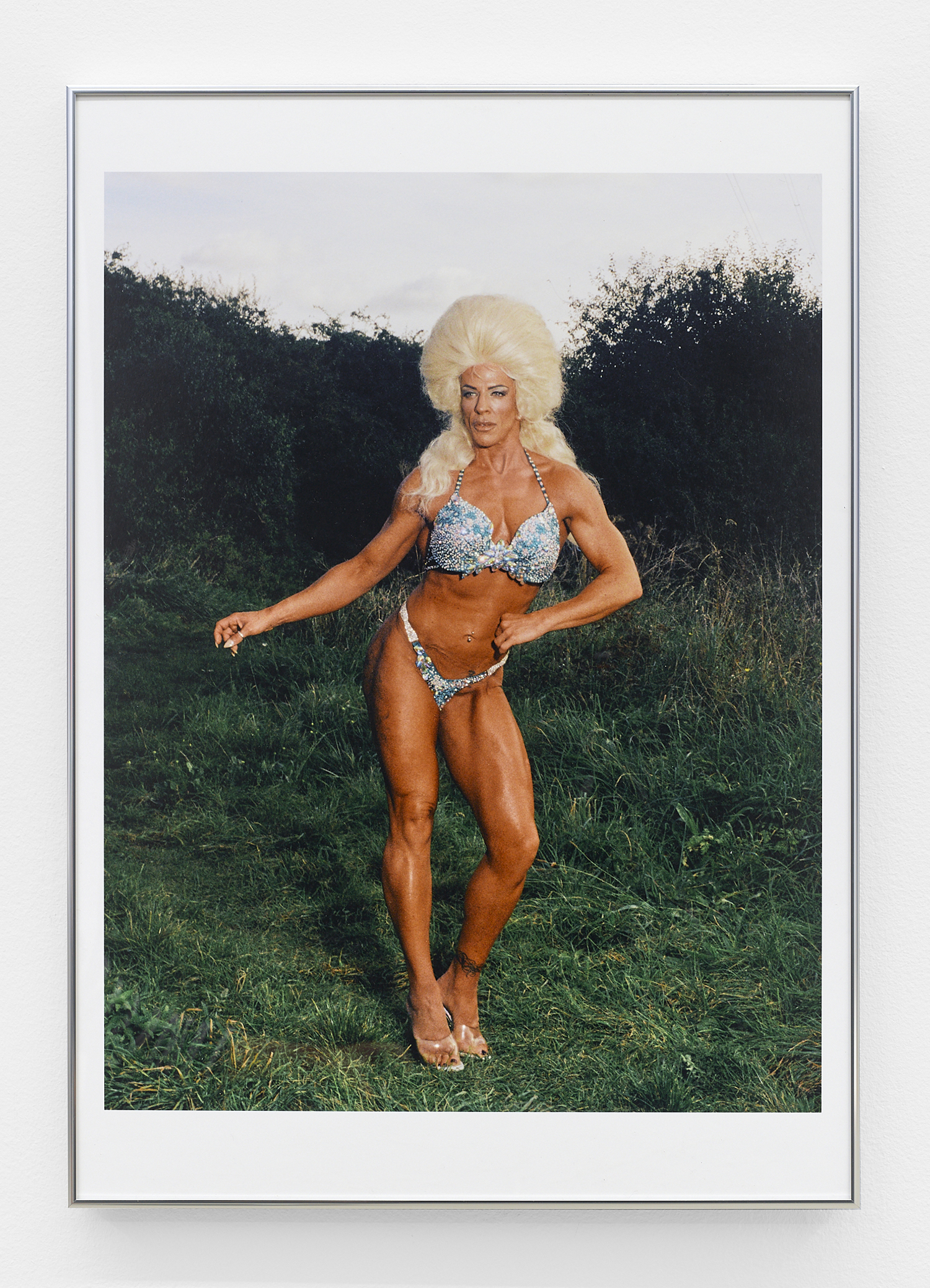
Celia Croft, Andrea, 2019, pigment print on hahnemeuhle photo rag pearl 308, 33 x 23 inches, 84 x 59 cm.
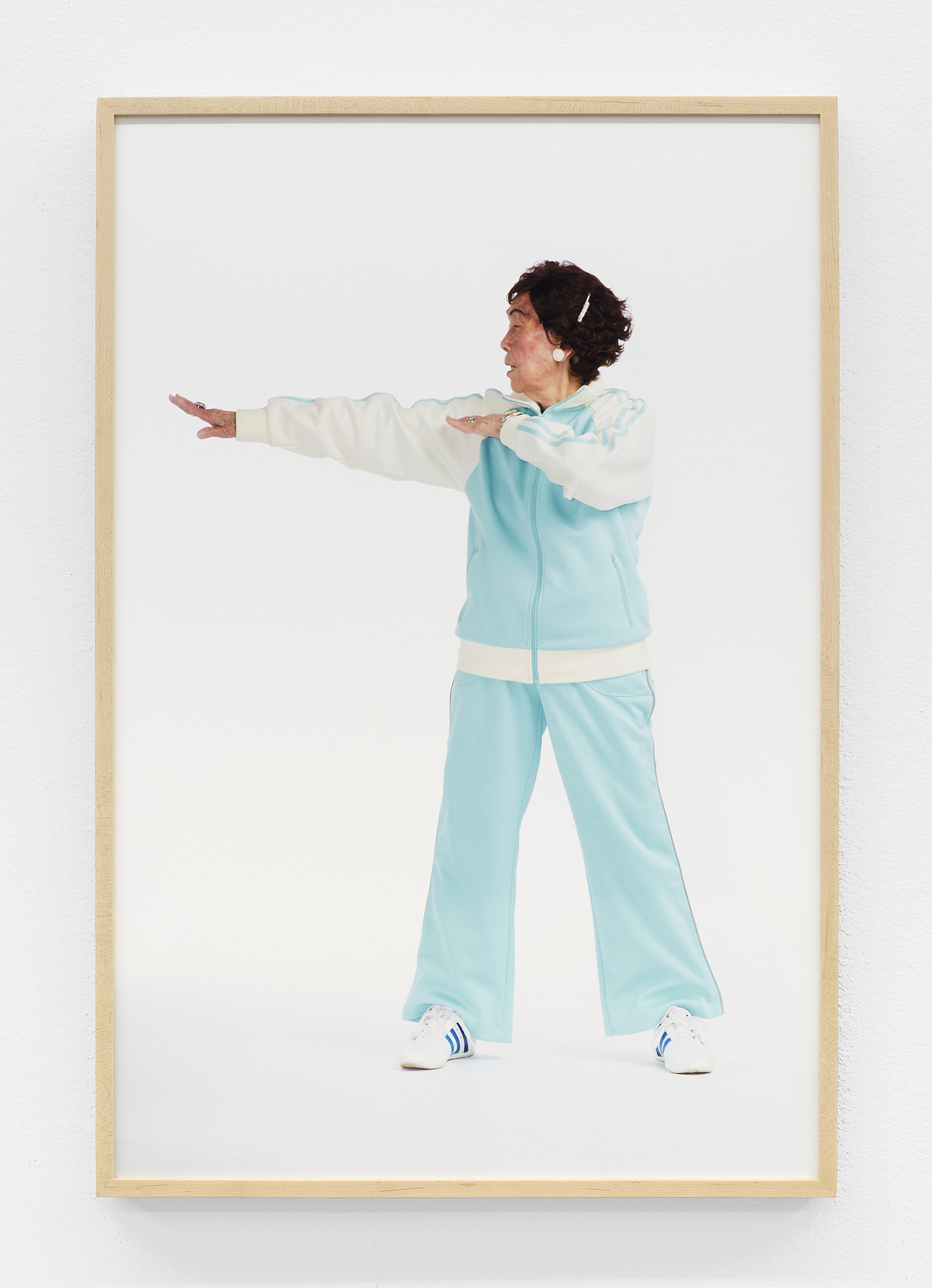
Laura Nova, Activ/ist (movement #19), 2017, hahnemule photo rag print, 24 x 34 inches, 61 x 86 cm.
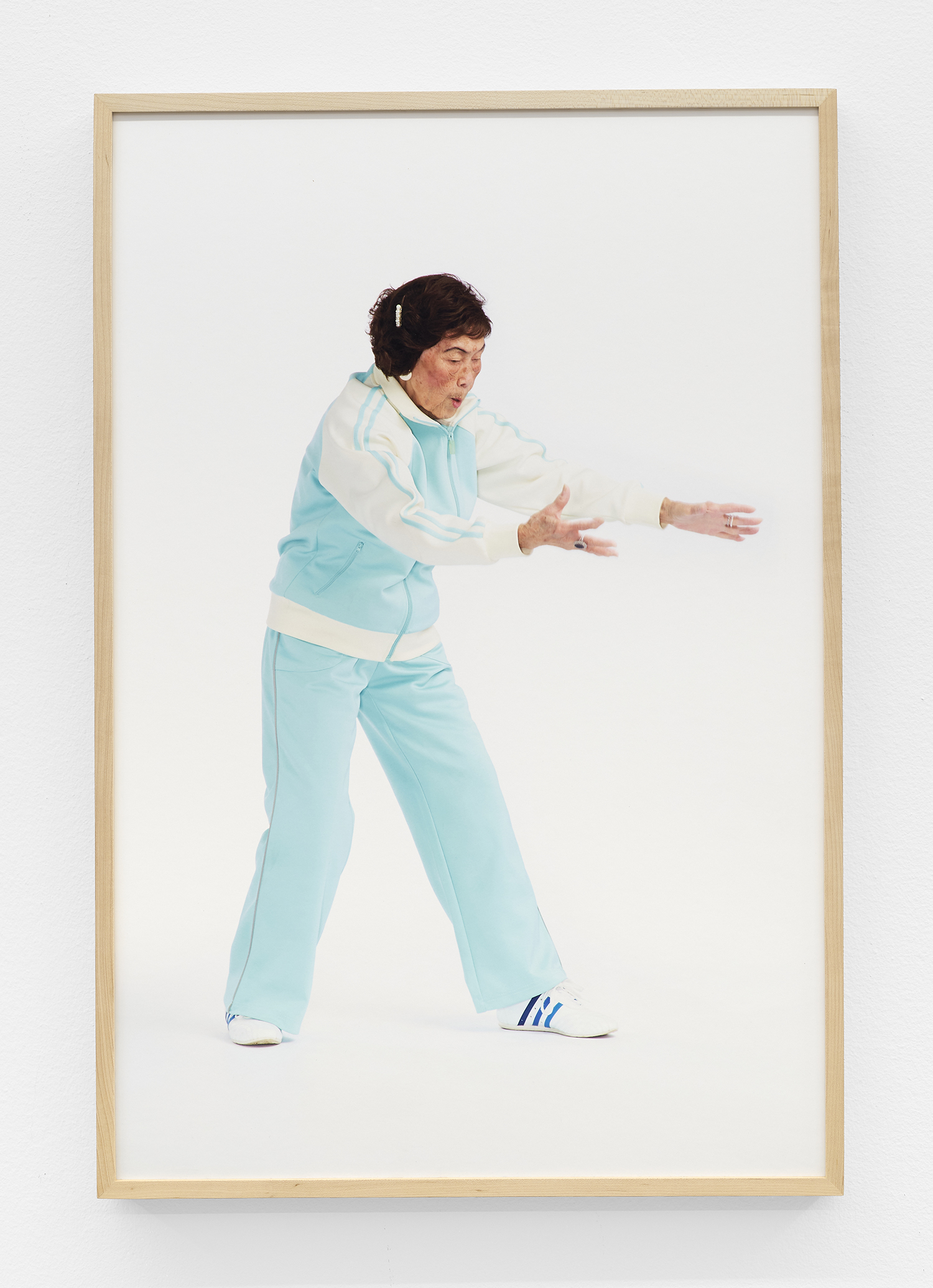
Laura Nova, Activ/ist (movement #14), 2017, hahnemule photo rag print, 24 x 34 inches, 61 x 86 cm.
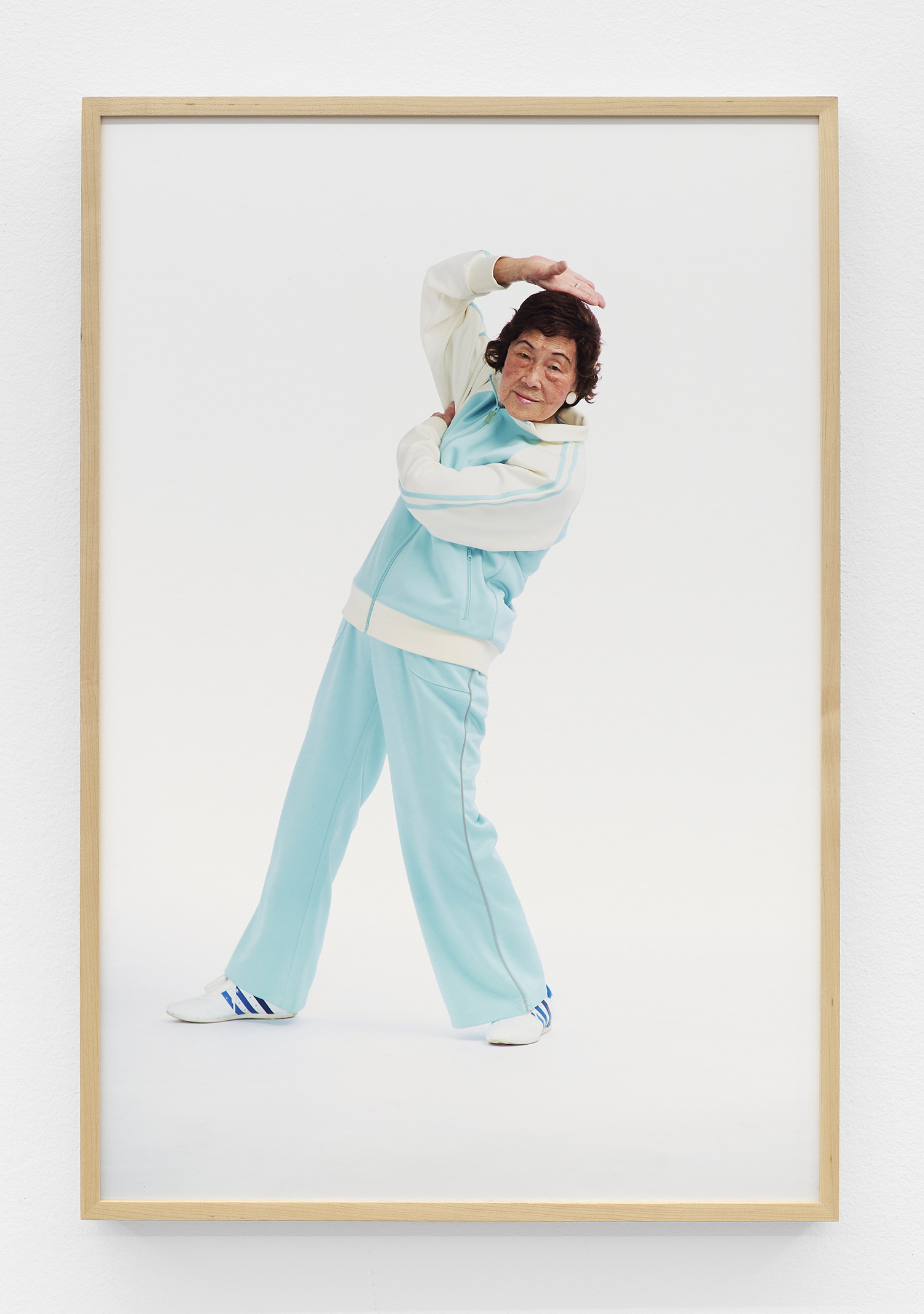
Laura Nova, Activ/ist (movement #31), 2017, hahnemule photo rag print, 24 x 34 inches, 61 x 86 cm.
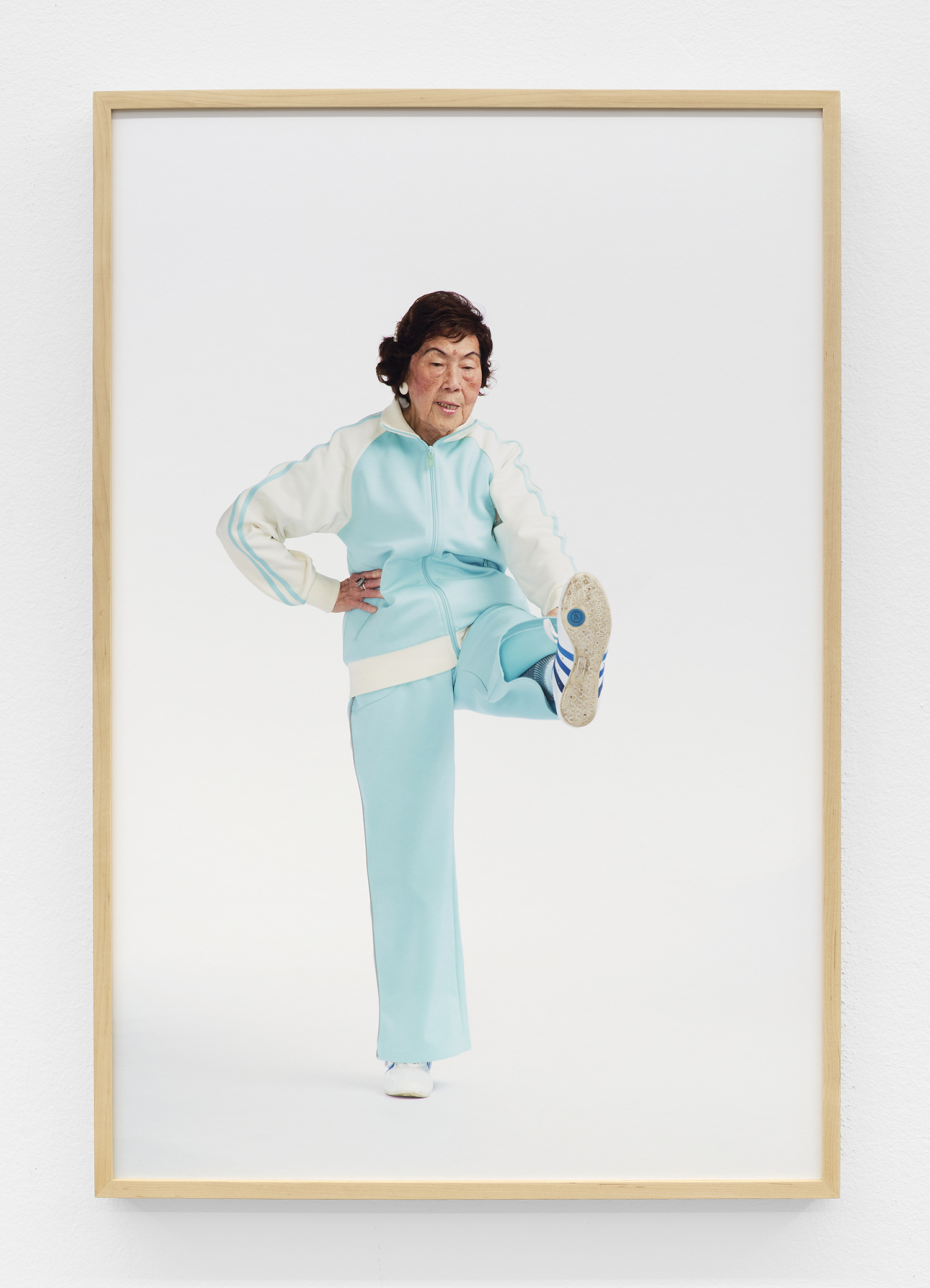
Laura Nova, Activ/ist (movement #22), 2017, hahnemule photo rag print, 24 x 34 inches, 61 x 86 cm.
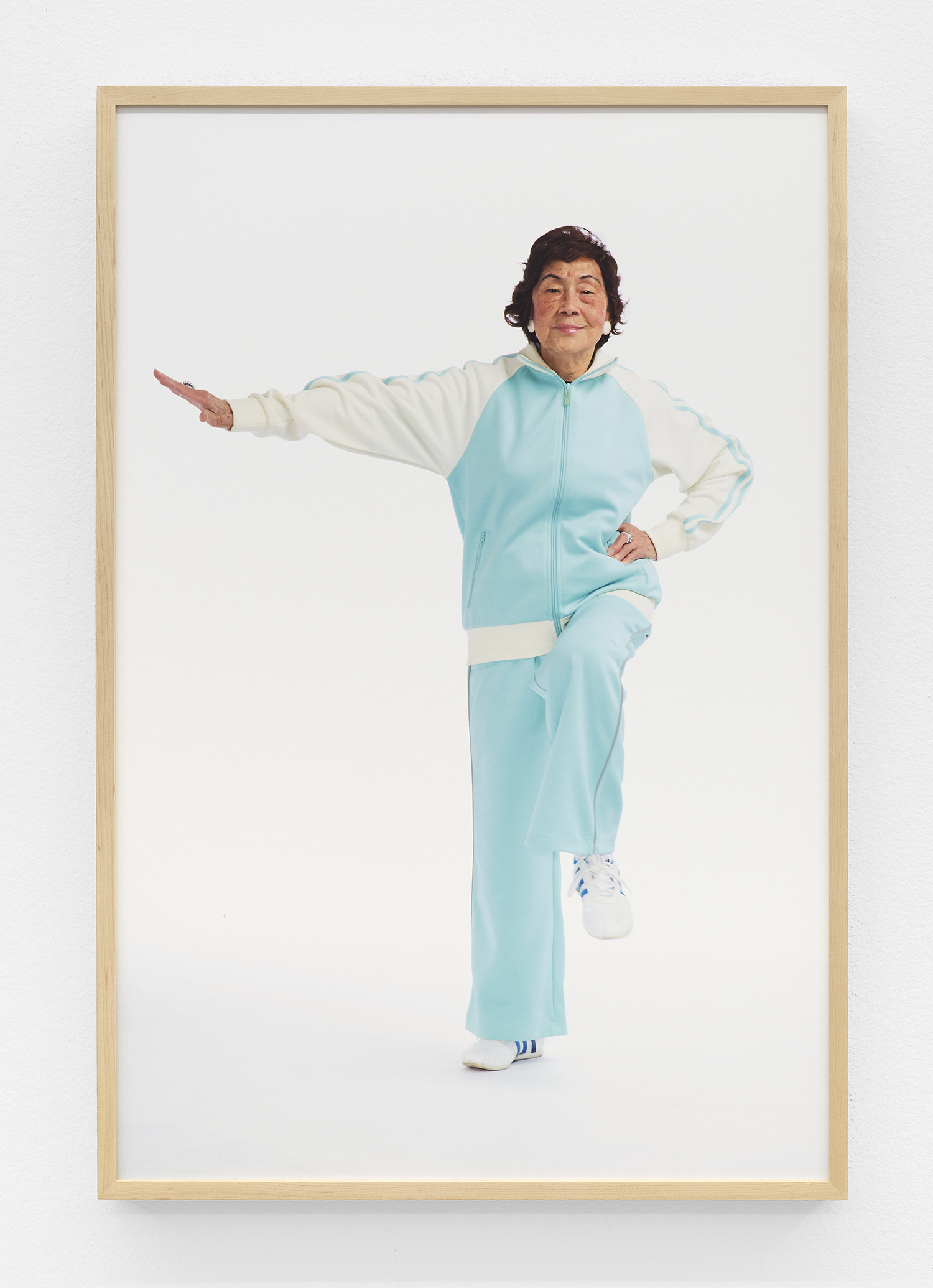
Laura Nova, Activ/ist (movement #35), 2017, hahnemule photo rag print, 24 x 34 inches, 61 x 86 cm.
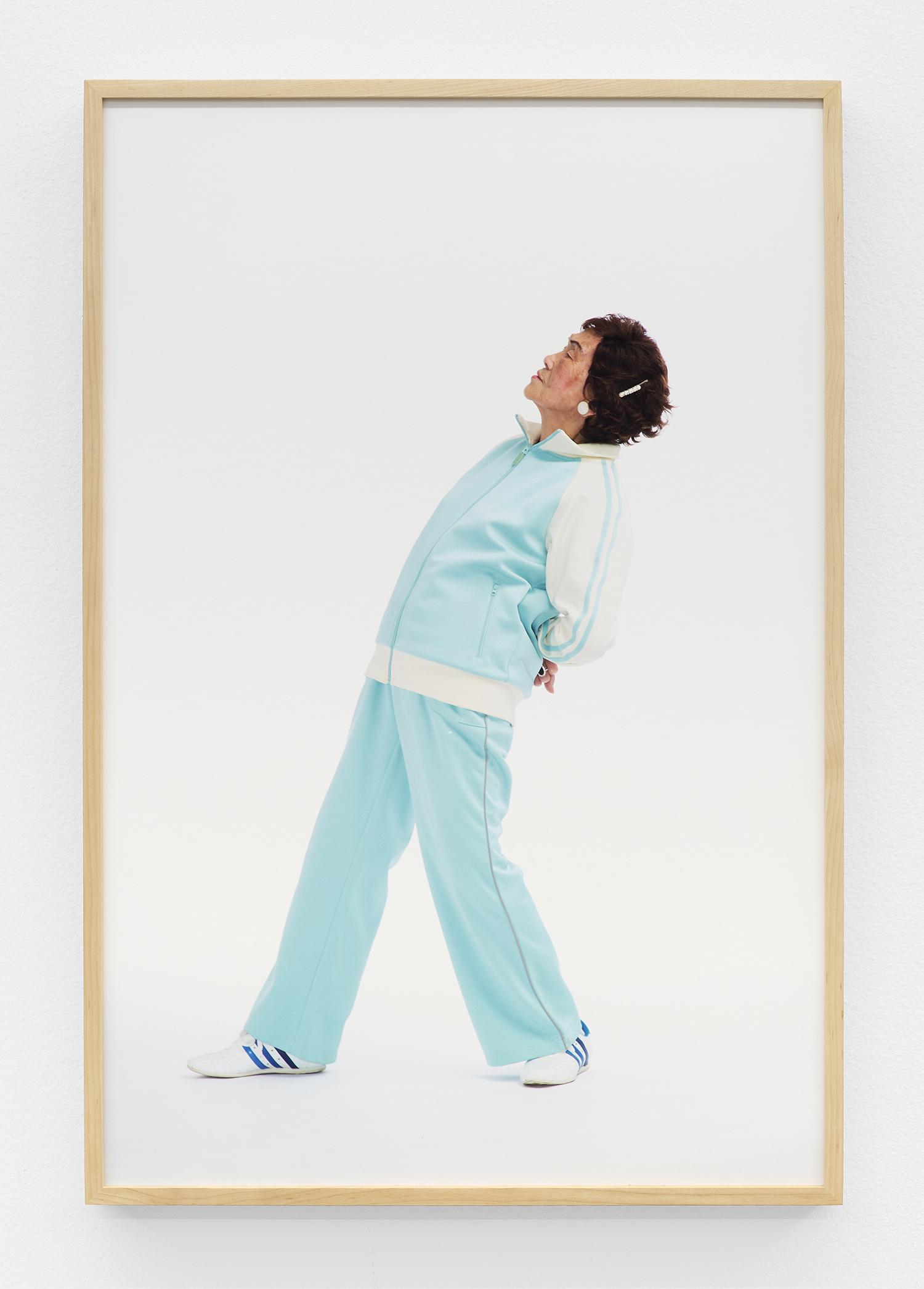
Laura Nova, Activ/ist (movement #33), 2017, hahnemule photo rag print, 24 x 34 inches, 61 x 86 cm.
